1.
BC05
Braun
To keep us on time for our flights and checkouts, we’re turning to the BC05 by Braun, a quartz precision travel clock created by German designer Dietrich Lubs in 1995. This battery-powered, analogue alarm clock provides the essentials while you’re on the road and its protective lid is equipped with a world time chart to help you navigate across time zones. Paired with an otherwise monochrome palette, the red “off” and green “snooze” buttons foster intuitive use and are in keeping with the colour schemes of many other Braun products.

With its sleek silhouette and emphasis on functionality, the BC05 exemplifies the kind of utilitarian design that we have come to associate with Braun, pioneered by the German manufacturing company in the 1980s by industrial designer Dieter Rams. Our favourite detail? The quiet clock can leap into action with a crescendo alarm that gradually gets louder, ensuring that even the deepest of sleepers can be roused. Now, that’s what we call sound design.
2.
Nexpect Coffee
Tokyo
Barista-turned-businessman Kenji Kojima wanted to get back to doing what he loves best: making coffee. After helping Oslo-based Fuglen to set up in Tokyo, he recently opened Nexpect Coffee in a former newspaper shop on a quiet street in Kodenmacho in Nihonbashi. Customers order and pay on a screen by the counter, freeing baristas to focus on making great coffee.
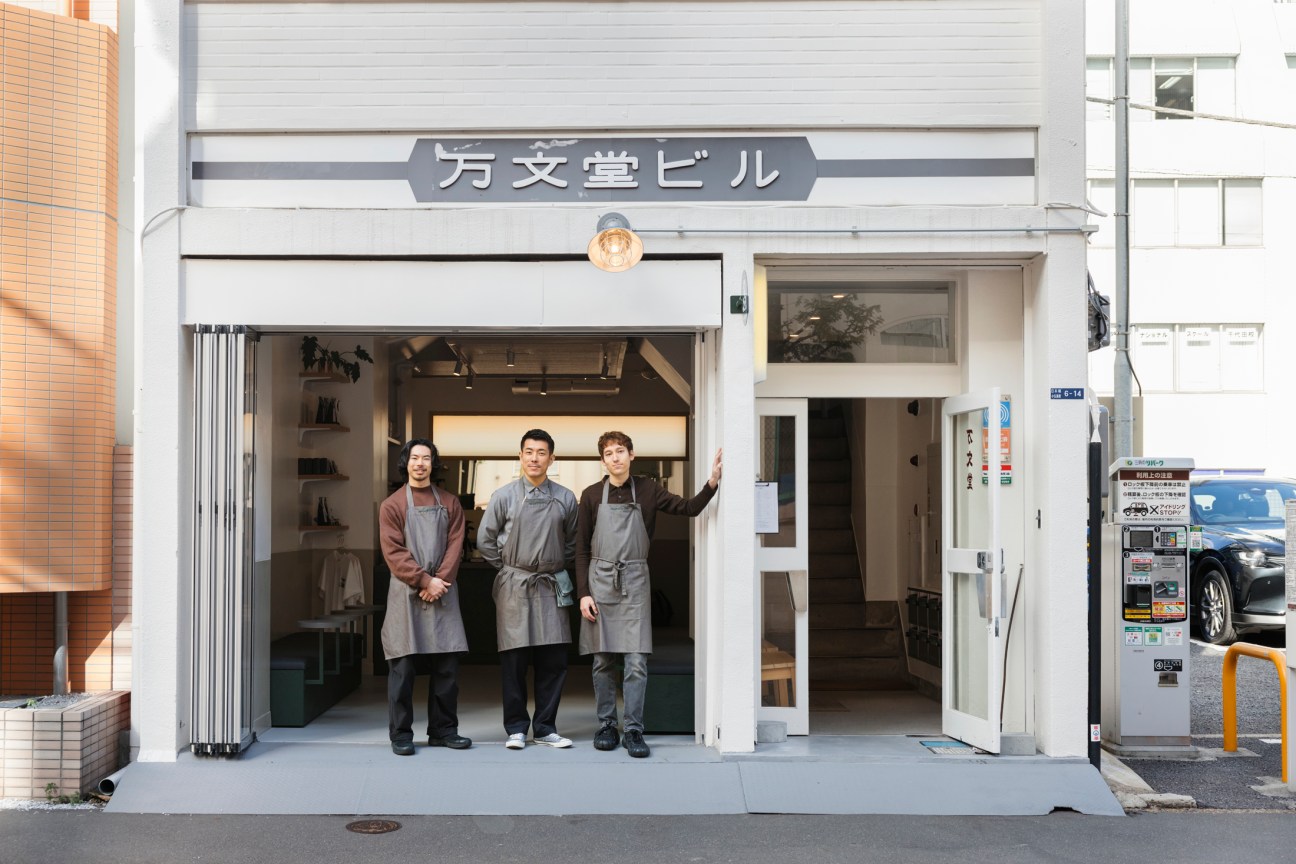

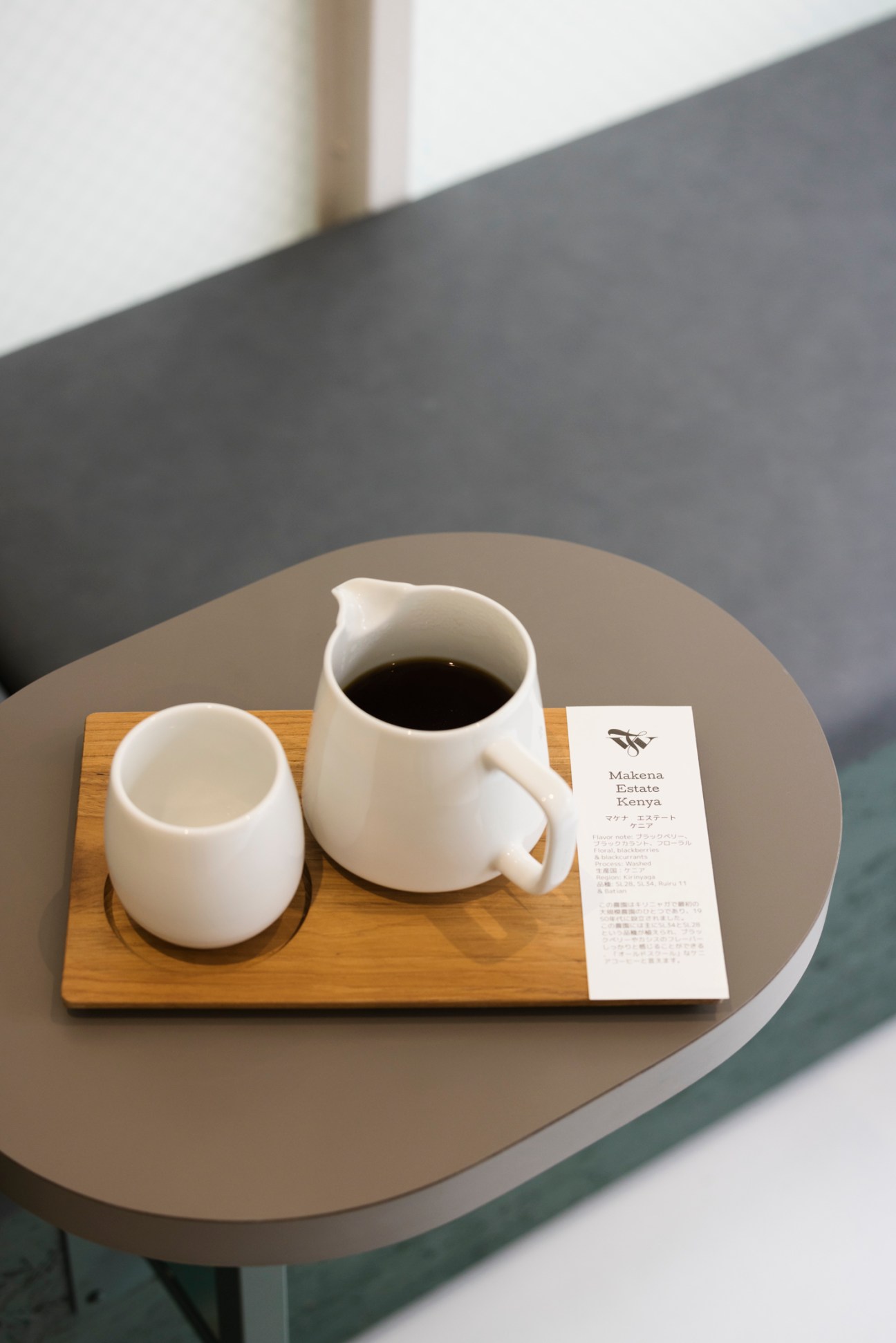
Nexpect even has its own robot mascot, Neku Yukun. “It’s good to be in a new place,” says Kojima, who has moved to the neighbourhood, which he finds a refreshing change from Shibuya. The area is warming up with new shops and restaurants, and many coffee pilgrims are making their way to see what Kojima, a renowned figure in the Tokyo bean scene, is up to. A roasting machine is on order and, if all goes well, this will be the first of several Nexpect coffee shops.
nexpect.theshop.jp
3.
Steinach Townhouse
Merano, Italy
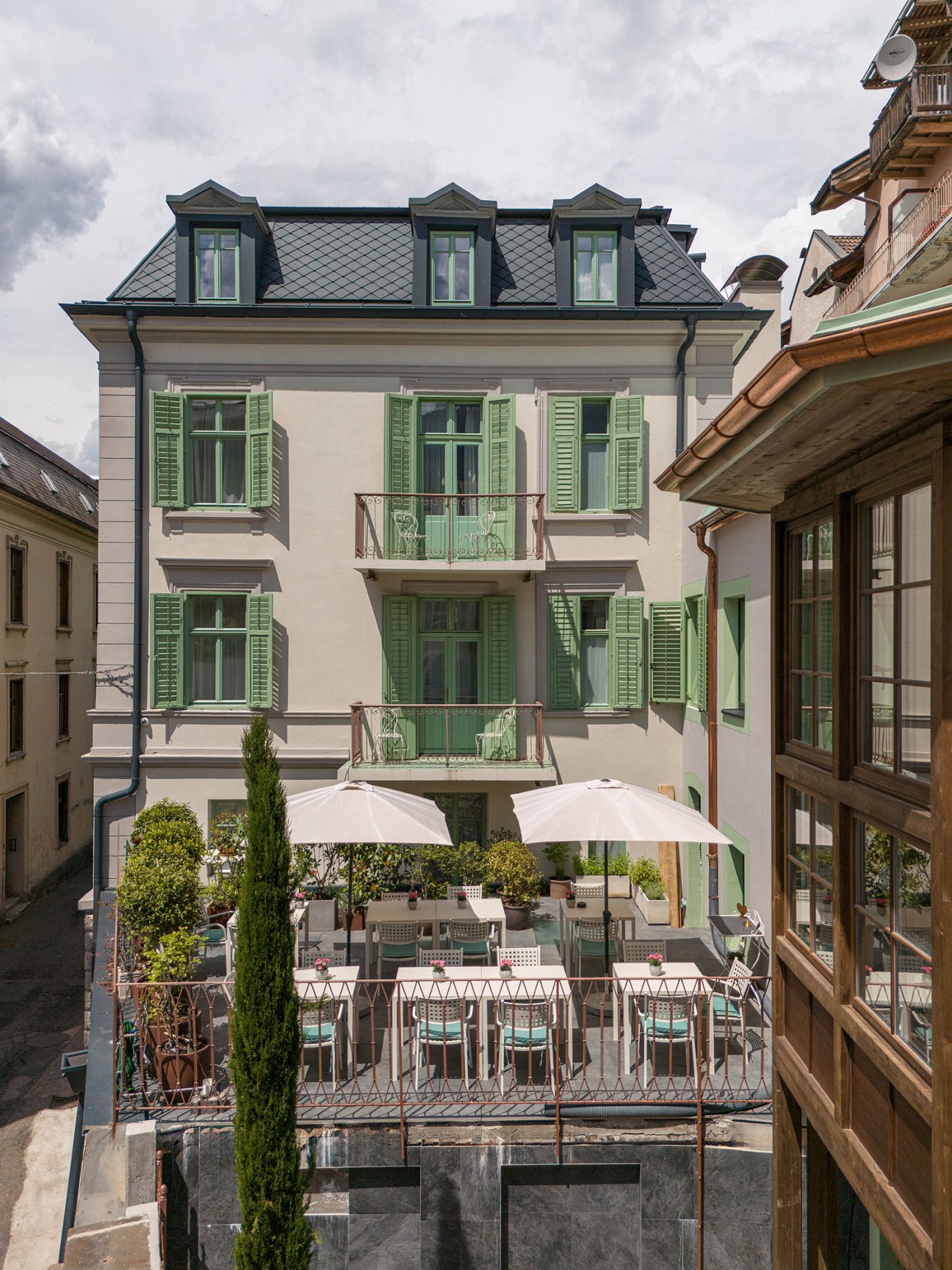
Set across two buildings in the Steinach neighbourhood of Merano’s historic centre, this hotel is just the right blend of old and new. The 17th-century building was tastefully restored by designer couple Roger Botti and Giulia de Andreis, with an understated colour scheme that includes pistachio-green window shutters.
Mid-century pieces such as Le Corbusier’s Marseille lamp are juxtaposed with flashes of Tyrolean culture, including contemporary art from local artists and hand-painted stencil work on traditional wooden furniture (for which South Tyrol is famed). With 11 spacious suites, each with its own bedroom and living room areas, this is the ideal escape from which to launch yourself into winter hikes – or to hit the slopes at the nearby Merano 2000 resort.
steinachmeran.com; theaficionados.com
4.
Kaenkrung
Bangkok
This new spot in west Bangkok has a refreshingly offbeat take on Thai cuisine. Kaenkrung opened in October 2024 with a menu that draws on the flavours of Isan, Thailand’s northeastern province. The converted shophouse on the Thonburi side of the Chao Phraya river is the second restaurant by Paisarn Cheewinsiriwat and Kanyarat “Jib” Thanomseang. The two chefs have drawn crowds with their first site, Kaen, a culinary destination in Khon Kaen, one of the largest cities in Isan. At Kaenkrung, the pair bring their signature dishes and a playlist of funky, folky mor lam music to the capital (Krung thep is slang for Bangkok).
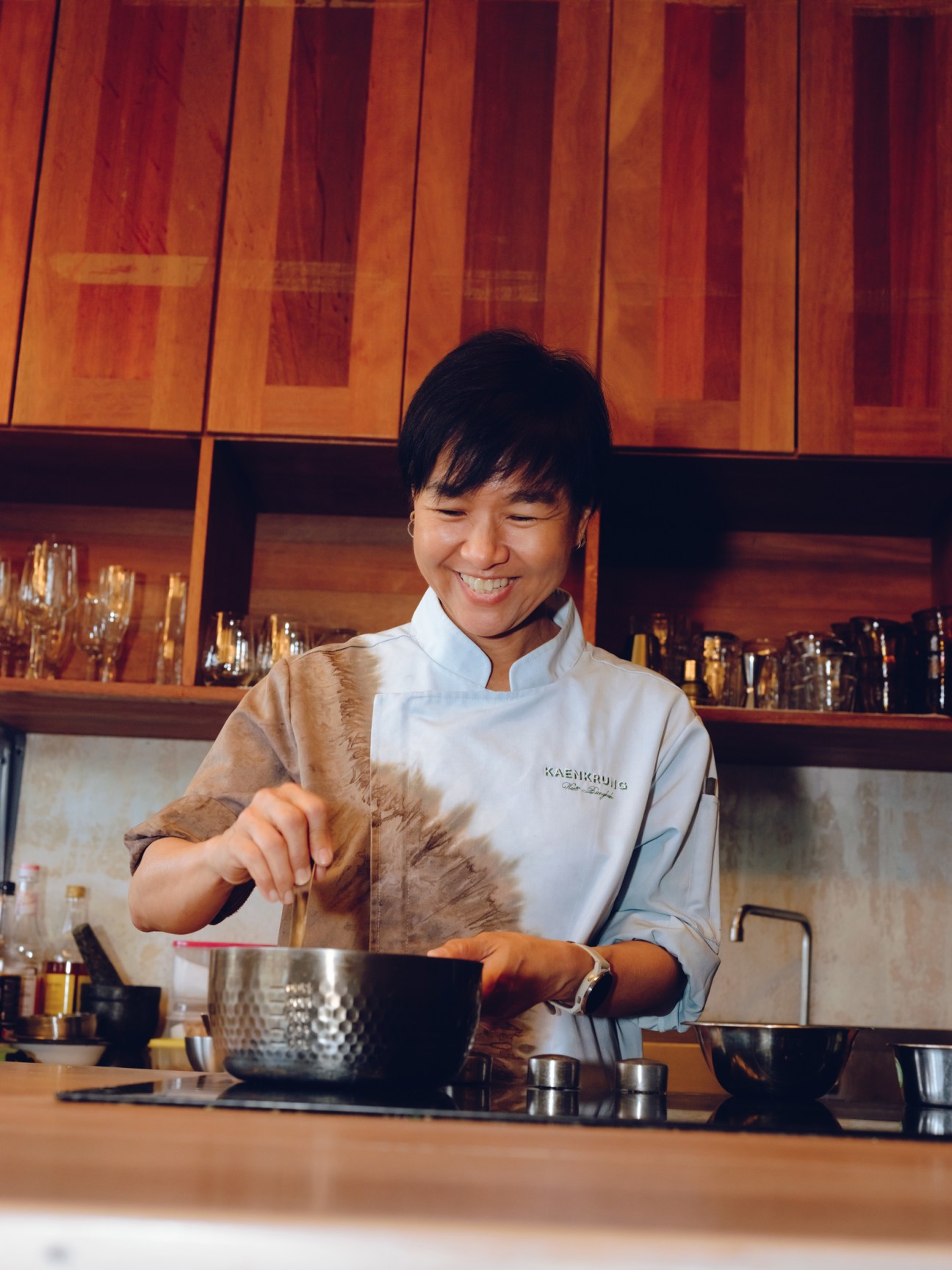
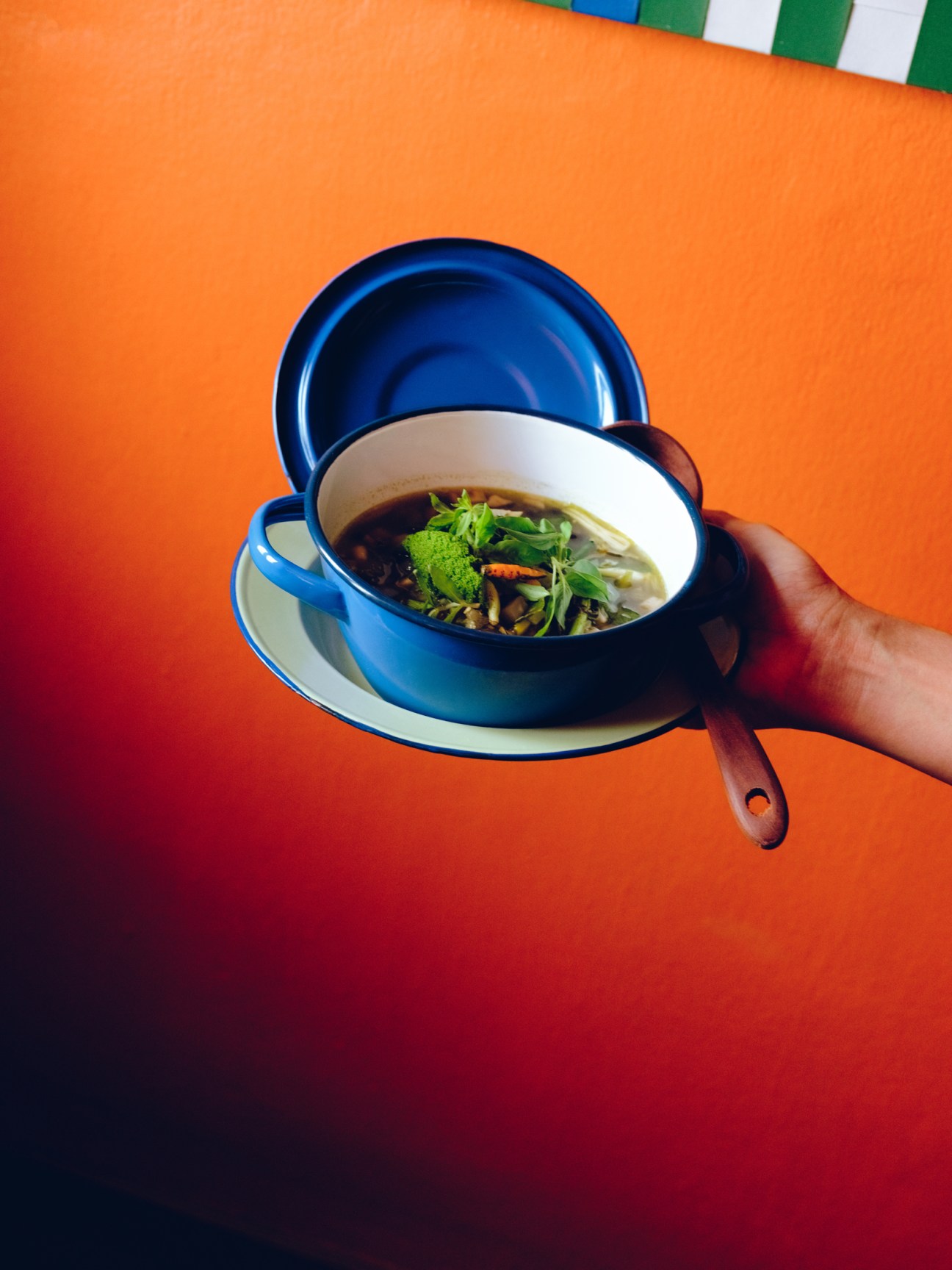
“We want to create contemporary regional cuisine that embraces local ingredients and traditional cooking techniques,” says Cheewinsiriwat, an Isan native and former executive chef at Chiva-Som health resort. Isan pork sausages are an easy entry point, before moving on to a creative twist on spicy green salad (som tam), made using jicama, a tropical root vegetable, instead of the usual papaya. The northeast is home to some of Thailand’s best beef, so the charcoal-grilled ribeye with vegetables and a sticky rice waffle is a must, even if it means giving the popular lamb massaman curry a miss.
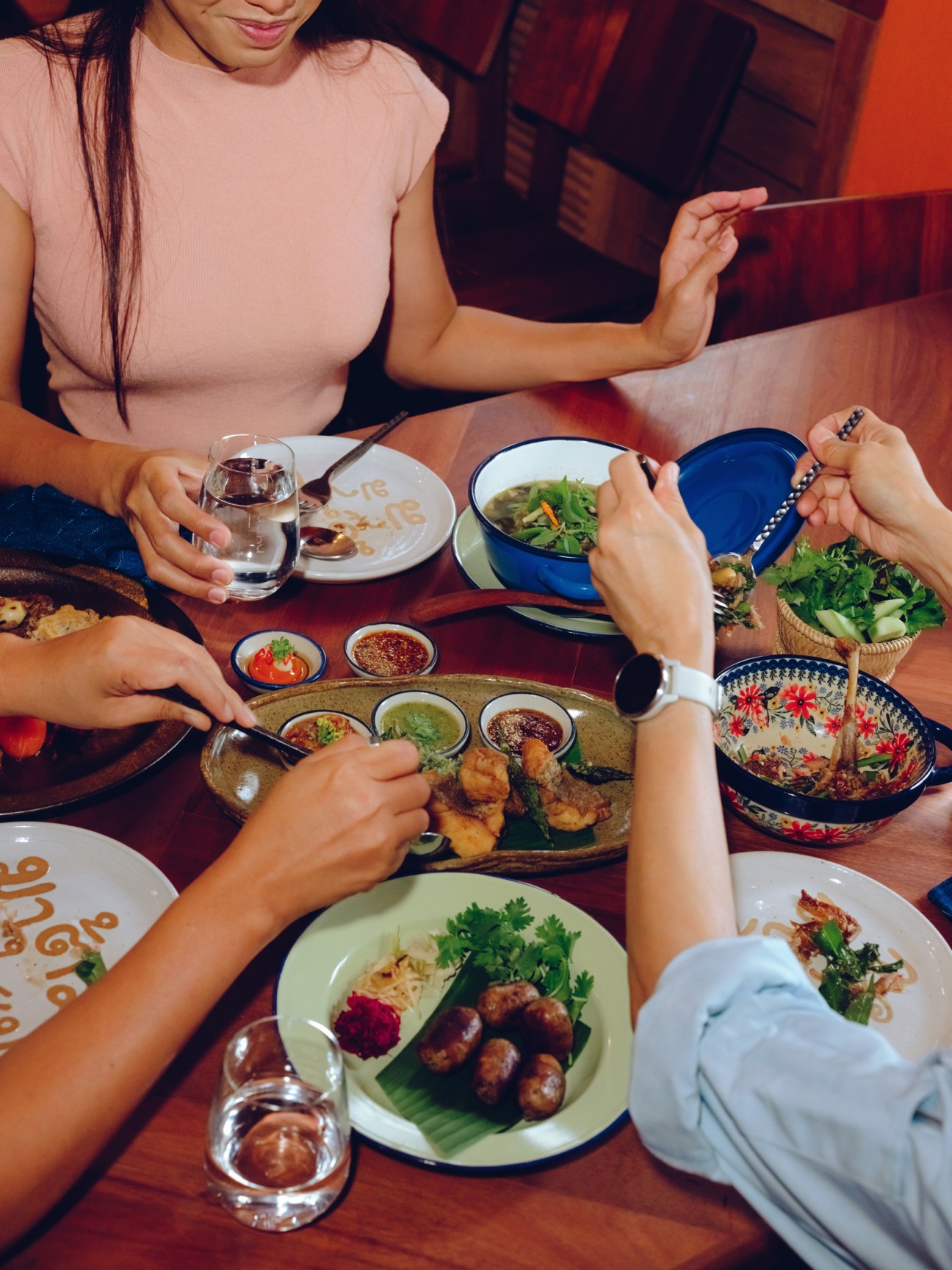
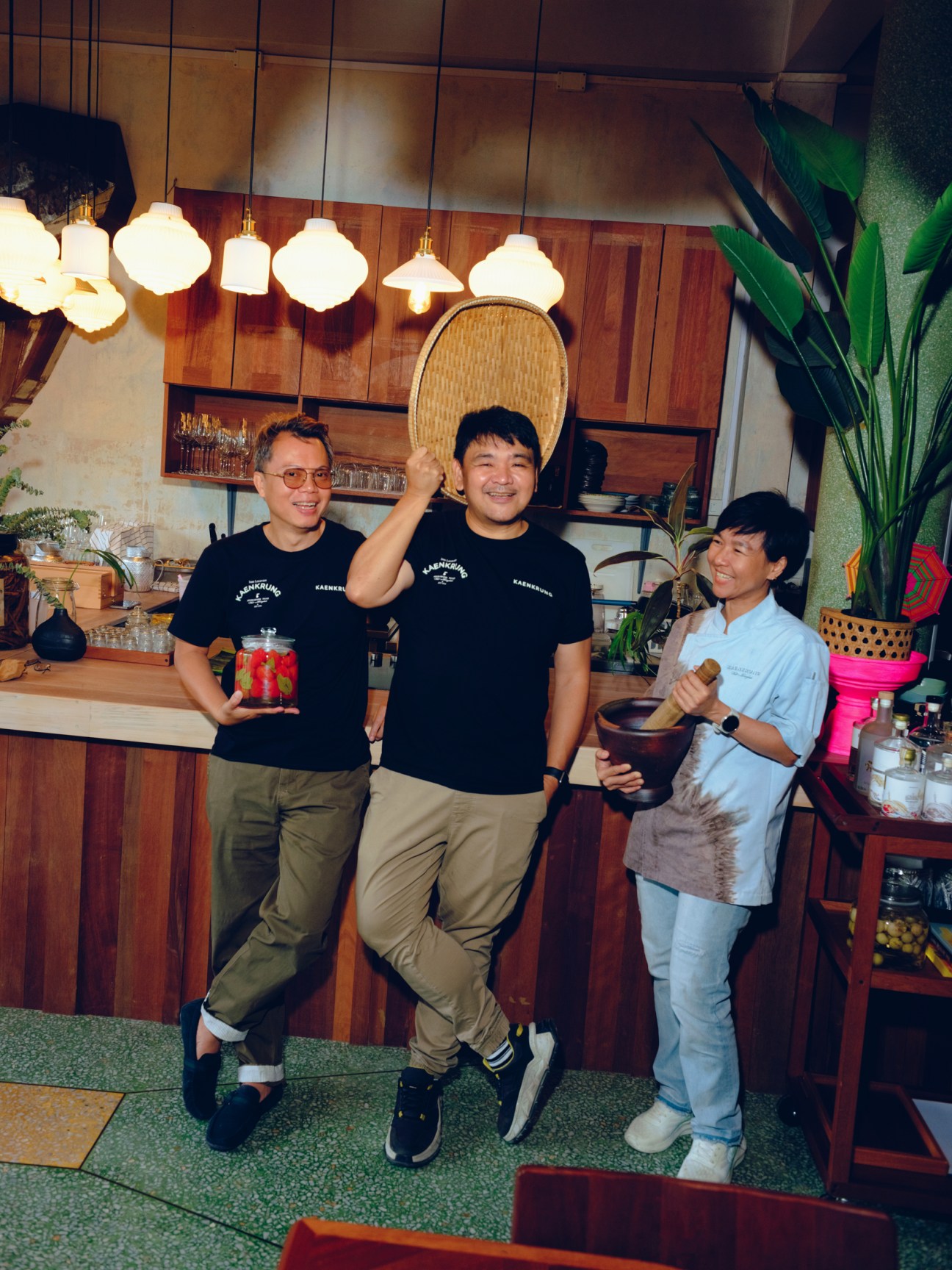
Kaenkrung comfortably seats 16 on the ground floor, while upstairs is reserved for private bookings, collaborations with guest chefs and other special events. “Isan culture is all about coming together,” says Cheewinsiriwat, who splits his time between his kitchens in Khon Kaen and Bangkok. As appreciation for Isan cuisine grows, a trip to Thailand’s little-known northeast might even be on next year’s wishlist.
+ 66 87 324 4619
5.
La Mission
Île d’Yeu
Île d’Yeu, a rugged Atlantic island off the coast of Vendée in France, offers plenty of options for holidaymakers during the summer but boltholes that stay open beyond the peak months are harder to find. “We love how the island evolves across the seasons and want to share that with our guests,” says Michel Delloye, co-founder of Hôteliers Impertinents. That’s why the group designed its newest opening, La Mission, to be one of the island’s few year-round destinations.
Located in the main village of Saint-Saveur, the property is as much a gathering place for islanders as a hotel. With a calendar of seasonal activities, from raclette dinners in the winter to pétanque competitions in the summer, the founders’ aim was to give a piece of local heritage back to the community.
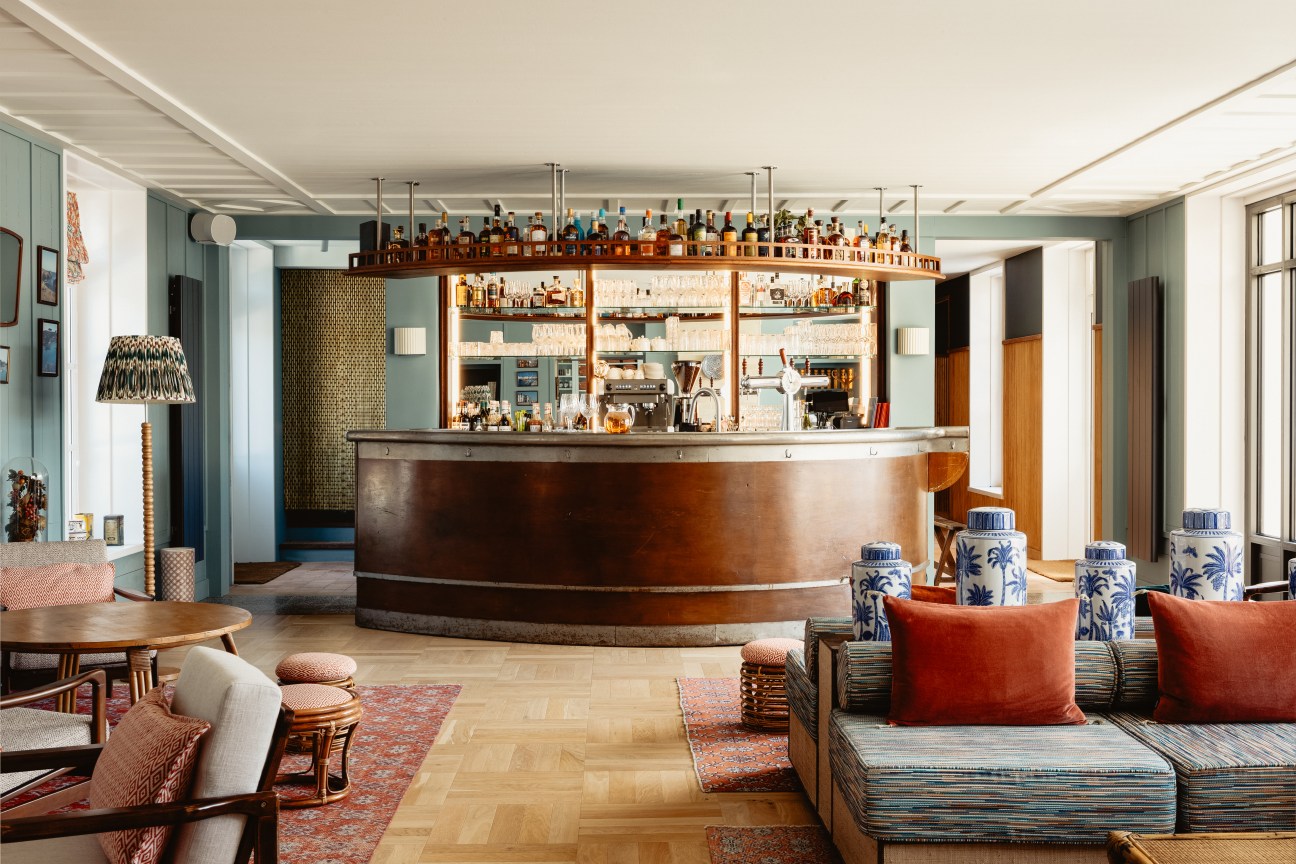
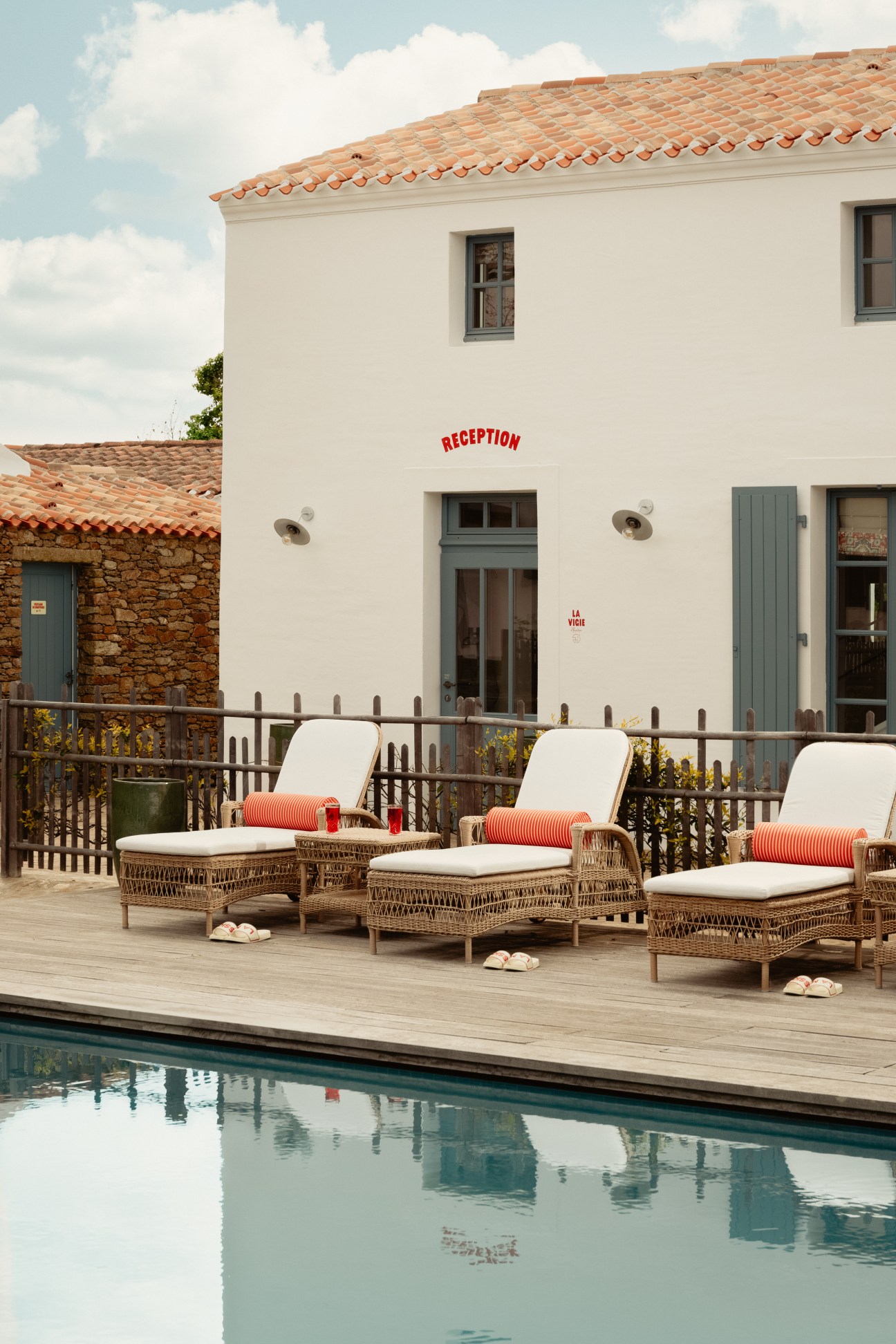
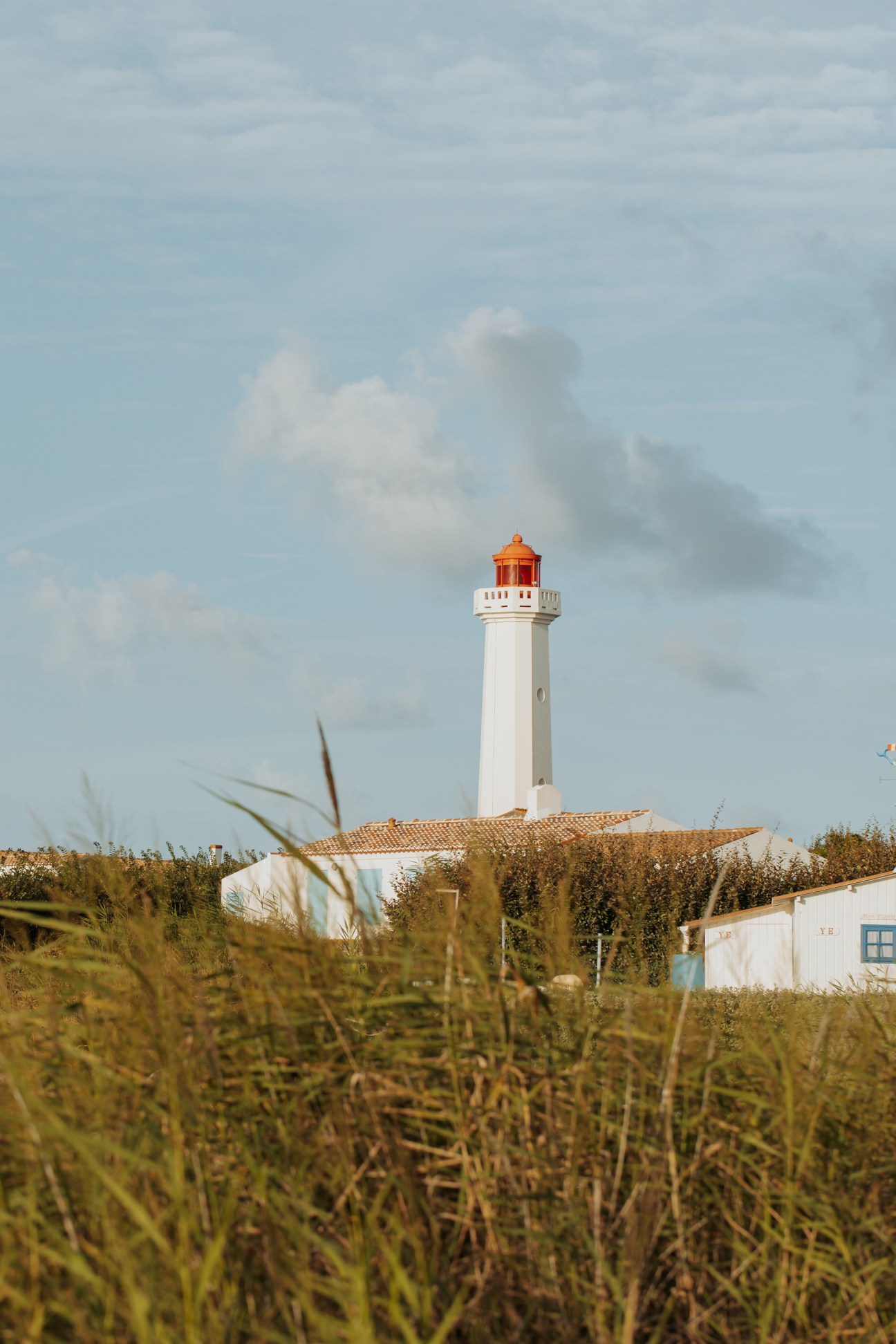
La Mission is set in one of the île’s most storied locations. Its main building dates back to the 19th century, when it was constructed under Napoléon iii as military barracks; it was later transformed into a school and a parish hall. “Some locals still have memories of going to school here,” says Delloye. “Others come in to reminisce about family gatherings at the hall.”
When it came to creating the hotel’s warm, convivial interiors, designer Pauline d’Hoop was mindful of staying true to the essence of the place. The 22 guest rooms and suites are decorated in the typical island style, featuring white wood-panelled walls, rattan furniture and splashes of colour. It’s the perfect retreat after a blustery island walk.
lamissionyeu.com
6.
Somewhere Lombok
Lombok
The island of Lombok, just east of the more developed Bali, remains unjustly overlooked. Its beaches, paddy fields and forested slopes easily rival those of its better-known neighbour and there are fewer people to elbow out of the way to see them. With 20 standalone villas, a restaurant and bar, a spa and an infinity pool overlooking the ocean, Somewhere Lombok is the place from which to explore the island.
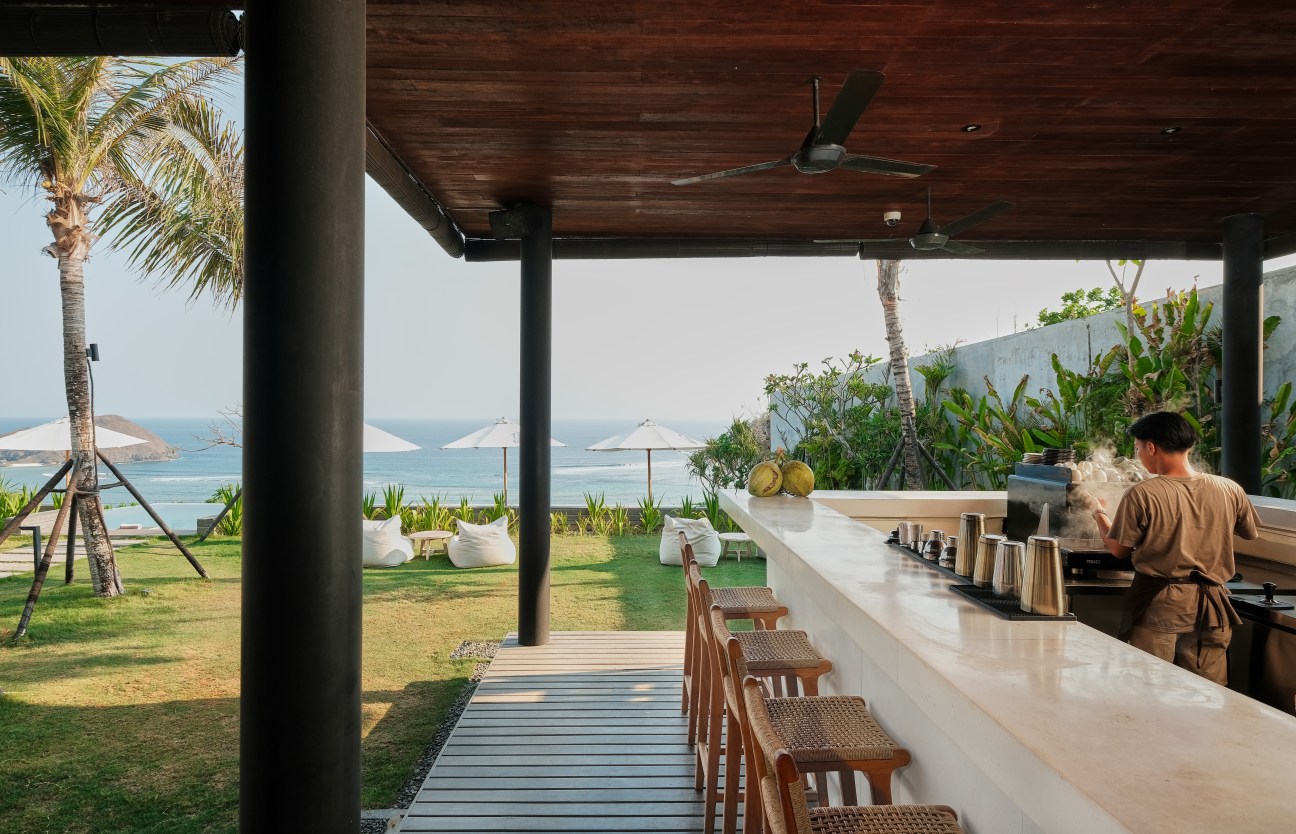
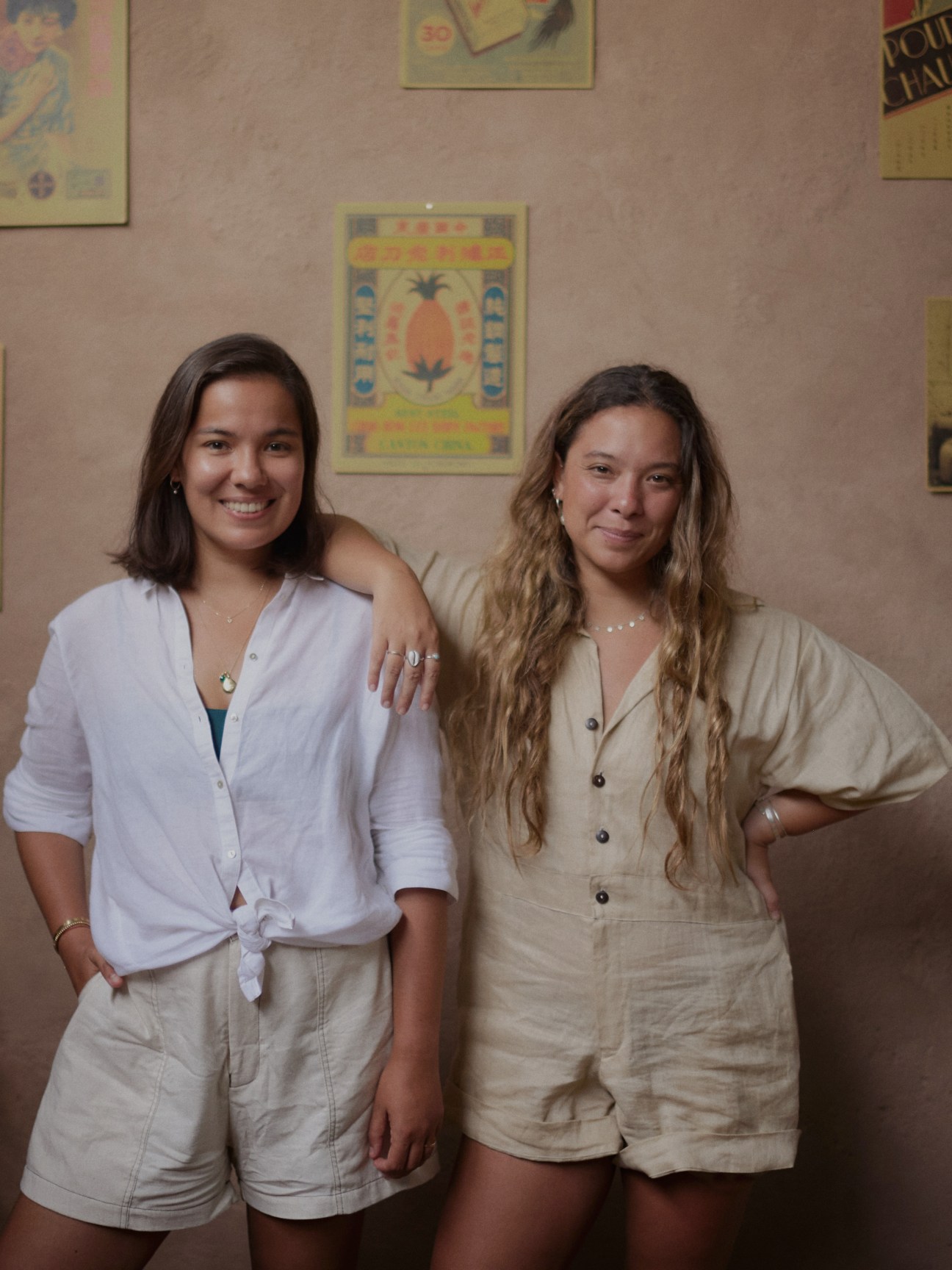
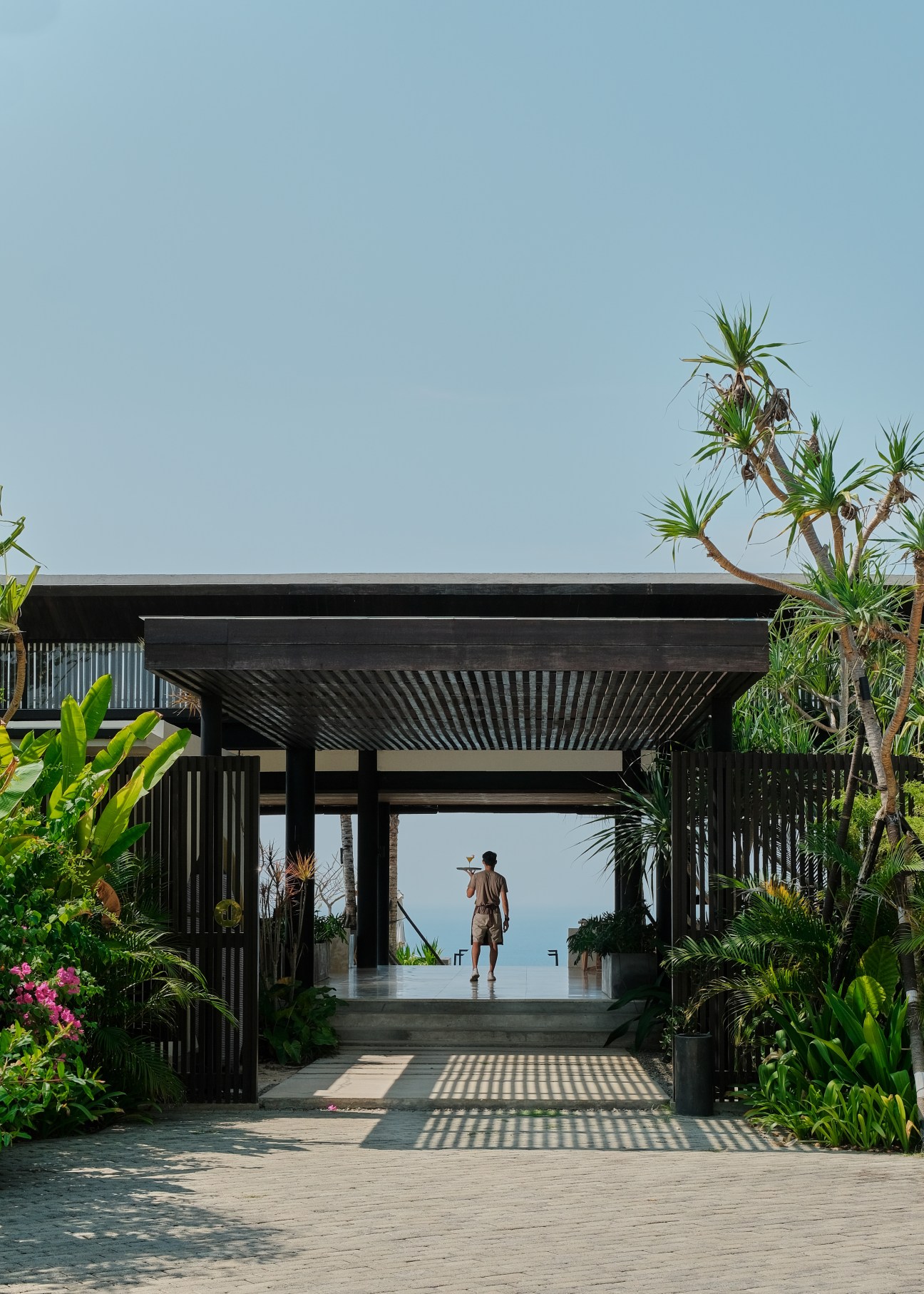
The villas are scattered across a cascading hill, allowing them valley views; each has its own terrace and private plunge pool. The open-air restaurant offers a mix of Indonesian and Western fare and features fresh seafood. “We wanted people to feel at one with nature, rather than being boxed in,” says Claire Gontard, who co-founded Somewhere Lombok with her sister, Valia. “We are lucky to have unobstructed views of the entire bay.”
somewherelombok.com
7.
Clemente Bar
New York
Swiss chef Daniel Humm and Italian artist Francesco Clemente bonded over a shared love of New York, art and hospitality before opening their homage to all three, Clemente Bar, in October. The moody space – all wood panelling, wall sconces and striped banquettes – sits above Humm’s plant-based restaurant Eleven Madison Park. Its interiors come courtesy of Brad Cloepfil of Allied Works, with lighting by German artist Carsten Höller and furniture from Los Angeles-based designer Brett Robinson. The drinks menu is long and lively (be sure to sample the smooth, saffron-infused Clemente martini), while The Studio, a nine-seat counter, is available for 90-minute tasting menus.
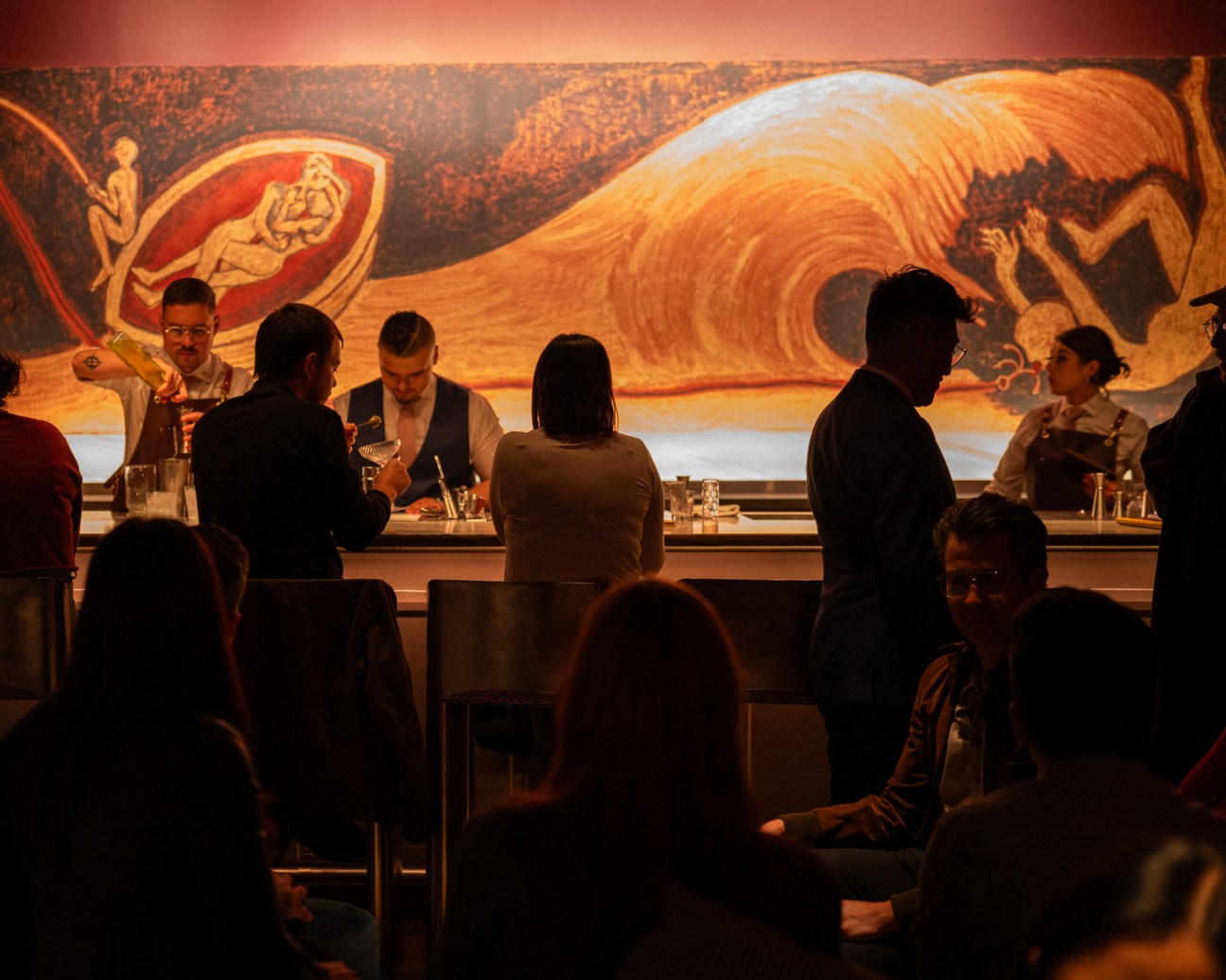

The drinks offering, overseen by Sebastian Tollius, and the chef’s counter are the main draws. The presence of Clemente’s custom-made neo-expressionist, ochre-hued friezes and evocative canvases, however, is the extra ingredient that nudges the bar from simply being notable to being a distinctive pleasure that should last the test of time. It’s amazing what a lick of paint can do.
clementebar.com
8.
Super Kiosk
Cambridge, New Zealand
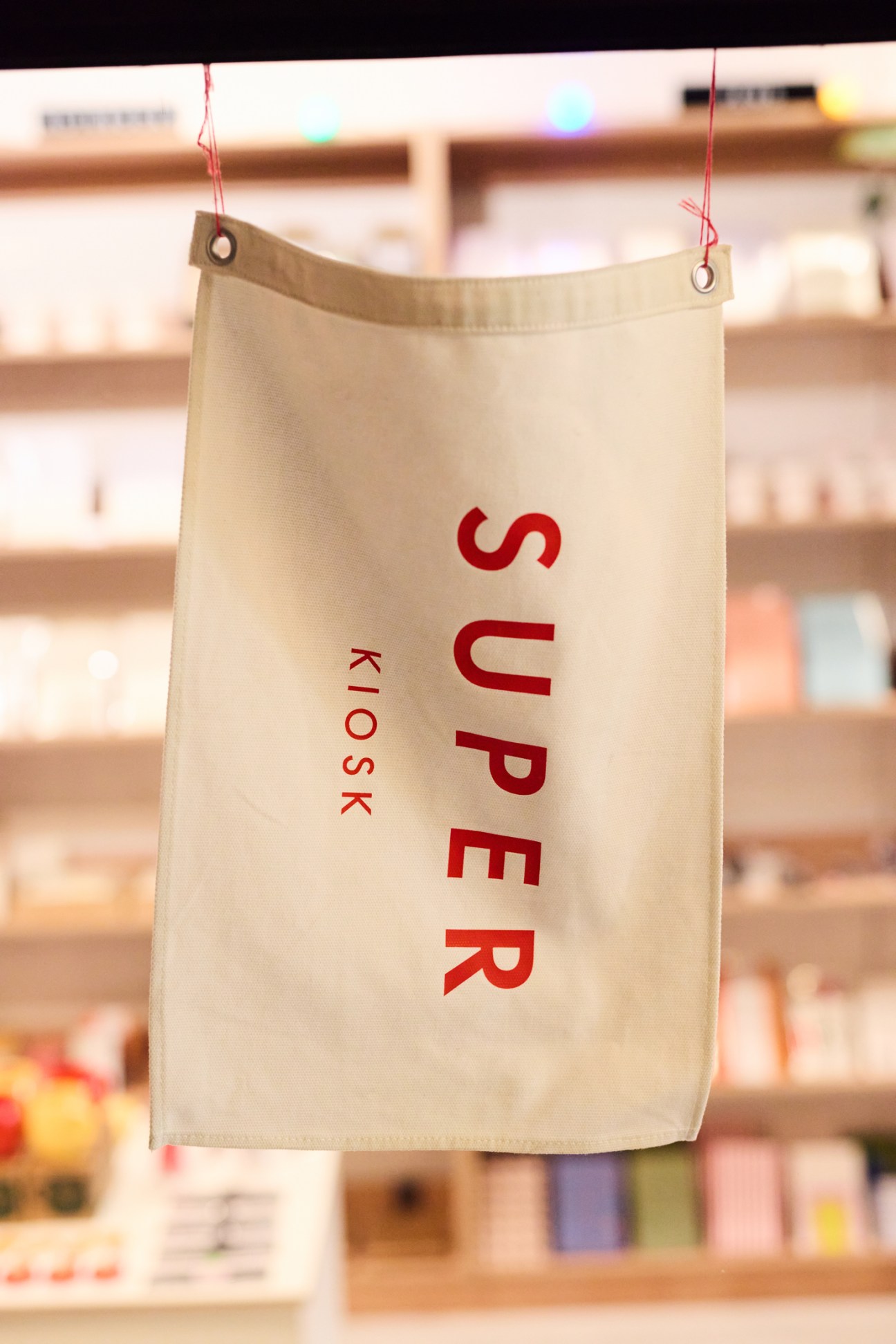
Tom Sykes was the head of digital brand strategy for the King James Group advertising agency in Cape Town when he started drafting plans to start something of his own. Having spent his career positioning big brands, he began wondering what it might be like to start something fresh after moving to New Zealand in 2018. “I had no clue what to do, never mind how to run my own business or what it would even be,” he tells Monocle. “I started thinking about what I loved and what I hated. I love things that are elegant and enduring. So: stationery.”
This was the genesis of Super Kiosk, Sykes’s shop in Cambridge, a town about 150km south of Auckland. Today, wooden shelves are stacked high with well-made wonders and tidy tools from Australia, Japan, Germany and the US, including Delfonics ballpoint pens, steel Penco tape dispensers and notebooks from Any Day Now.
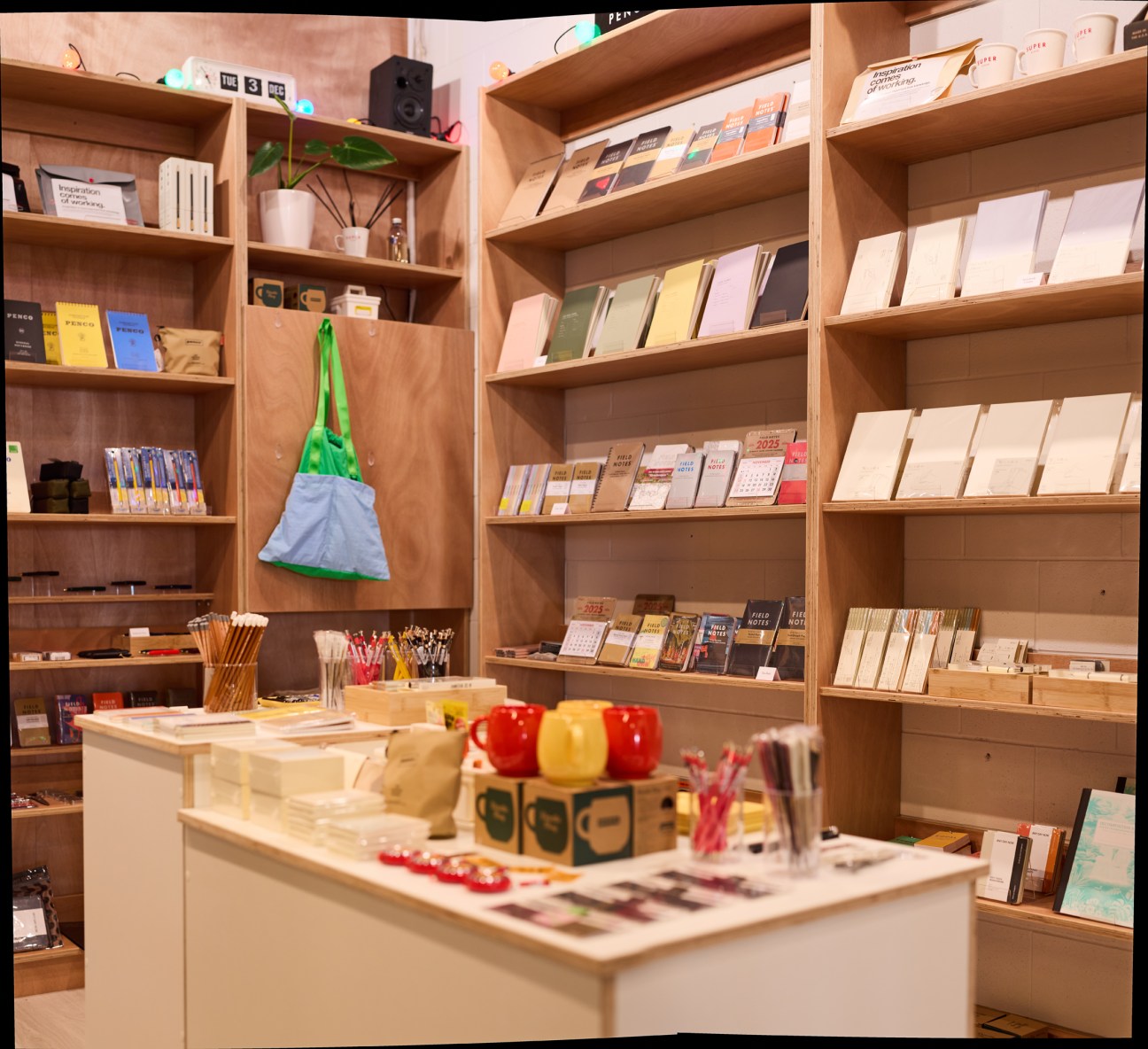
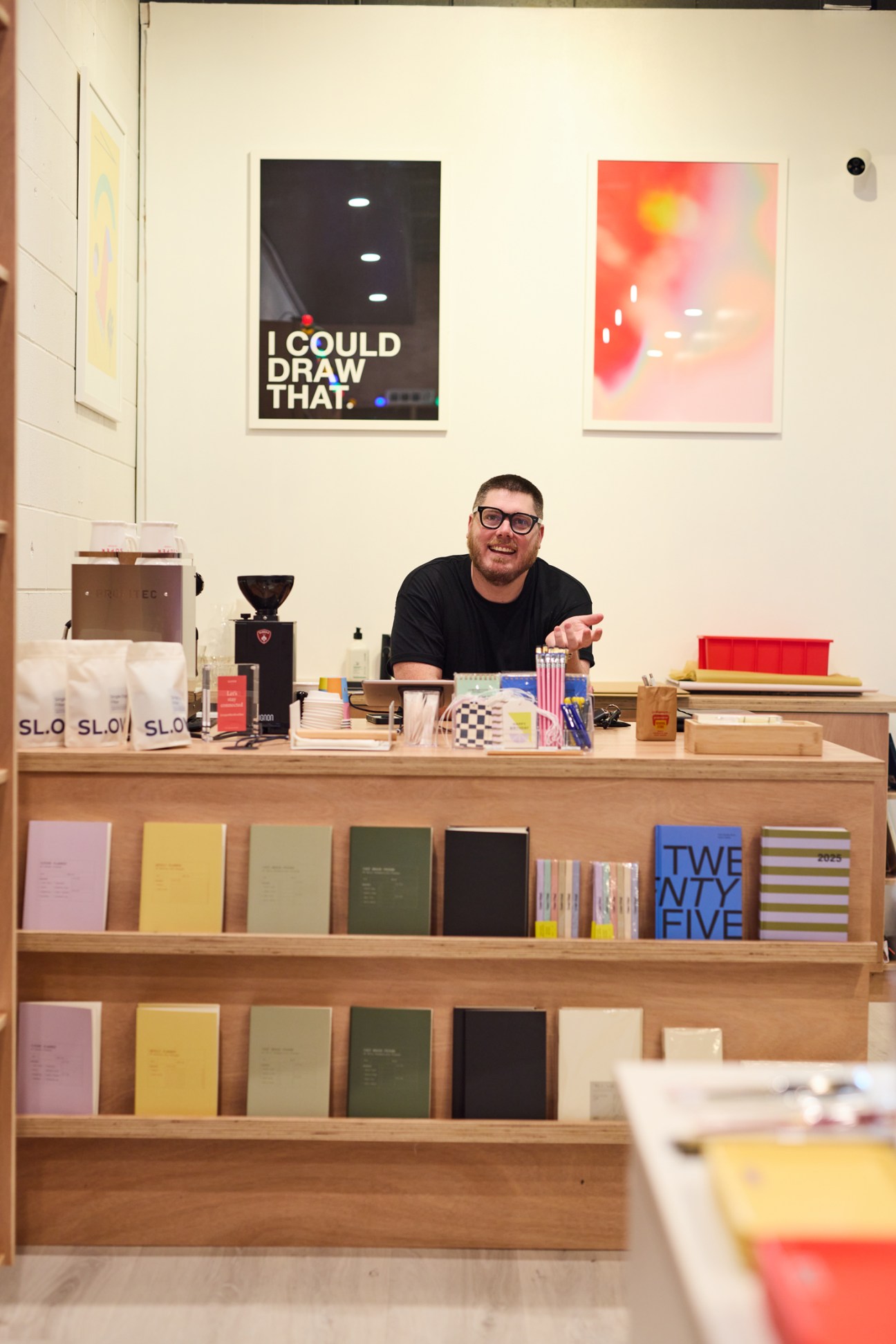
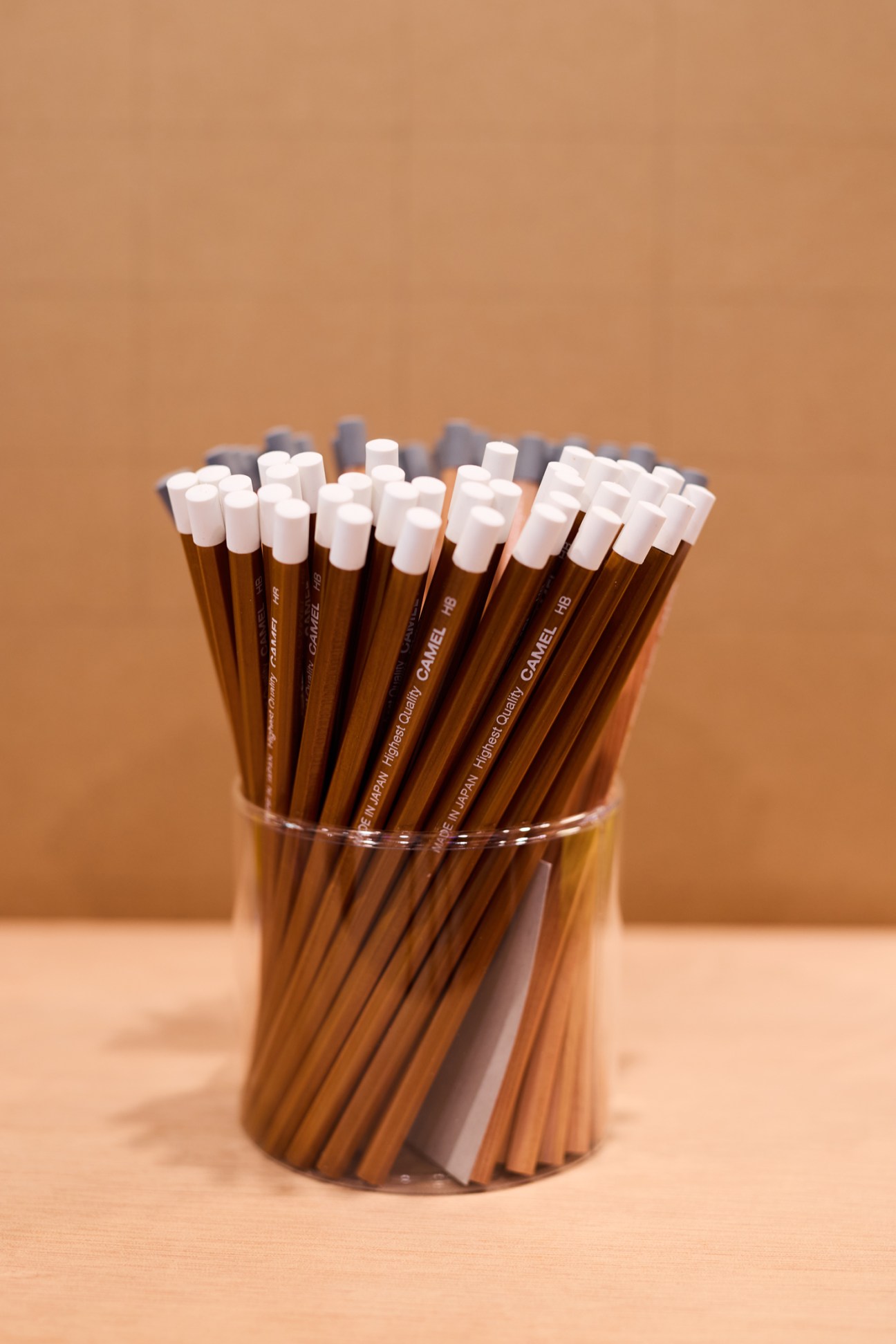
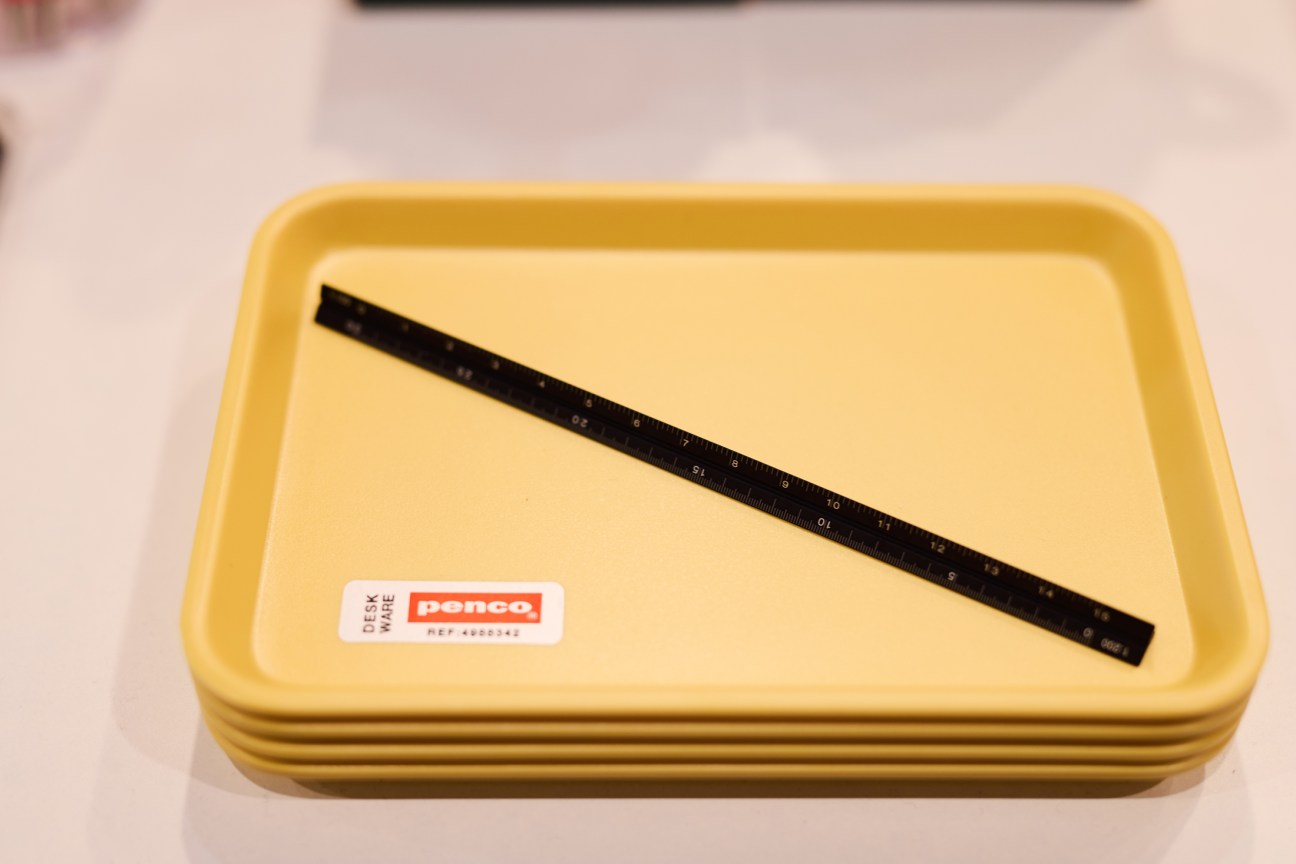
“It would have been much easier if I was a fifth-generation stationer and all of this was written in the stars,” adds Sykes, amused by the success of his just-so-branded business. “But that’s not my story. This is my story.” And a rather touching tale it is too.
superkiosk.online
9.
Ace Hotel & Swim Club
Athens
Ace Hotel has marked its return to Europe with Ace Hotel & Swim Club on the Athens Riviera. “This city is a perfect location, with its juxtaposition of ancient and contemporary influences,” says the company’s CEO, Brad Wilson. “Glyfada specifically is undergoing a renaissance, with a vibrant creative scene and exciting new developments.”
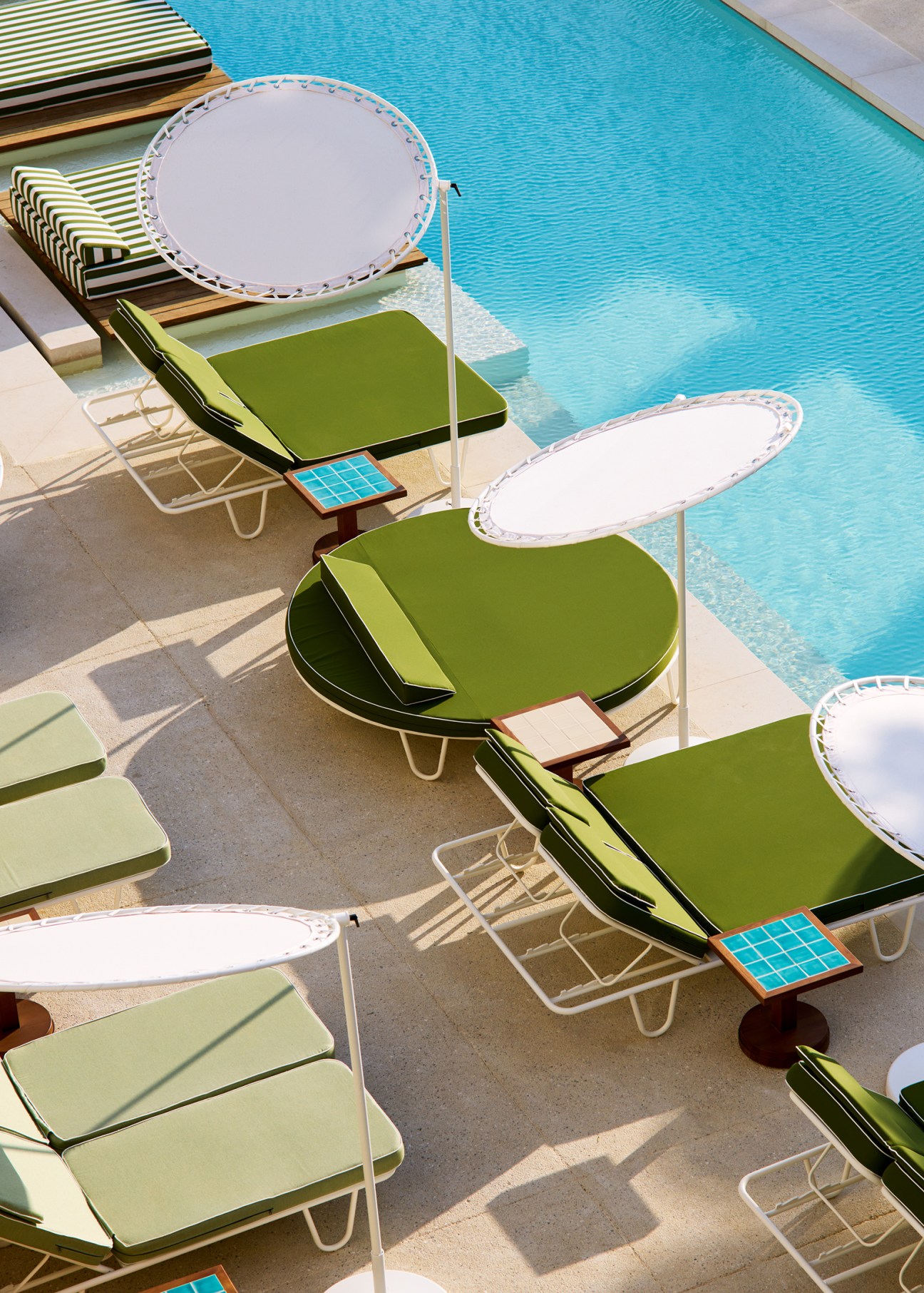
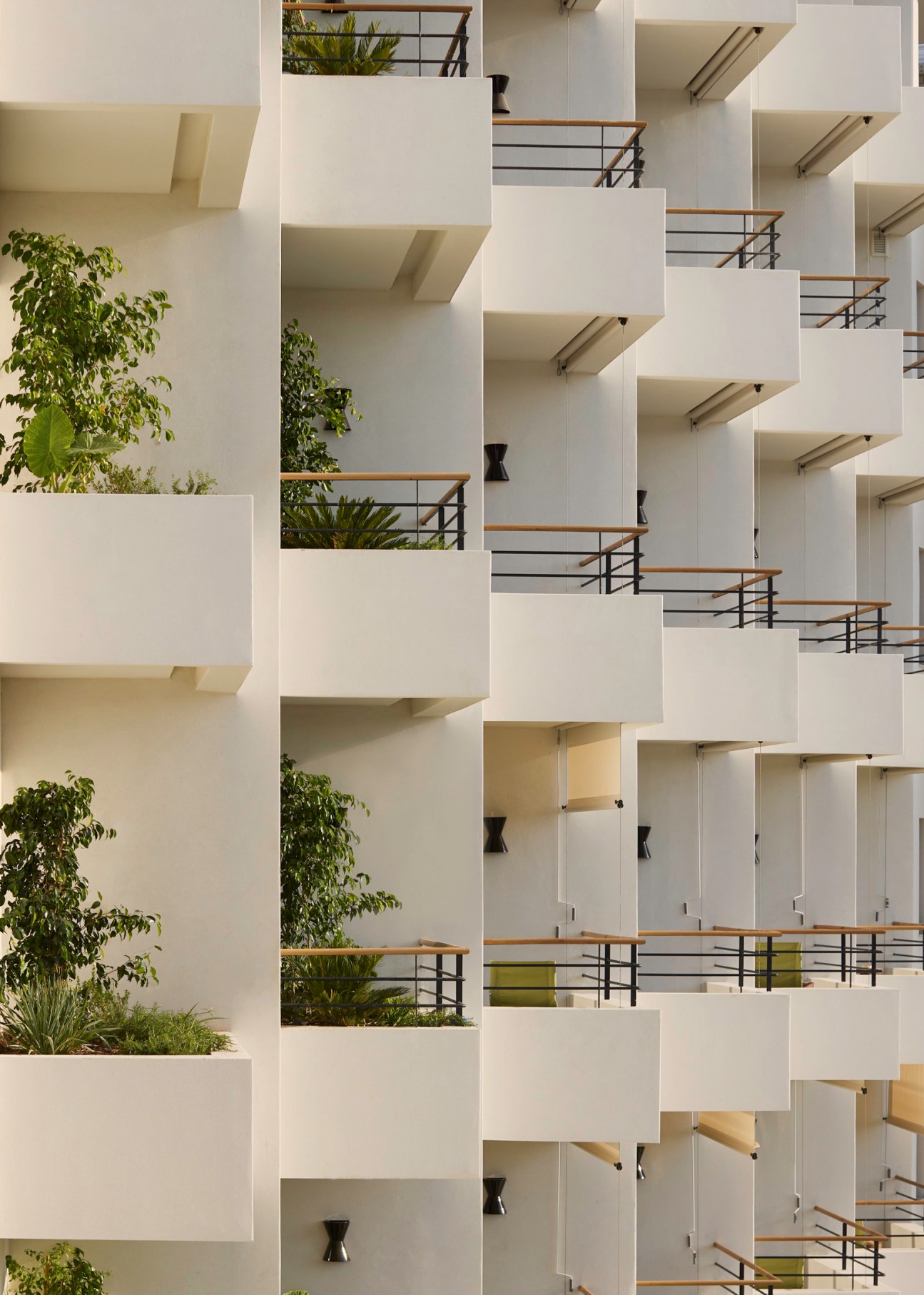
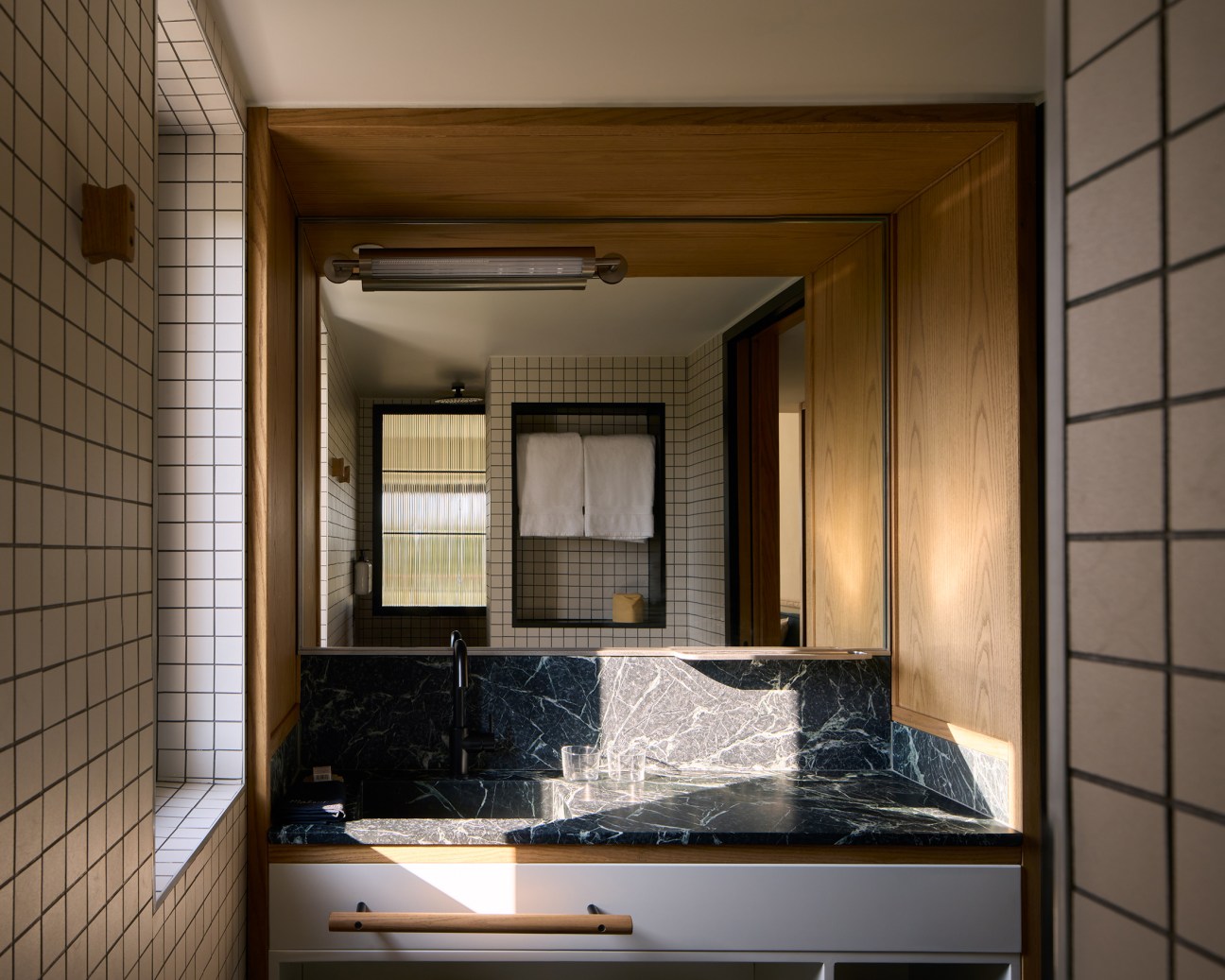
The 1970s building was reimagined by French firm Ciguë, with the support of Athens-based Georges Batzios Architects, to capture the breezy spirit of a modernist seaside resort. The pool area features green loungers and butter-and-cream-coloured umbrellas. Earthy-toned furnishings and natural materials sit inside with pieces by design icons such as Carlo Scarpa and Harvey Guzzini, selected by the owners of Athens-based vintage furniture shop Back to the Future. Works by emerging and established Greek artists were selected by Diplomates Studio’s founder, Matthieu Prat, and Aliki Lampropoulos, an advisor to the director of the Acropolis Museum. “A small gallery space at the hotel will feature rotating exhibitions,” says Wilson. “We’re focusing on work from collaborators and friends in the Athenian community.”
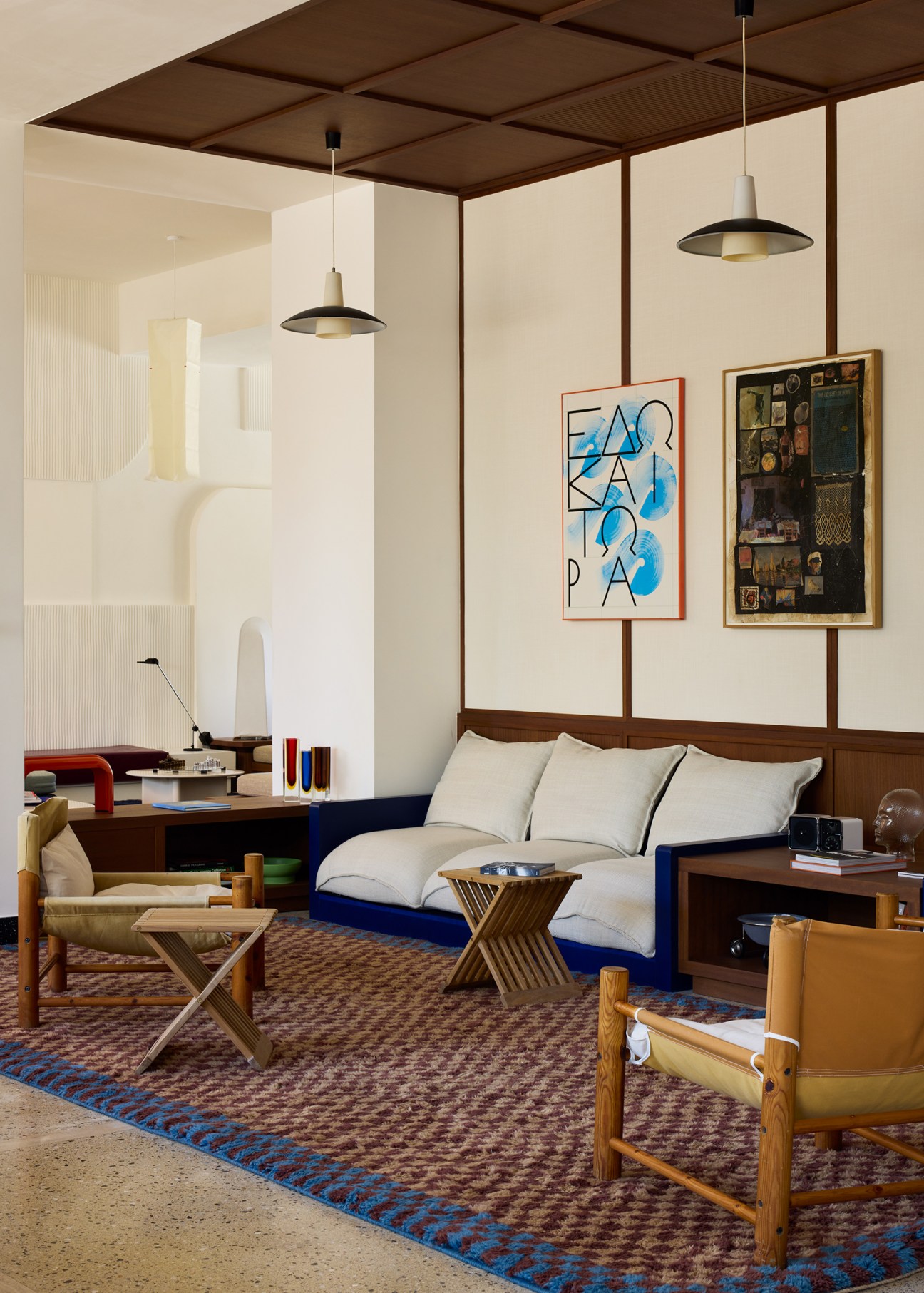
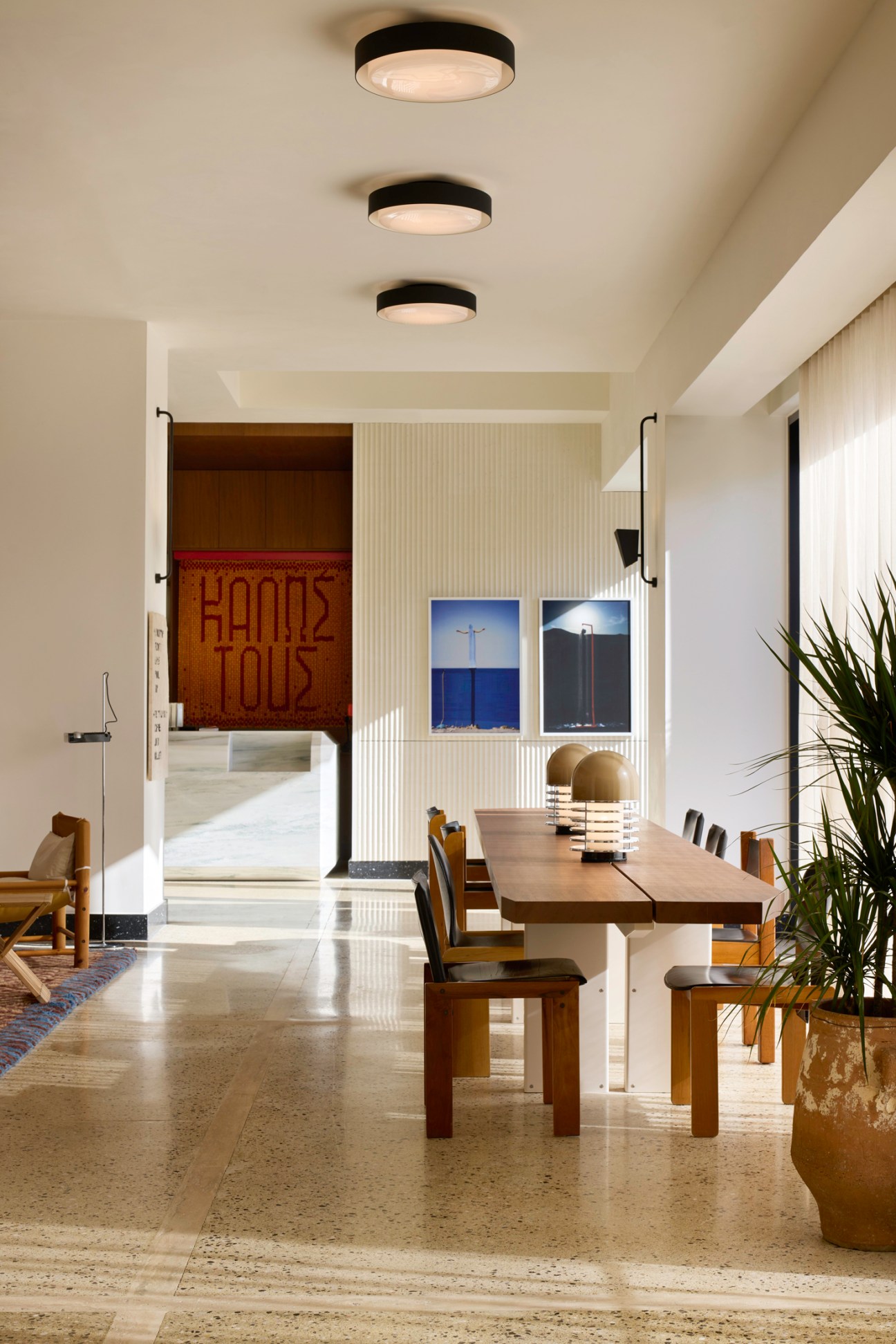
Sebastian restaurant serves modern Mediterranean fare. Try the Kástra Elión vodka, distilled from olives, for a fitting start to the weekend – then a few other options at The Lobby bar. The stools look sturdy enough.
acehotel.com
10.
Island Shangri-La
Hong Kong
Hong Kong’s Island Shangri-La hotel unveiled its revamped Shangri-La Suite in 2024. This 222 sq m home from home – the latest step in the 544-key hotel’s lengthy renovation – comes with his and her dressing rooms, a generous lounge, a 10-seater dining table, a kitchen, a wine cellar and a freestanding bar. Kuok Hui-kwong, the executive director and chairwoman of Shangri-La Group, had a hand in the design, elevating French designer Tristan Auer’s vision with Chinese opulence and a few deft touches. The hand-painted murals and oversized marble bathtub overlooking Victoria Harbour provide a sense of permanence (not to mention a great soak).
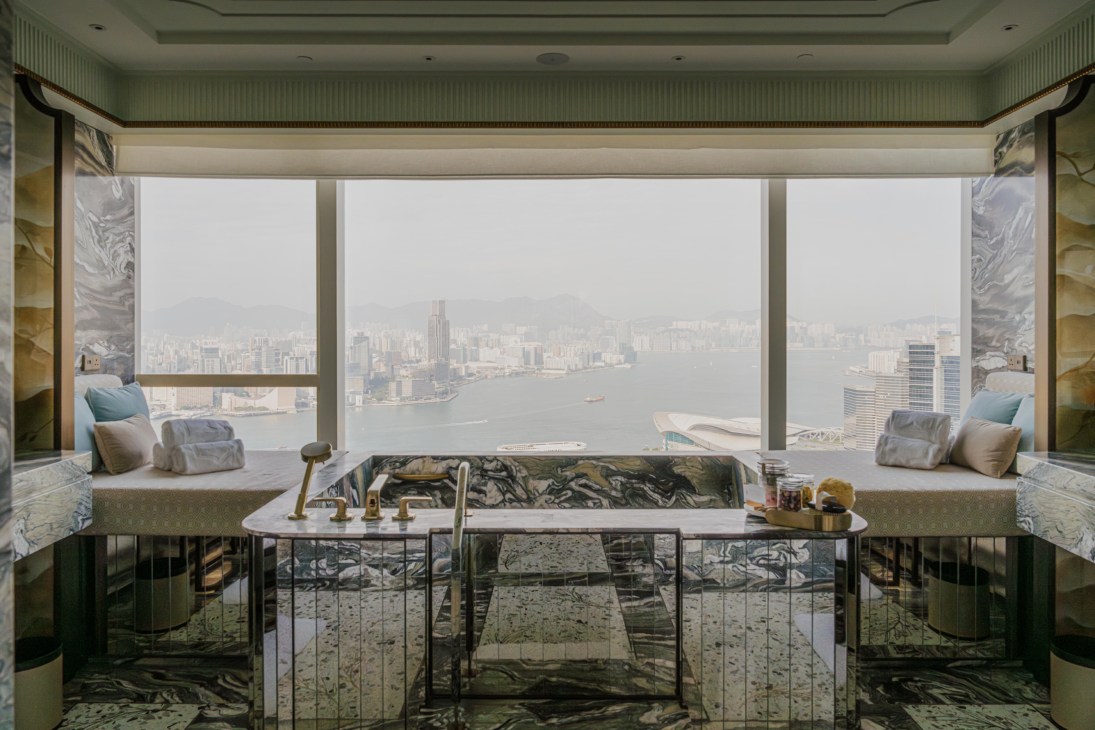
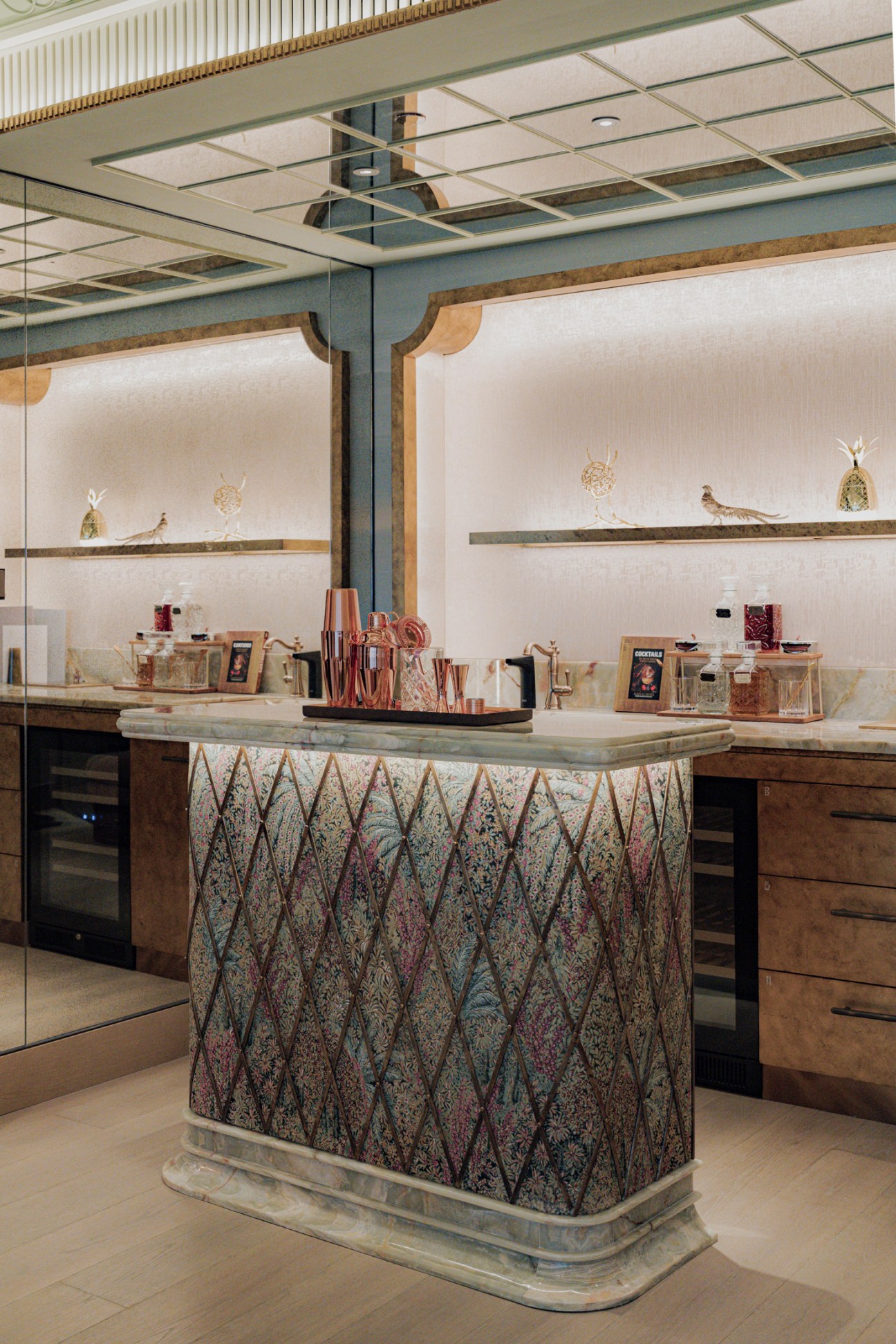
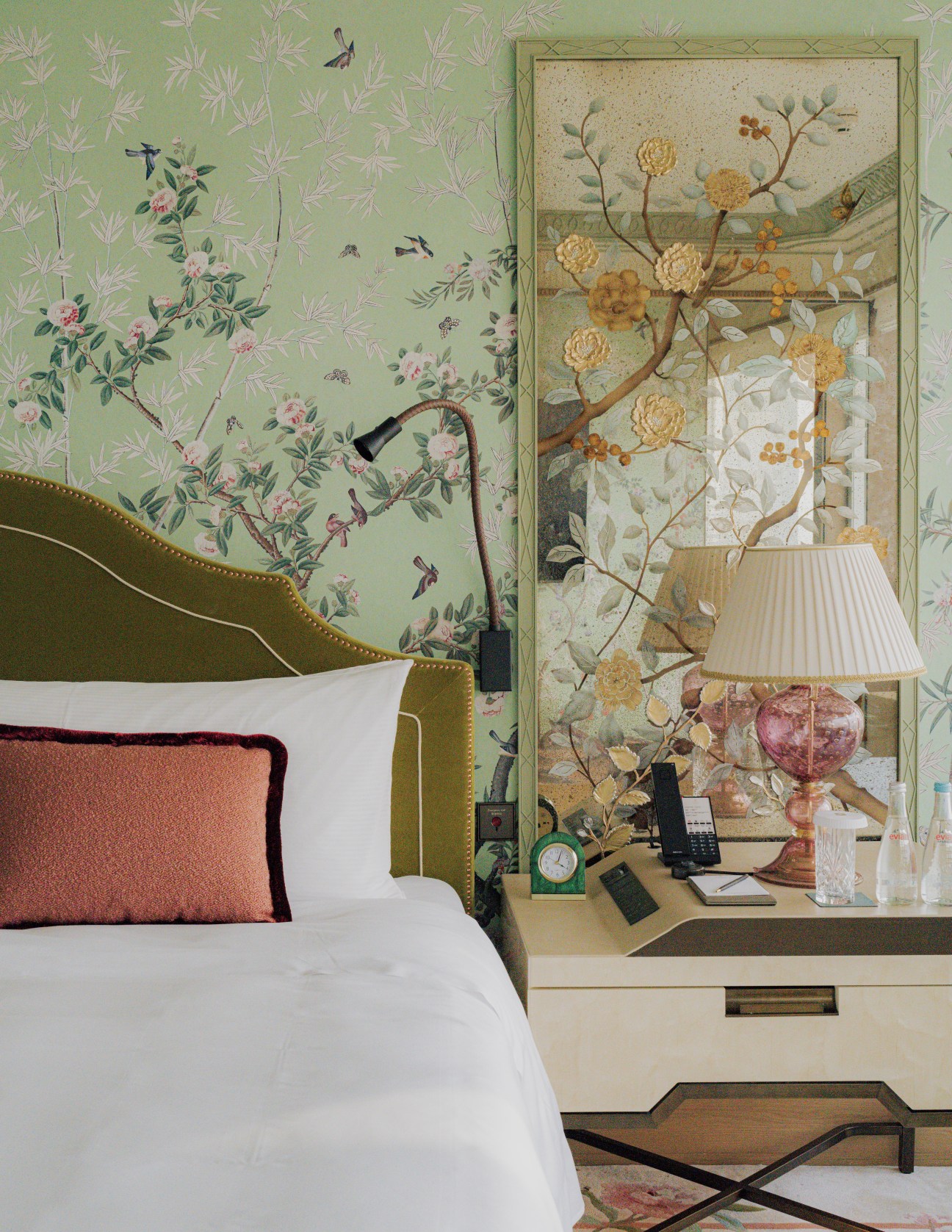
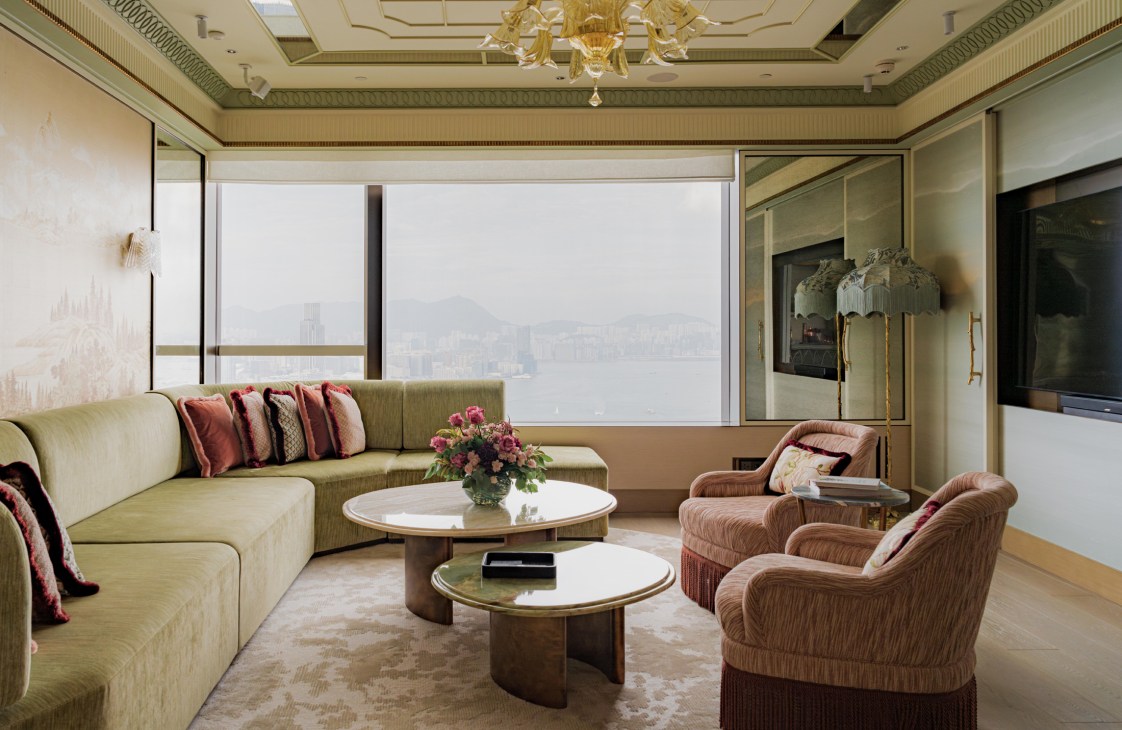
But in Hong Kong, even the most luxurious of spaces must have flexibility built in. Guests can use one of the two bedrooms as a gym, yoga room or office; larger parties can add an adjoining room. The tropical wallpaper in the private dining area can even be covered for brand events or board meetings. As hoteliers across Asia talk about the rise of multi-generational travel and its effect on hotel design, the Shangri-La Suite shows what flexibility can mean on a new level. Now, do you mind? That bathtub is beckoning.
shangri-la.com
11.
Fuglen
Seoul
Oslo coffee shop Fuglen, whose name means “bird” in Norwegian, opened its first overseas outpost in Tokyo in 2012. Given its success, the brand was bound to expand to new shores in Asia at some point. First up is Seoul’s fashionable Sangsu district. Fuglen’s now signature design is in place – vintage furniture, modern reproductions of mid-century Nordic pieces (another part of the Fuglen business) and straw wallpaper from Biri in Norway.
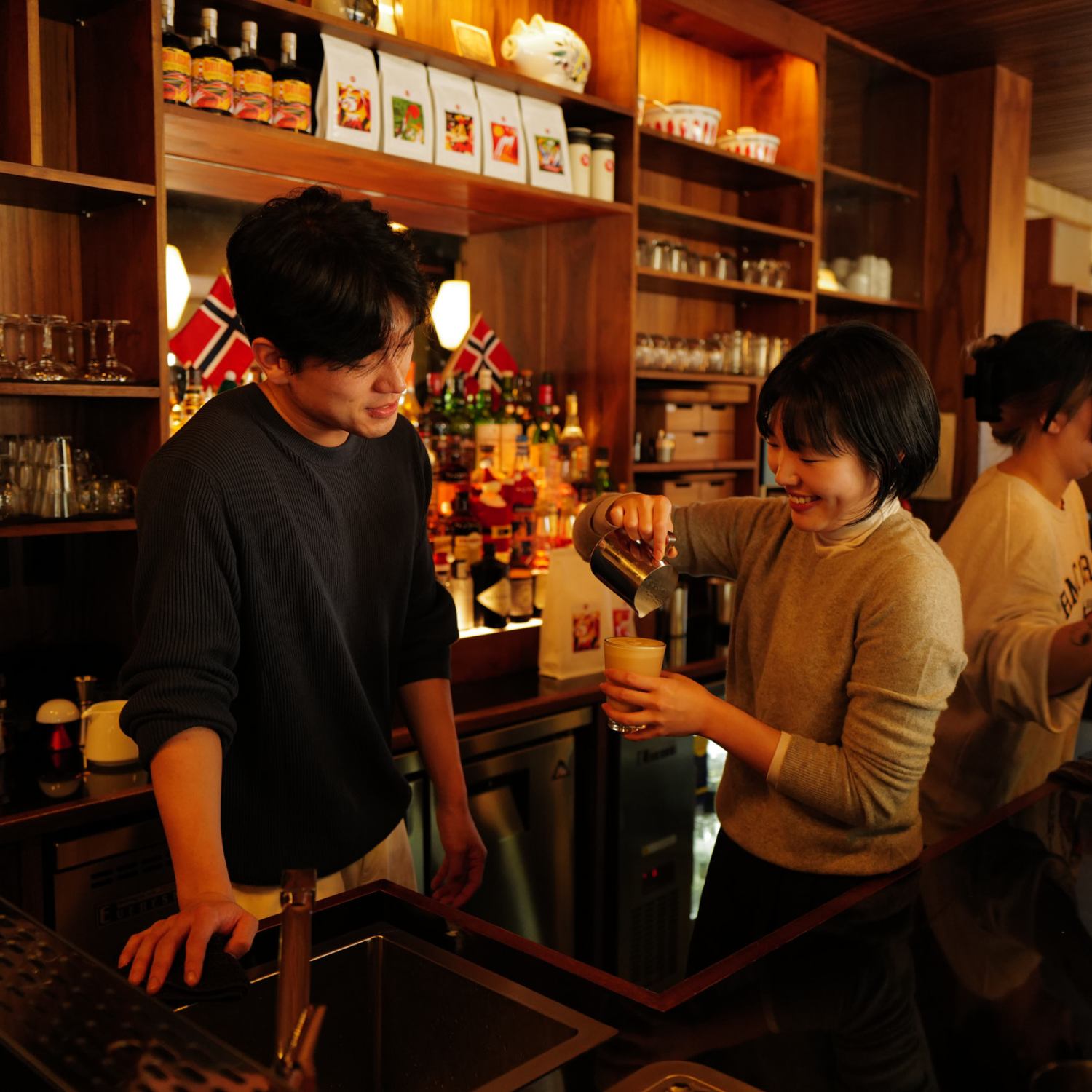

Staff from Fuglen Japan pitched in to help and hundreds of people turned up on the opening day. The company’s CEO, Einar Kleppe Holthe, is a former barista champion and one of the co-founders who took over the original 1963 Fuglen café in Oslo. He says he has been fielding offers from across the world. “Seoul was natural as there has been so much interest from South Korea.”
fuglen.no
12.
Sea Sea Hotel
Crescent Head
Sea Sea Hotel is tucked away on a quiet street in Crescent Head, a seaside town about halfway between Sydney and Byron Bay. The 25-room hotel opened in November 2024 as the newest venture from hotelier George Gorrow, formerly of The Slow in Bali. It’s just a few minutes’ walk from two pristine beaches that stretch either side of the town, affording sandy expanses for sunbathers and ideal point breaks for surfers.

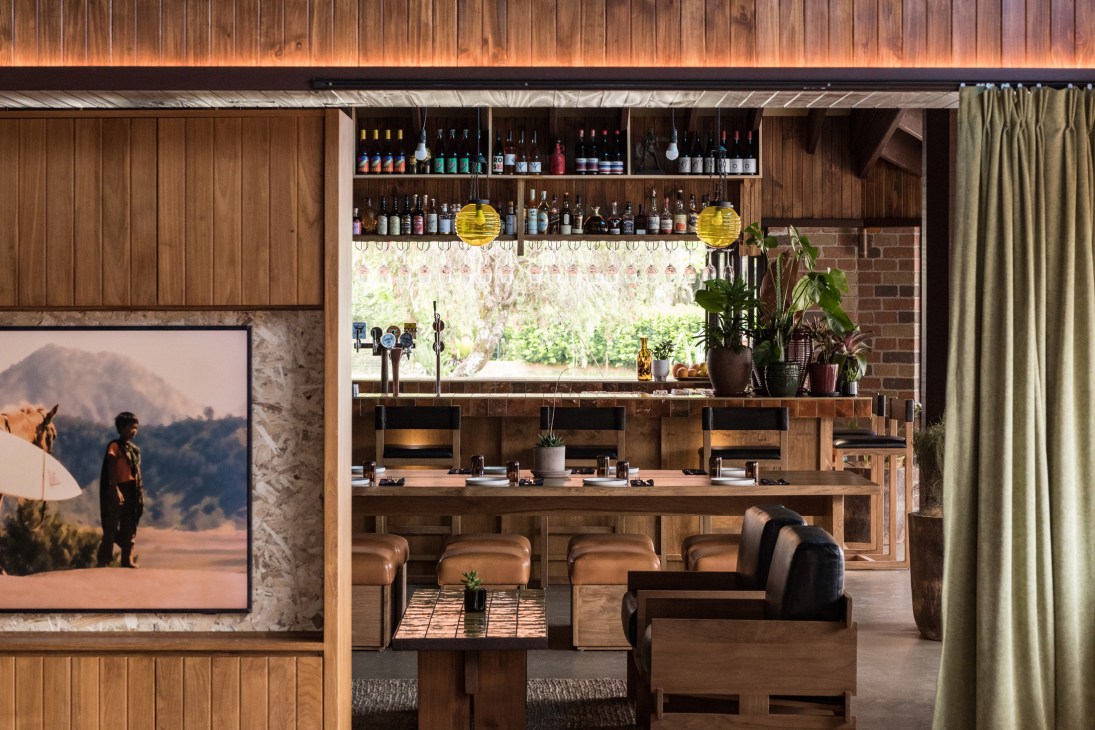
Gorrow decided to open Sea Sea after stumbling across what was then a run-down hotel property from the 1980s, featuring cabins that reminded him of Balinese villas. Gorrow kept the original structures but expanded the pool. He gave the rooms a modern cabin-in-the-woods look, with timber-clad walls. He also added sleek furniture, gauzy curtains and contemporary art. A restaurant serves local seafood and natural wine, and there’s a surf shop, a music lounge and an events space. Guests can rent boards and book surfing lessons at the hotel.
“I grew up on the beach and my dad was a big surfer,” says Gorrow. “This was always one of the spots that we used to pop into on our trips. It’s a cute town with amazing beaches. It still feels pretty untouched.”
seaseahotel.com
13.
Travelling companions
At Monocle, we know that packing for a trip is about more than merely selecting the appropriate wardrobe. Depending on the destination and your means of travel, different accoutrements become necessary. One item that is indispensable no matter where you’re heading is a camera. We’re fond of the Lomo’Instant Wide Boston by Lomography. The Vienna-based company produced this instant camera with lens attachments so that users can have the flexibility offered by smartphones and digital cameras while also shooting on instant film.
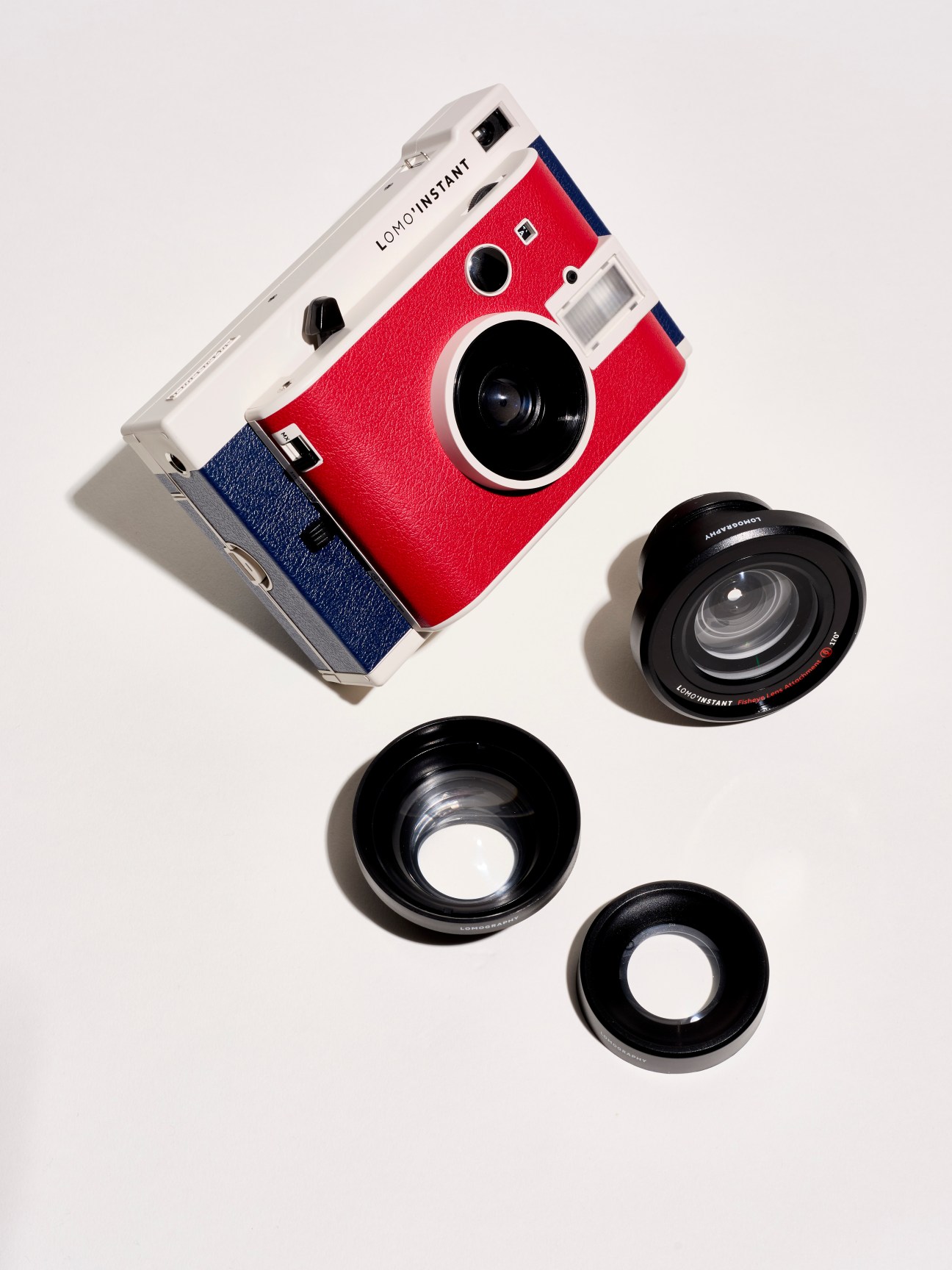
To set the tone on the road, we’re pumping up the volume with Mania by Devialet. The French brand’s first portable speaker combines hi-tech audio with an elegant design. Its spherical form is wrapped in a hardy woven fabric that protects the speaker.
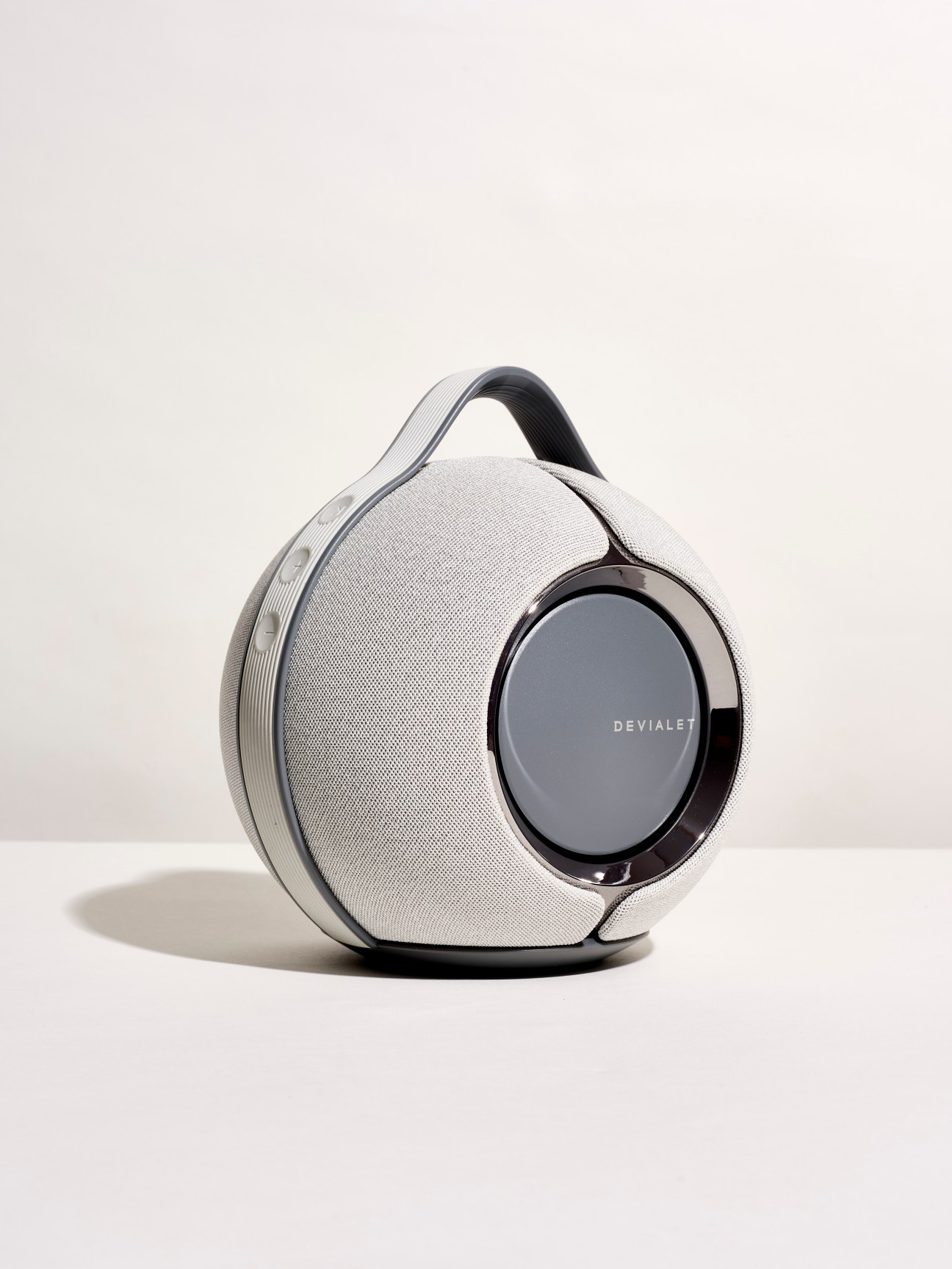
Staying hydrated is essential while travelling too, so pack a cooler. We love the Camping Bucket by Niwaki. This waterproof bag can be folded flat for easy storage and then opened when needed. We’re filling ours with Strong Blonde Golden Ale by La Chouffe, the Belgian brewery whose bottles and graphic design are as tasty as its beverages.
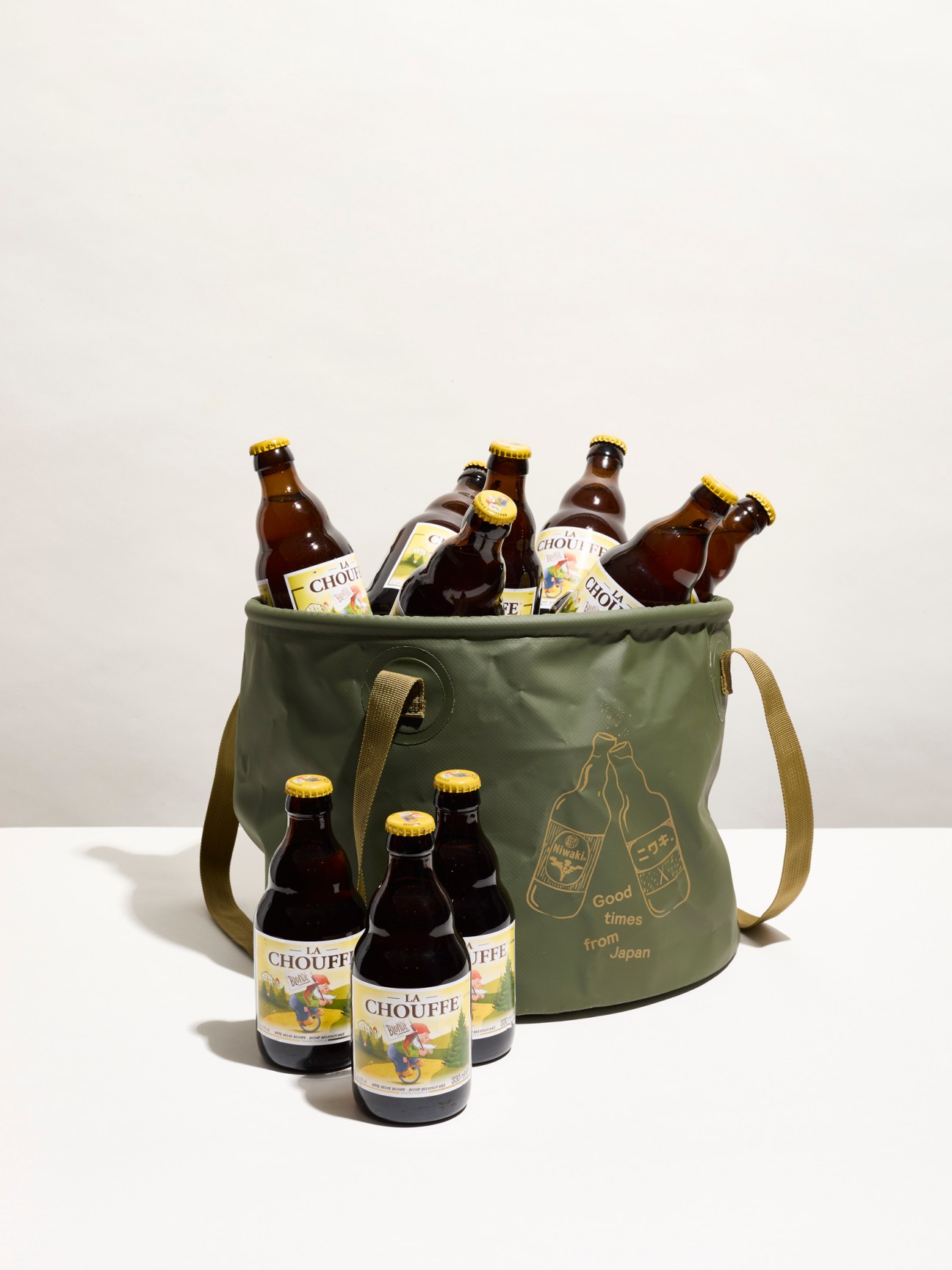
14.
The Manner
New York
The interiors of mid-century Italy were unapologetically grand, intricate and brimming with bravura – a world away from what you’ll find at most modern hotel makeovers in the US. A notable exception is The Manner in New York, the latest addition to The Standard International family. When the group’s chief design officer, Verena Haller, set out to find someone to reimagine the property, she enlisted Milan-based Hannes Peer, renowned for his sumptuous residential projects that epitomise Italian grandezza. This establishment, set on Soho’s Thompson Street, eschews the standard, chunky check-in desk in favour of a striking tableau of marble, brass, leather and terracotta, channelling Milan’s most opulent entryways.
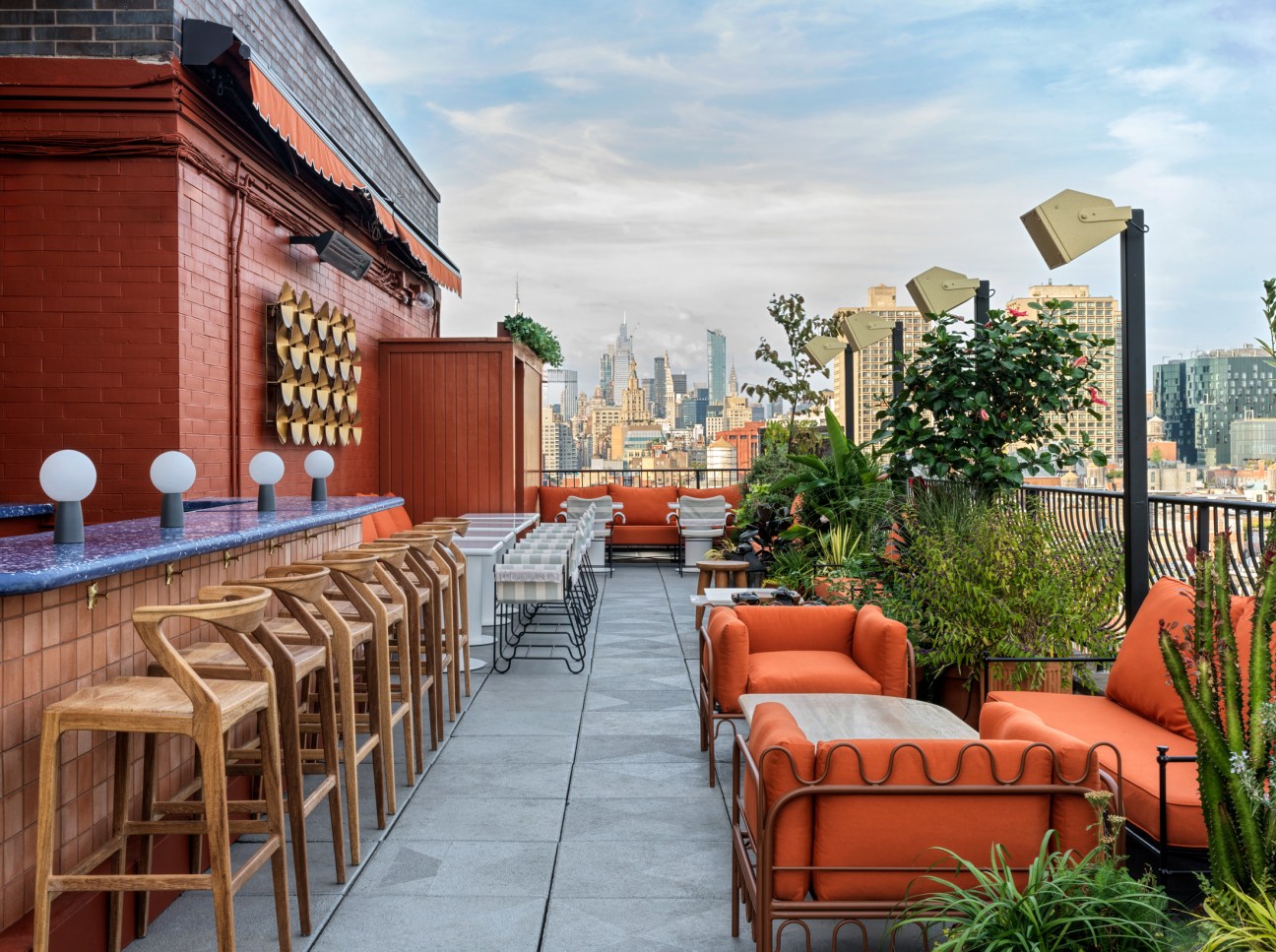
Ascending a travertine staircase, guests are greeted by The Apartment, a living-room-style retreat with a cinematic feel, Pompeian red walls, a mahogany divider and handcrafted ceramic columns by sculptor Ben Medansky. This decadence extends to The Manner’s 97 guest rooms (including 10 suites and one penthouse), where every detail is a tribute to Italianate splendour. Lipstick-red lacquered headboards, floor-to-ceiling mirrors and glossy dark-wood veneers amplify every room’s inherent drama.
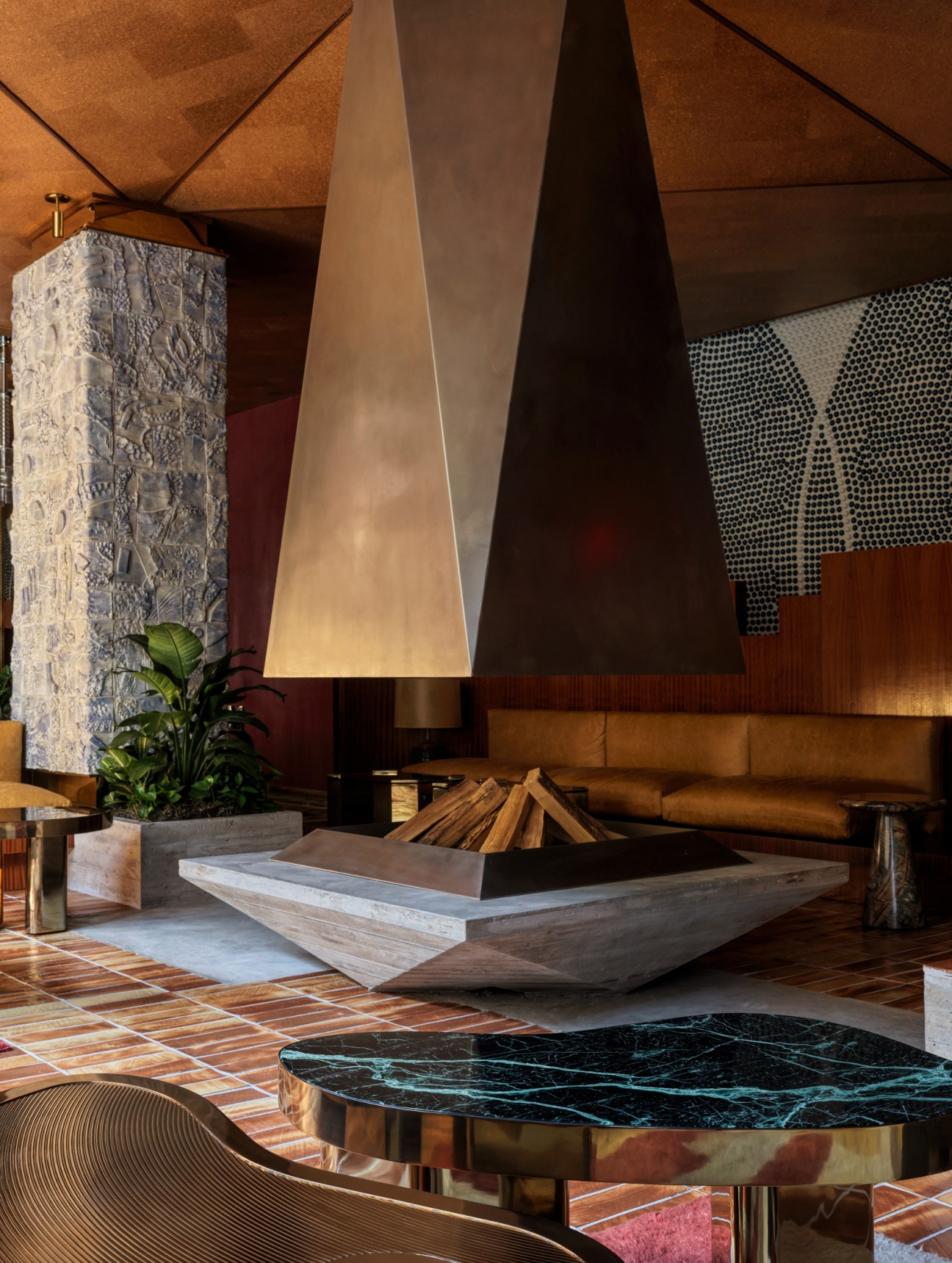
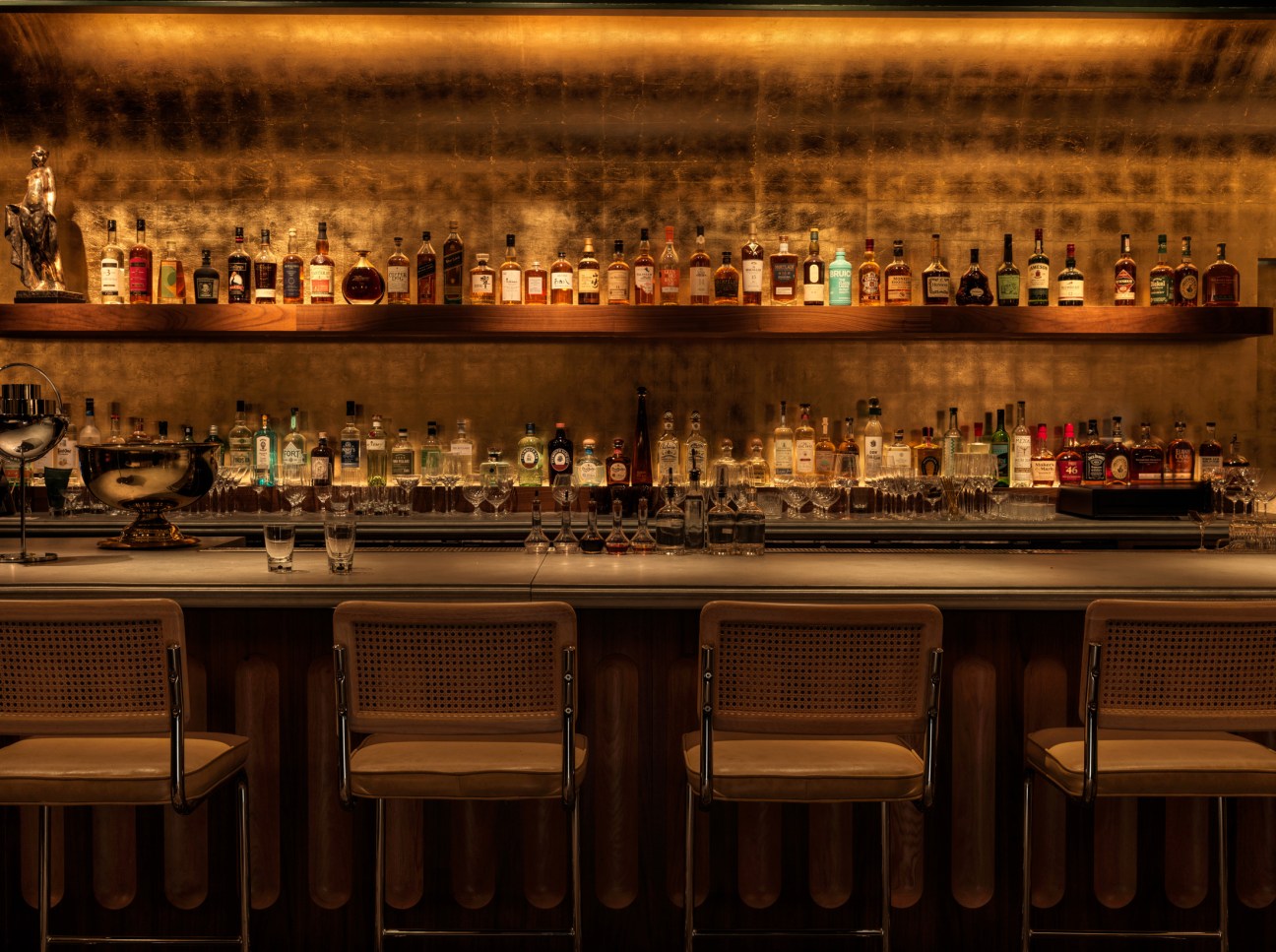
Dining is equally indulgent. The Otter, The Manner’s seafood-focused restaurant, offers dishes ranging from classic shrimp cocktails to a more modern swordfish steak frites. Sloane’s, a discreet speakeasy, serves vintage spirits in a setting that is as refined as its menu. And come spring, a rooftop space will make its debut. You know where to find us.
themanner.com
15.
Die Cafetière
Vienna
German-born Peggy Strobel spent many years in the Netherlands before moving to Vienna in 2007. There she managed Mraz & Sohn, the Michelin-starred restaurant of her husband, Markus Mraz, then stepped back to start a family. Harbouring an ambition to open a place of her own, she took a hospitality course in Innsbruck. After the coronavirus lockdowns, a friend told her that the Naber Café in the first district, run by the family-owned Naber Roastery, was looking for a new owner. Strobel didn’t think twice.
Strobel has preserved the décor from the 1960s, an era when many espresso joints of this kind sprang up across Vienna. The back of the building now doubles as a showroom for Percy Thonet, scion of the chair-making Thonet family, and Anna Prinzhorn, the creative force behind furniture brand One for Hundred. Alongside pastries, Die Cafetière serves ham-and-cheese toasties called Karl-Heinz, named after Strobel’s late father-in-law who, says Strobel, made them best. “My motto is ‘With and without tradition’,” she says. There’s a stimulating thought to round-out our Wishlist – not all hospitality highpoints involve completely changing the recipe and starting from scratch.
diecafetiere.wien
As well as a thriving capital, Nairobi is a layover city for those on the way to Lamu Island or the plains of Masai Mara. Travellers zipping in and out often find themselves with lengthy layovers: domestic and international flights aren’t always well timed and the two airports – Jomo Kenyatta and Wilson – are a 30-minute drive from each other, making for tense stopovers.
To buy time, some travellers book into generic airport hotels. But those in the know opt for The Retreat, a collection of day rooms at Giraffe Manor. The hotel is located in the leafy suburb of Langata and known, as the name suggests, for its wildlife. Here, layovers can be maximised and enjoyed rather than endured.
The Retreat was created specifically for those who have a couple of hours to kill between flights. Upstairs, a collection of suites overlooks the gardens. Travellers can take a nap or spend time in the communal areas; swimming in the pool, lounging around the fireplace or eating at the hotel restaurant, Daisy’s. The spa is probably the biggest pre- and post-flight draw, with a sauna, steam room and gym, as well as treatments for tight neck muscles and dry skin.

After checking in and freshening up, there are ample ways to maximise a layover and whittle away the hours in Kenya’s capital, a buzzing metropolis worth exploring in its own right. The city’s art scene is booming thanks to the Nairobi Contemporary Art Institute highlighting the work of East African artists. Gallery hopping and long meals at restaurants such as the highly recommended Cultiva are best enjoyed once you’ve scrubbed up post long-haul flight.
For those passing through Nairobi, finding the right base camp from which to recharge can set the tone of a trip. Perhaps in-between hotels would work elsewhere too.
thesafaricollection.com
Take elegance with you
The weekend wonder
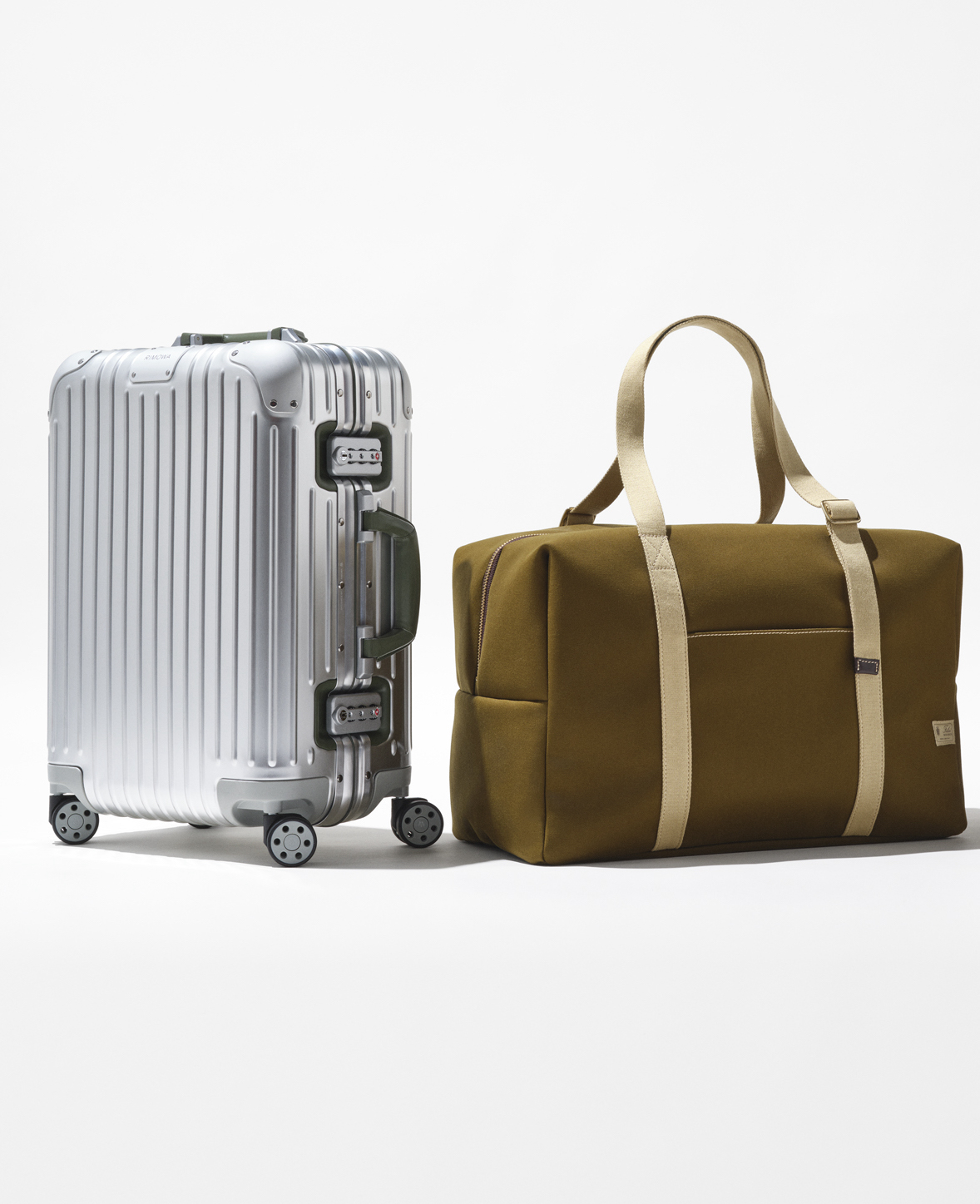
Suitcase by Rimowa, travel bag by Felisi from Trunk
Make a case for style
The ideal short-haul pack
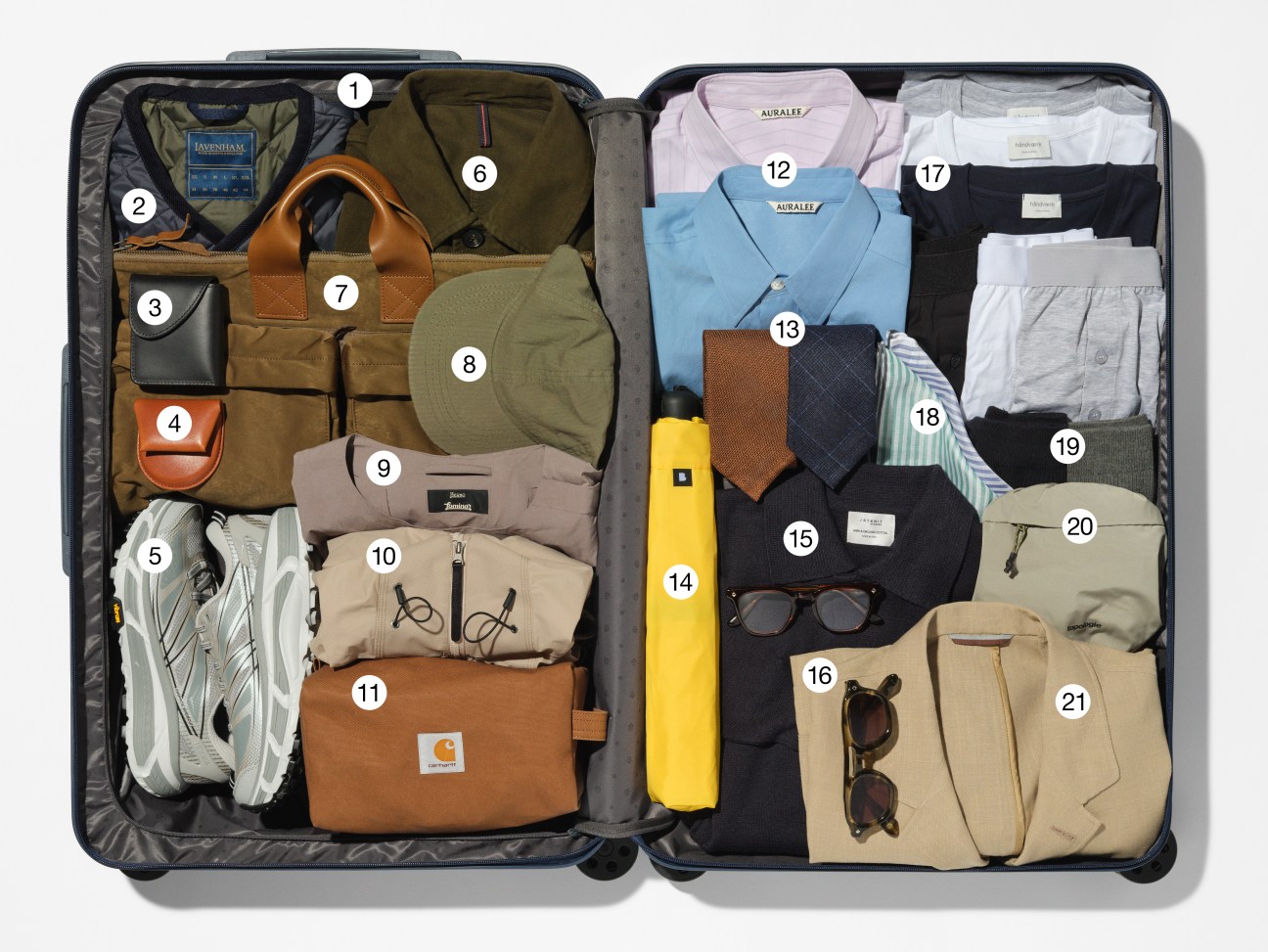
1. Suitcase by Rimowa
2. Gilet by Lavenham from Son of a Stag
3. Wallet by Hender Scheme
4. Coin case by Hender Scheme
5. Trainers by Hoka One One from Mytheresa
6. Jacket by Montedoro from Slowear
7. Bag by Hender Scheme
8. Cap by Kestin
9. T-shirt by Laminar
10. Jacket by Goldwin 0
11. Washbag by Carhartt WIP
12. Shirts by Auralee from Mytheresa
13. Ties by Bigi from Trunk
14. Umbrella by Blunt from Trunk
15. Knit jacket by Artknit Studios
16. Glasses and sunglasses by Lunetterie Générale
17. T-shirts and underwear by Håndvaerk
18. Pocket squares by Simonnot-Godard from Trunk
19. Socks by Uniqlo
20. Reversible bucket by Topologie
21. Jacket by Canali
Brave the elements
The all-important layers
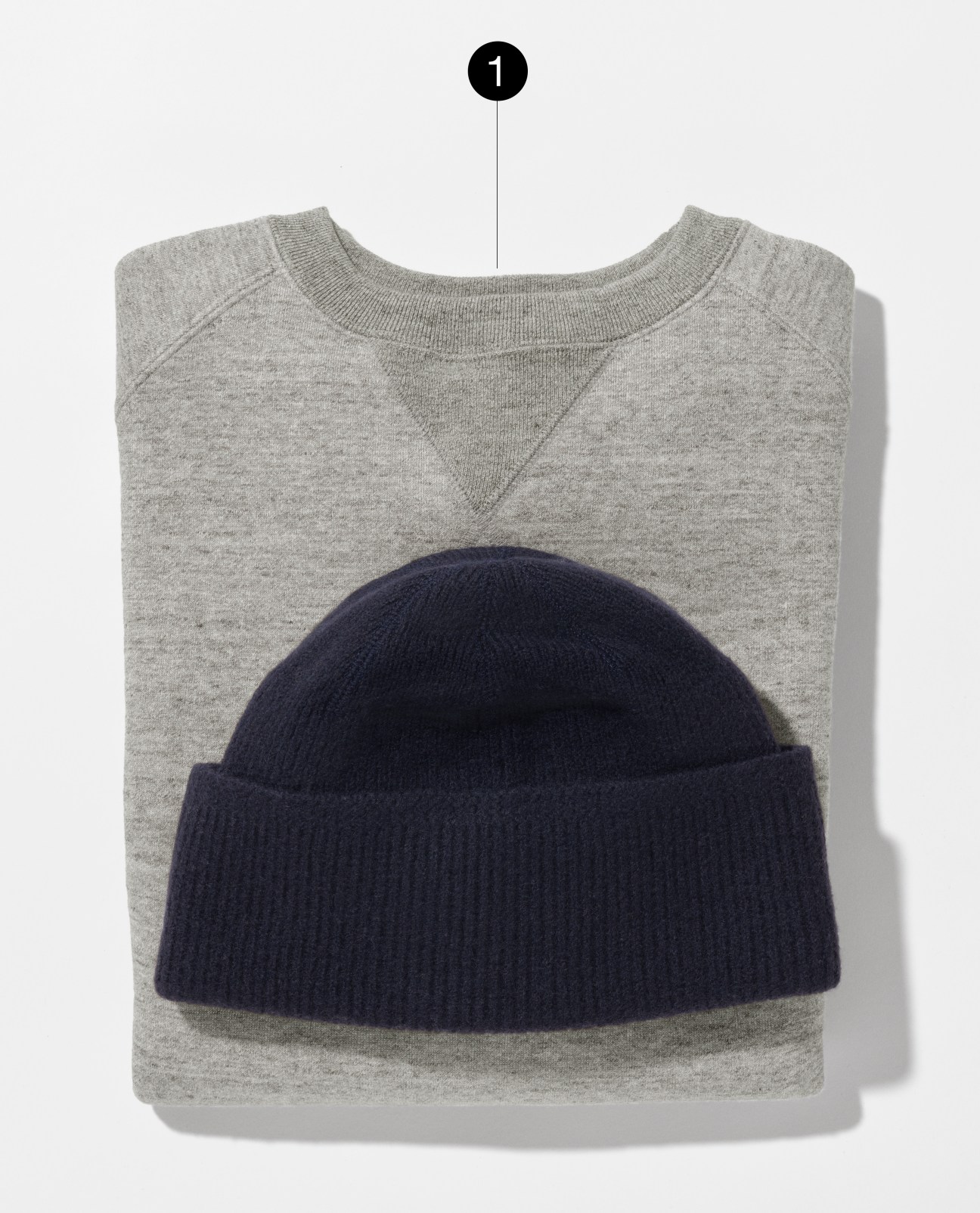
Sweatshirt and beanie by Drei Berge from A Young Hiker
Keep in step with comfort
The goody two-shoes

Boots by South2 West8 x Danner, shoes by Visvim from Mytheresa
Strut the streets
Head-to-toe neutrals

1. Trainers by New Balance
2. Trousers by Hermès
3. Bag by Laminar
4. Socks by Thunders Love
5. Gilet by East Harbour Surplus from Son of a Stag
6. Coat by Casey/Casey
7. Wool T-shirt by Artknit Studios
8. Cap by Saint Laurent by Anthony Vaccarello
Go casual
The full monty
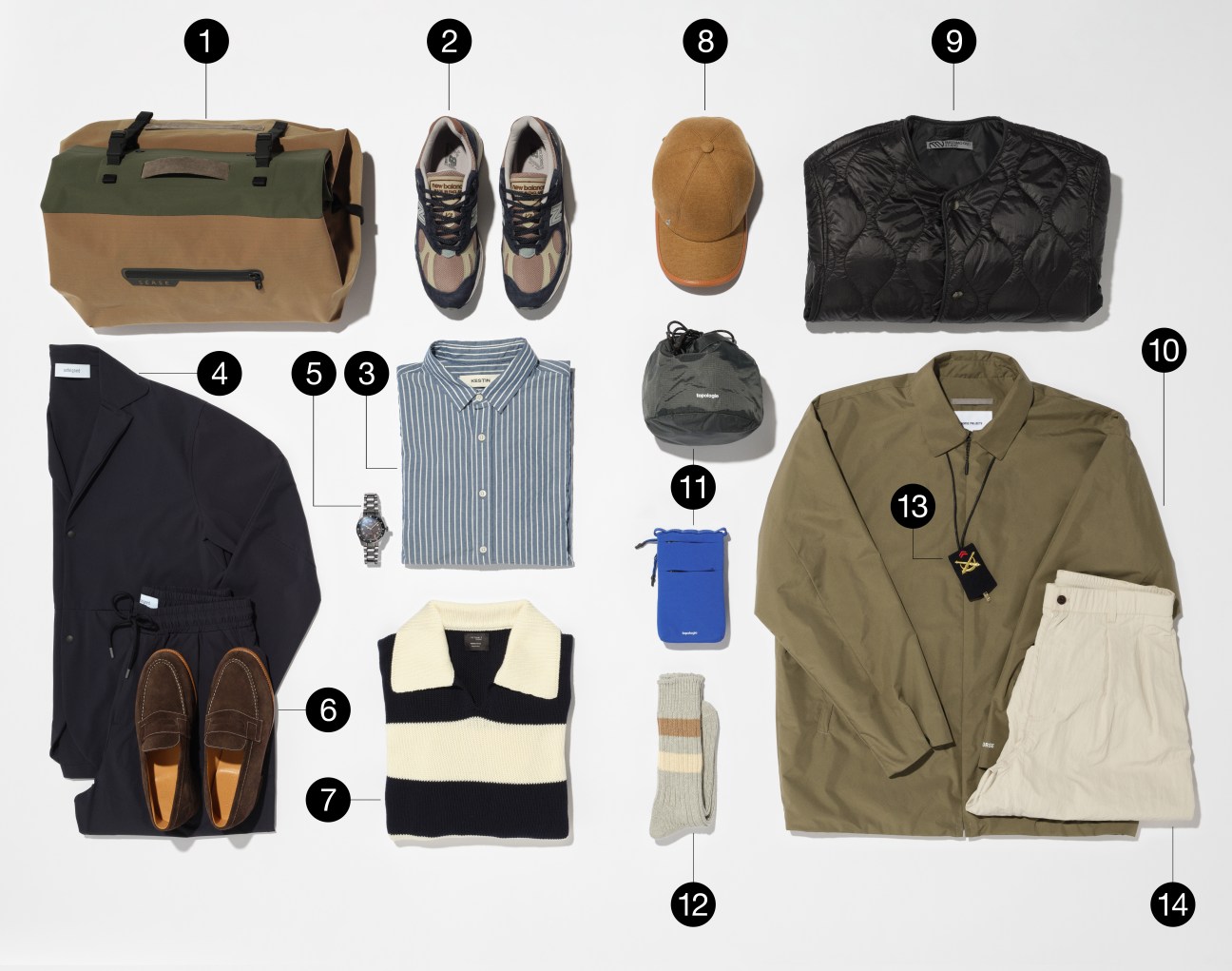
1. Bag by Sease
2. Trainers by New Balance
3. Shirt by Kestin
4. Jacket and trousers by Unfeigned
5. Spirit Zulu Time watch by Longines
6. Shoes by JM Weston
7. Jumper by Artknit Studios
8. Cap by Hermès
9. Gilet by Massimo Osti Studio
10. Jacket by Norse Projects
11. Reversible bucket and phone sacoche by Topologie
12. Socks by Thunders Love
13. Key holder by Cinabre
14. Trousers by Nanamica
The brand with bags of potential
An Chieh Chiang, CEO, Lojel
An Chieh Chiang has spent the past decade reviving Lojel, a suitcase business that his grandfather launched in 1989. The Taiwanese product-design graduate has squeezed a lot into that time. Lojel led the industry in 2017 with its first top-opening hard-shell suitcase. Two years later it became a standalone corporate entity, distinct from the family’s main luggage business. It is now headquartered in Hong Kong, where Chiang is based. The 41-year-old’s most consequential decision has been to start selling directly to consumers. monocle meets him at a shop opening in Bangkok to unpack his brand and the wider luggage industry.
How’s business?
When I took over Lojel in 2014, it was turning over $3.5m [€3.3m] in our three legacy markets: Singapore, Hong Kong and Indonesia. Next year, we’re targeting $40m [€38m], split evenly between distribution and direct sales.
Do you plan to stop working with distributors?
No. We’re a private, family-owned business so we don’t have the resources to enter every market through our own investment. The problem with the model is that distributors only put in 60 to 80 per cent effort – it’s not their brand and it’s contract-based.
You now make most of your products in Indonesia.
We got lucky. Our factory near Jakarta opened before the US-China trade war. The idea was to have two production bases; now 80 per cent of our products are made in Indonesia and 20 per cent in mainland China.
Why streamline your suitcase range from 12 collections to two?
The decision came from listening to our customers instead of just relying on what distributors told us. That led us to our design-for-repair initiative. Having fewer collections means we can standardise and re-engineer parts to increase repairability. Replacing a broken wheel is much simpler these days. We promote “Buy less, buy better”.
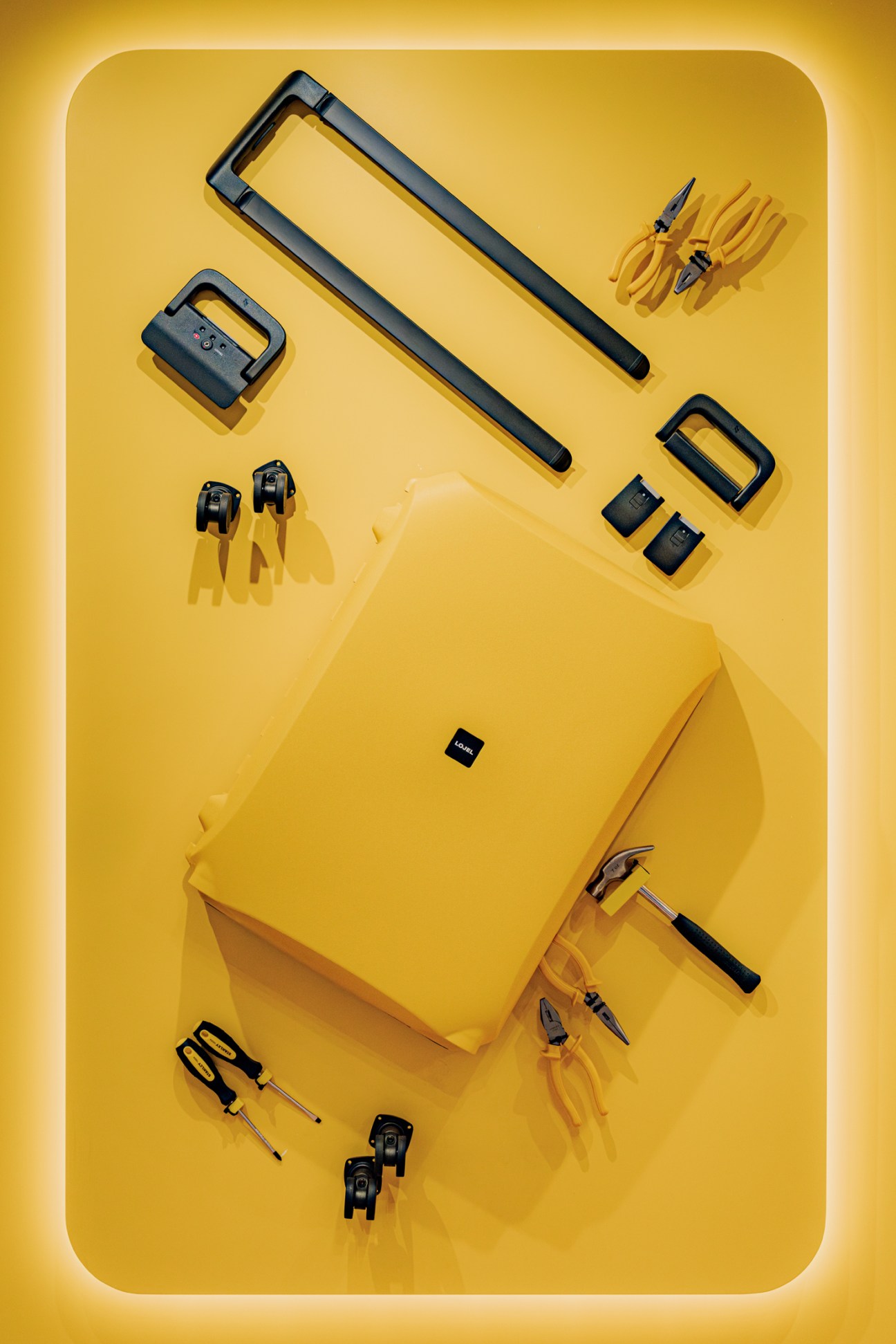
Do airports and airlines influence your products?
You have to balance weight, durability, functionality and style. When Lojel launched, there was no weight regulation from airlines so we were able to create a very robust shell. People are still coming back to us after 35 years to repair the wheels. That means the shell is perfectly fine.
Monocle has its own thoughts but what do you make of developments such as ride-on suitcases?
As manufacturers, we have seen so many brands launching new products without proper r&d. Putting power banks into suitcases was a classic example: our distributors asked for this but we questioned the value for customers.
… and equally questionable ‘driverless’ baggage?
It’s not a bad idea compared to the ride-on but there are so many issues to solve when it comes to automation. You would have to make compromises, especially if you’re talking about a lifetime of usage. Changing the entire business model could be interesting. Suitcases don’t get used 95 per cent of the time, so do we need to own one?
Is suitcase sharing a good thing?
We’re not worried about disrupting our business, as long as it makes sense to customers. We could set up a start-up to explore this, even if it’s not under the Lojel brand.
What does Lojel’s future growth look like?
We currently have 53 staff. We have just moved into our new headquarters in Hong Kong that can seat 100 people. So that’s an indication of my expectations.
lojel.com
The man re-examining short-term rentals
Marc Blazer, CEO, Boutique

In 2017, Marc Blazer co-founded Prior, a travel company that creates itineraries using insider knowledge. He is also the CEO of Boutique, a company elbowing into the short-stay rental market with homes and hideaways aimed at “creative minds”. He began his career in politics, serving as an aide to then-senator Jay Rockefeller, before moving into finance. In 2001, he was working for Cantor Fitzgerald in New York’s World Trade Center; when the towers fell, he happened to be on holiday in Thailand. “I was given a second bite of the apple,” he says. “It’s important to do things that give you joy.”
Where is the opportunity in hospitality right now?
Short-term rentals are a $300bn [€269bn] industry. We can all name our favourite luxury hotel brands but there’s no single, trusted brand for homes. Our first step is to become the Relais & Châteaux or the Design Hotels of homes.
How do you ensure that the homes that you list are characterful as your network grows?
The Rosewood Hotel Group has curatorial integrity and that starts with its properties, which always have a story to tell. Boutique’s hospitality experience is delivered entirely by our host. We have no brand standards or 300-point checklist. We want to create a system that ensures, for instance, that there are no other houses within a five-mile radius of a property and that the fridges are always stocked with local products when a guest arrives. It needs to be an expression of what’s real and true to a place.
You invested in Copenhagen’s Noma restaurant in 2013. Could you tell us about that?
At the time, it was just a 40-seat restaurant – a tiny business with a huge brand. René [Redzepi, chef and co-founder] was trying to build something permanent. We had tremendously talented people coming through the kitchen and spent years training them but they would go off and set up their own thing. So we said, “Why don’t we give them a hand and own a piece of the business?” We developed a group that now includes Sanchez and Hart Bageri, among others. It’s an enterprise with cash flow from multiple operations. At Noma, I learned that scarcity and quality are key ingredients for luxury brands.
Airbnb is being squeezed from multiple sides: cities are bringing in restrictions and the revenue in once-thriving markets is declining. Boutique is an evolution of this model. Are you concerned?
Airbnb has been incredibly successful but seems to have forgotten the consumer. It’s the Walmart of stays, whereas we’re the Colette. It’s an entirely different experience. When you have millions of listings and billions of stays, there’ll be bad experiences.
But Boutique has a lot of listings too. How do you maintain quality?
A pretty home isn’t enough: it’s about the homeowners. Many are self-made people and entrepreneurs from creative industries. Those are the ones we want to get to know. Our guests are very discerning and give us feedback. If there’s a shortcoming, we address it with the host. If it happens again, we archive the listing until it’s fixed.
Airbnb lets the market decide through the use of reviews but you don’t. Why?
Look at Tripadvisor: the best restaurant in Rome is apparently a burger joint. The crowd doesn’t know what “good” is. We’re seeing a backlash against aggregation. There’s an opportunity for well-travelled people with taste to offer advice to consumers seeking quality experiences. That’s what we’ve done with Prior [Blazer’s travel advisory firm], which has become authoritative.
What’s on the horizon for you?
Either Boutique becomes a multigenerational Mittelstand business – much like what you see in Germany or in Japan – or somebody comes along wanting to add it to their portfolio. I pursue things that give me joy, then figure out how to keep the lights on while doing it.
boutique-homes.com
The Texan queen of quirk
Liz Lambert, partner, MML Hospitality
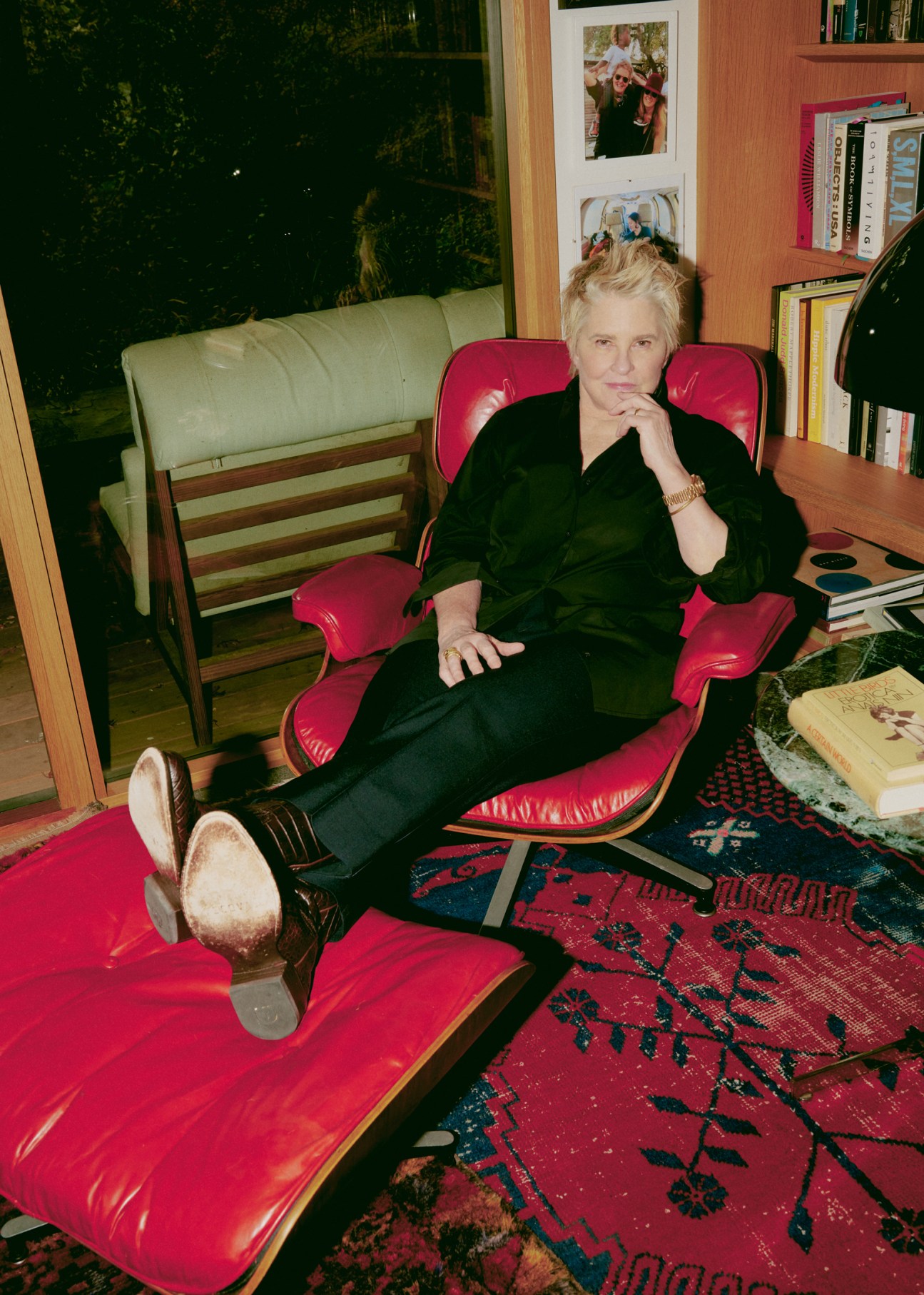
When Liz Lambert shared a business plan to buy a seedy motel on Austin’s South Congress Avenue, a friend scribbled in the margins, “Yeah, right.” But Hotel San José has become a buzzing spot since reopening its doors in 2000. For Lambert, the scion of Texas cattle royalty, this was the start of a burgeoning hospitality portfolio spanning California, her home state and beyond. She named her company Bunkhouse after her family ranch’s guest quarters. Friction with investors Standard International and later Thailand’s Sansiri led to her departure in 2019 (Hyatt purchased the brand in August) but she knew how to land on her feet. She is now a partner at MML Hospitality, where she spearheaded the company’s first lodging property, Hotel Saint Vincent in New Orleans. Lambert also retains ownership of her treasured Marfa property, El Cosmico. Monocle speaks to the veteran hotelier from her Austin home about her next moves.
How did you convince a global clientele that motels could be charming?
There’s a love for the myth of the American West and the motel is a part of that. But I didn’t set out to convince a global audience. No one was more surprised than I was when Hotel San José became so popular, landing above the fold in The New York Times travel section within a year. Road inns and travel lodges are being revitalised. They have more romance than new builds. What’s missing right now is a travel brand for them that’s thoughtful, well designed, simple and not expensive. If someone would let me take over the US chain Motel 6, I would love to do it.
What did hotels mean to you as you grew up?
My grandfather was a rancher and didn’t have an office so we would often go to the local hotel, where you could have your shoes shined and hold a business meeting. My mother loved hotels. In New York we would stay at the Waldorf, where we could sit in the lobby after shopping.
You once said that a good hotel changes a neighbourhood. Why is that?
At their best, they’re neighbourhood hubs. The area around Hotel Saint Vincent in New Orleans didn’t have one. Now it’s a gathering spot where you can have drinks with friends who live around the corner or pop into the shop for a gift. People in the neighbourhood can get a coffee there, and it’s a place where their friends can stay.
Any new lodging properties in the pipeline?
Two hotels. One is a renovation of the Mountain Chalet, an Aspen landmark. The other is Sixth & Blanco, Herzog & de Meuron’s first new build in Texas. The project occupies a city block and will include retail, restaurant and residential spaces with a hotel in the middle.
Are you focusing on new markets or concentrating on where you know?
We naturally go to places that we’re already interested in. My partners are into luxury and spend a lot of time in Aspen. With El Cosmico, I foresee going into other markets such as New Mexico, upstate New York, the Great Smoky Mountains or California. But it’s hard to find the right piece of land.
Tell us about the 3D-printed structures at El Cosmico.
Many new hotels are stick-frame buildings or poured concrete boxes because that’s how we know how to build – it’s easiest for us to build things at right angles. The rooms that we’re creating at the new El Cosmico are domes, silos and parabolas, curved spaces that hold you with roofs that arch towards the sky. They are infinitely more interesting to me than conventional construction.
Who would be your ideal first guests, alive or dead, when El Cosmico reopens in 2026?
Rainier Judd and Maiya Keck, who were the first people I bonded with in Marfa in the mid-1990s. Also, my brother Lyndon, who led me into the world of design but who I lost in 1999. And Le Corbusier – but only to make him jealous.
mmlhospitality.com; elcosmico.com
The firm rethinking the timeshare
Shinji Hamauzu, founder & CEO, Not a Hotel

Shinji Hamauzu’s Not a Hotel is a brand of premium holiday homes in Japan. His team deals with the business of paying utilities and local taxes, while a concierge service takes care of everything from transport and on-site storage to ideas for cultural excursions. With six properties and sales of almost €150m, the idea is clearly catching on.
Not a Hotel offers something that lies between a hotel and a holiday home. Why is this concept right for Japan?
People typically stay at their holiday homes for 20 nights a year and often grow tired of going to the same place. Not a Hotel sells fractional ownership – 30 nights, 60 nights or more – for fully serviced holiday homes in Japan’s most scenic locations, designed by the world’s top creative talent. Once you become an owner, you can exchange your nights with stays at our other properties. On the nights that you don’t use, we operate the home like a hotel, reducing the owners’ management fees.
Will Not a Hotel be running day-to-day operations?
We have a dedicated operations team at every location. We also work on the latest software solutions. Our team made an app that lets owners book nights, unlock doors and control devices and lights.
How do you find the properties?
I started with a beachfront building in my hometown, Miyazaki. Once we were established, many estate agents and property holders across the country reached out to show off their sites. The Japanese countryside has so many different landscapes, from snowy mountains to sunny beaches. We want to give our owners access to all of that.
You’ve been teaming up with some big names in architecture and design. How did that come about?
We worked with Japanese architectural talent first: for example, Suppose Design, Yosuke Aizawa and Sou Fujimoto. Someone from the Bjarke Ingels Group contacted us one day; that started our collaboration on a three-villa site. Since then, we have announced a major project near Tokyo under fashion icon Nigo’s creative direction and a new Kita-Karuizawa property in the mountains with Wonderwall’s Masamichi Katayama. Plus, there’s a ski lodge in Hokkaido with Snøhetta. We try not to impose many limitations. They’ve enjoyed that freedom.
How are things going? And what’s next?
We have four sites operational: Aoshima, Kita-Karuizawa, Nasu and Fukuoka. We also have two Tokyo clubhouses for owners to reserve for dinners or business meetings. Toji in Minakami and Earth on Ishigaki Island in Okinawa will open in 2025. We have four more properties in the pipeline, not to mention many other projects that we’re working on but haven’t announced.
Who are your customers?
Eighty per cent are Japanese but we have made it much easier for those outside of the country to become owners now. Our owners are people who love exploring. We open properties thinking about where they want to travel next.
Can you see yourself expanding to overseas properties too?
Over the past few years, we have made Not a Hotel work well in Japan. To make this work overseas, we’ll have to understand the particular rules and challenges in each market. We’re now building partnerships in other countries to combine our know-how in order to make the most creative projects possible there as well.
notahotel.com
The veteran tourism talisman
Edmund Bartlett, minister for tourism, Jamaica

Edmund Bartlett, who first served as Jamaica’s tourism minister between 2007 and the end of 2011, returned to the post after the Jamaica Labour Party won the 2016 election. His current term has been defined by the pandemic, which caused visitor numbers to drop to nearly zero, depriving the country of one of its main sources of income. But there has since been a stunning rebound: 4.1 million people holidayed on the island last year, a 26 per cent increase on 2022. monocle sits down with Bartlett to hear his thoughts on Jamaican food and the two-way exchange that takes place when people visit.
How important are travel trade fairs to you?
It’s necessary to gather and look at best practices, and develop relationships. It’s all about connectivity and bringing the global players in so they are buying and selling together. More importantly, there are always new thought-leadership activities. Every year fairs guide fresh ideas and enable innovation.
How important is the European market to Jamaica?
It’s very important. It brings a particular demographic into our space that we need, enabling an extended period of vacation. We are close to the North American market, which has a two-to-three-day average stay. With Europeans, we’re talking about two to three weeks. So there’s enormous potential for greater penetration of tourism money into communities. Europe brings a wonderful opportunity for an exchange of ideas and best practices. But most of all, it’s wealth. That’s what tourism does: it is the fastest way to transfer wealth from one place to another. Sometimes, I say that it goes from the rich to the poor but it moves both ways. It’s all about wealth transmission. It has the fastest convertibility of all economic activities. The minute that a plane flies, dollars reach the ordinary man. It’s also the fastest means of recovery for an economy. Tourism is the only industry now that has fully recovered from the coronavirus pandemic and is growing. In the case of Jamaica, we fully recovered and hit 2019 numbers in 2023. Now we’re even ahead.
Jamaica is exposed to extreme weather. How has the country’s bounceback been after 2024’s hurricane season?
We’re resilient. We created a crisis-management centre at our university in 2018 and it helped us to recover quickly from the pandemic. But it has also given us the capacity to respond more effectively to hurricanes. We are vulnerable in the Caribbean and susceptible to other weather events. But we can say to tourists, “Feel free to come to Jamaica all year round. We are prepared and we are ready. We bounce back fast. You’ll be safe and secure. You will have a seamless vacation.
Why should Jamaica be on people’s list for 2025?
It has more attractions than all of the rest of the English-speaking Caribbean combined. We offer multiple experiences, not least the most exciting culinary scene in the region. This is thanks to a confluence of cultures and ethnicities. We know our spices and herbs – very important to our cuisine’s mix of elements, which excites the palate. This also makes visitors curious about our flora and fauna. And then the landscape reveals more about the people, who are Jamaica’s biggest attractions. We have a population of 2.9 million. That’s 2.9 million gems waiting for you.
mot.gov.jm
Crucially, hospitality is also about the atmosphere cultivated by the interior design and architecture, spanning everything from material selection to furniture choice and lighting levels. These are the names making a material difference to leading hospitality operations across the globe.
1.
Chzon
Paris
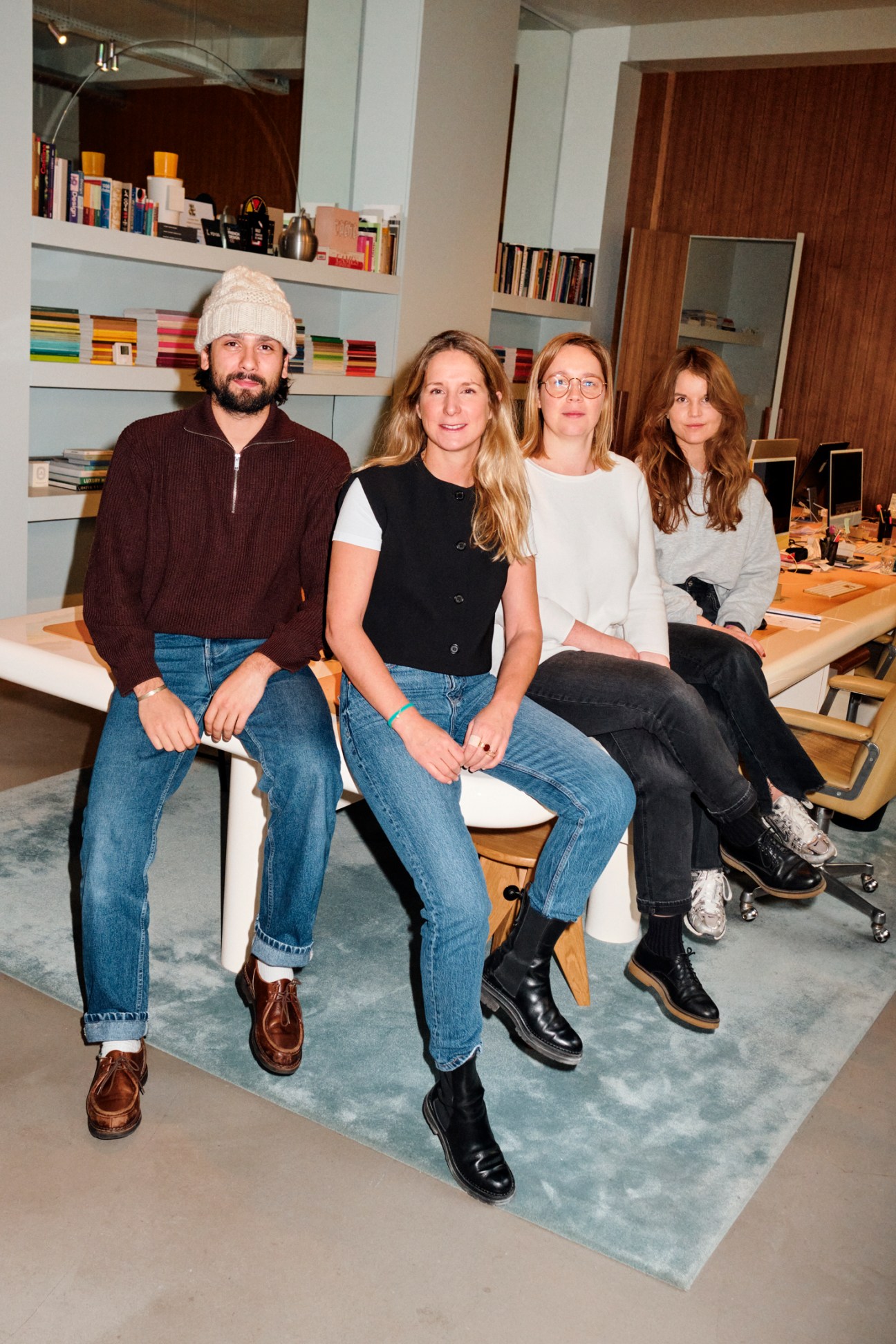
“I made the choice to focus on hospitality because I’ve always enjoyed thinking about the narratives around projects,” says Dorothée Meilichzon, whose colourful design studio is nestled in a Haussmann building in Paris’s 10th arrondissement. “Who is going to sleep in this hotel? What’s the story of the building and the neighbourhood? How do we incorporate it?” The practice, founded in 2009, works exclusively in hospitality design, with recent projects including the Experimental Chalet Val d’Isère in the French Alps.
An essential part of Chzon’s work is to analyse how people eat, socialise and sleep in a determined space in order to provide customers with an experience that feels intuitive. The studio is also keen to make each project distinct. “I get the idea of people wanting a hotel to be reassuring so guests can expect similar things in a particular hotel brand,” says Meilichzon. “But travel is about exceptionality and discovery, so you have to be surprised too.”
Working on introducing surprise means that no two projects look the same and each has discreet but distinct Chzon features. Shades of blue and green tend to dominate, with plenty of samples organised in labelled drawers at the studio, where a small team works in an open space bathed in the sunlight from the bay window. Meilichzon draws furniture for each project herself, which allows the designer to create something with a unique character that is still distinctly hers. The pieces are made using simple materials such as linen, cotton and wood, usually found near each project’s site. “We’re always looking to make the pieces travel as little as possible and utilise local craftsmanship traditions whenever we can,” she says.

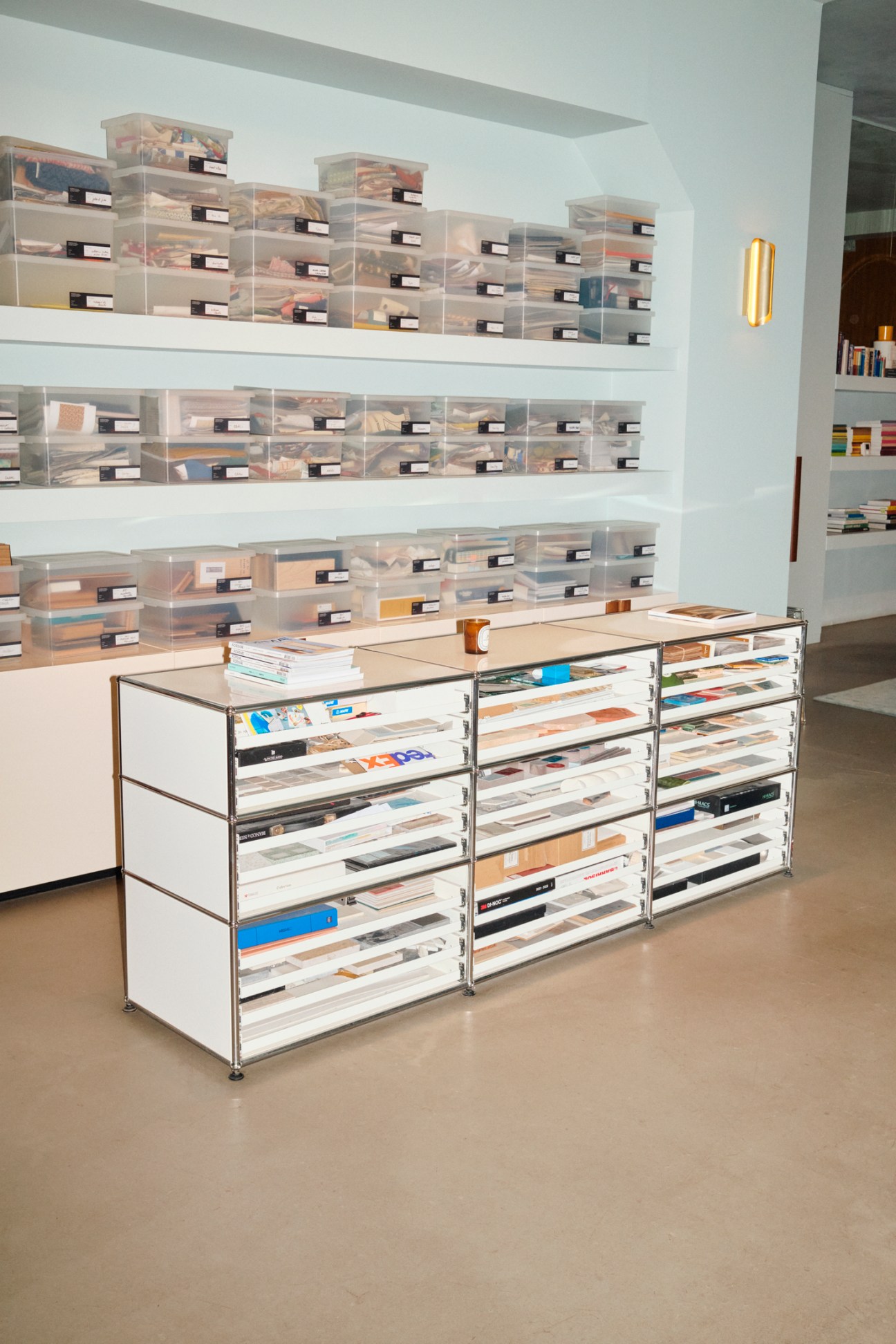
In the case of the newly opened Experimental Chalet, locally sourced pine and wool were used to make traditional Savoyard chests and textiles. Other elements play with the region’s symbols, such as crests featuring the Val d’Isère eagle, door handles imitating branches and unique plaster on the walls. In mixing these details with a building programme that includes two restaurants and a lobby lounge, it means that guests at the chalet – whether early risers who like to be the first on the peak or those more inclined to participate in après-ski activities – are guaranteed a sense of escape.
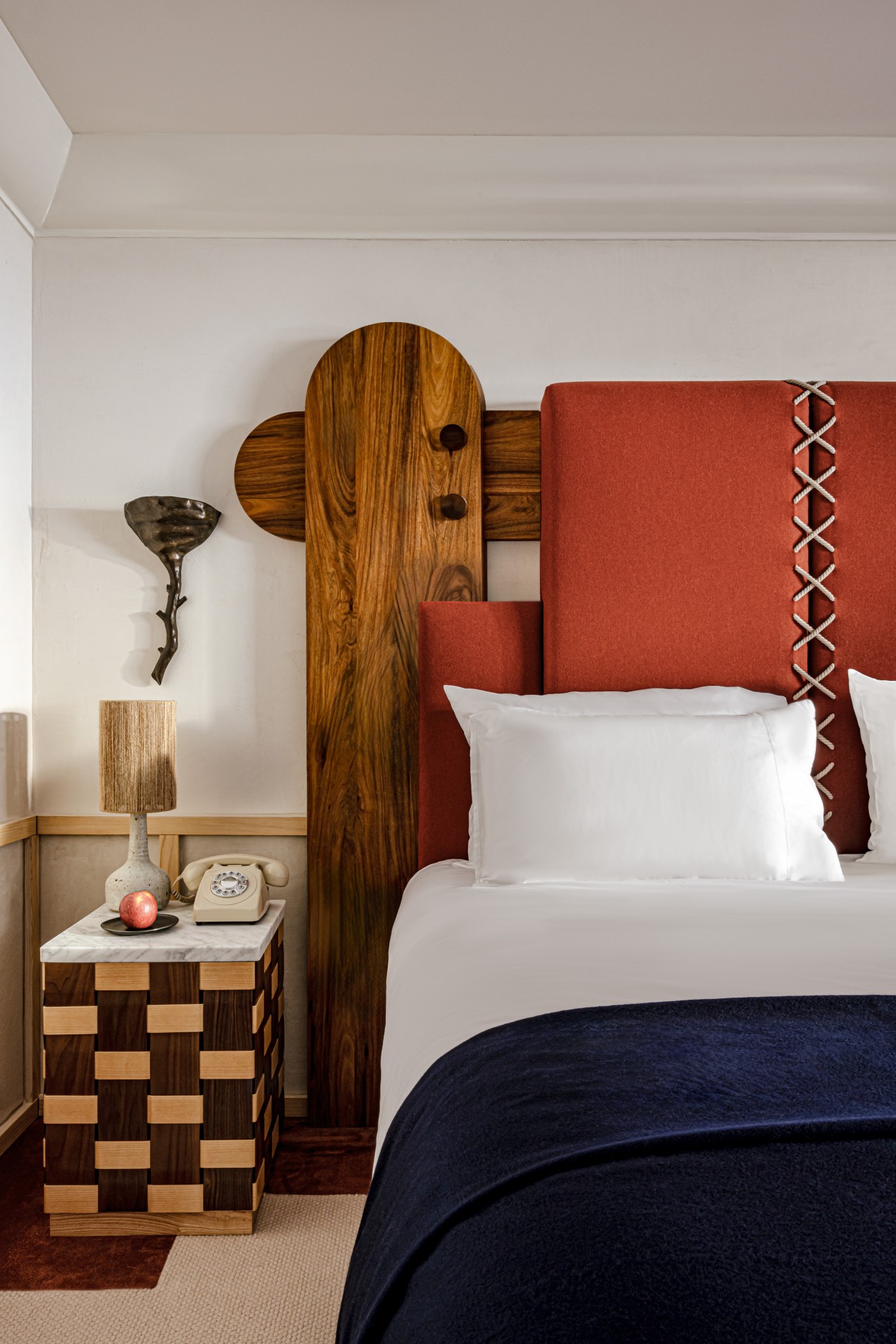
This attention to these seemingly insignificant features ensures that each project feels grounded in place. “I want everyone who walks into one of our rooms to feel at ease,” says Meilichzon. “I want people to see that we’ve thought of them in every detail.”
chzon.com
Projects of note
1.
Hotel Regina
Biarritz
Chzon blended belle époque heritage with a tribute to Japan’s links with the Basque Country at this seaside resort. The rooms are white, blue and mint green with waved, panelled doors and wardrobes covered in Japanese straw.
2.
Mathis Restaurant
Paris
Hand-painted marble arches, antique wall lights and custom trompe l’oeil carpets add to the mystique of this recently revived restaurant.
3.
La Compagnie
New York
Paying respect to winemakers and the landscapes that they work on, this newly opened bar has a dramatic marble, leather and bronze counter.
2.
Acme
Sydney
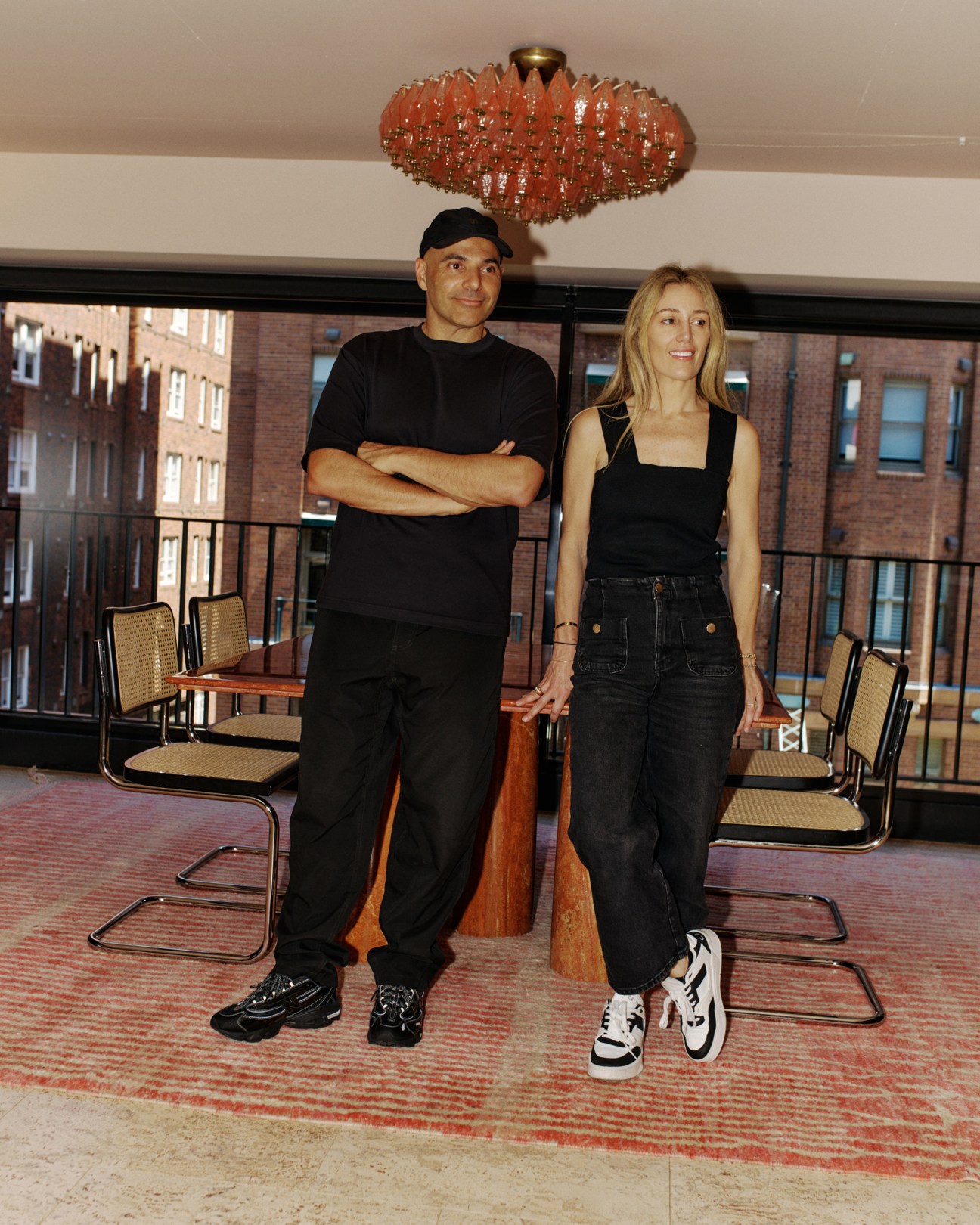
Well-designed hospitality spaces should whisk us away from reality. For Sydney-based multidisciplinary studio Acme, figuring out how to provide that escape has been central to its approach since its first venue, Sydney café The Grounds of Alexandria. “I was working on the interiors for the project and was trying to give patrons a sense of arrival, to move them through the space and take them on this experiential journey,” says Caroline Choker, interior designer and Acme co-founder. It was a challenge that prompted Choker to enlist her partner, architect Vince Alafaci, to look at the café’s master planning and think about how to knit the sprawling site’s disparate spaces into one cohesive story.
The pair’s skillset – Alafaci’s big-picture architectural view and Choker’s eye for interior detail – were perfectly complementary and came to the fore at The Grounds of Alexandria in 2012, a hugely popular venture that uplifted the surrounding neighbourhood and inspired countless imitators. The duo formally founded Acme the following year and have since been responsible for some of the country’s most admired hospitality venues, from the heritage grandeur of Apollo Inn and Gimlet in Melbourne to the panoramic coastal luxury of Sydney’s Mimi’s.

The boutique studio has now grown to six staff and works on just eight to 10 projects a year, all of them powered by Alafaci and Choker’s shared approach. “We create solutions that integrate both disciplines, where architecture and interiors are seamless,” says Alafaci, explaining that although every Acme endeavour is unique, all of them share a vision of luxury that feels distinctly Australian, with an emphasis on context. That is why every Acme venue is characterised by abundant natural light, a multisensory approach to local textures and materials, and exteriors and colour palettes that speak to their area. “The trap for designers these days, especially in the hospitality realm, is taking inspiration from projects in other countries that don’t apply here,” says Choker. “We’re both from Sydney so we try to make sure that anything we do [in the city] is based on our experience.”
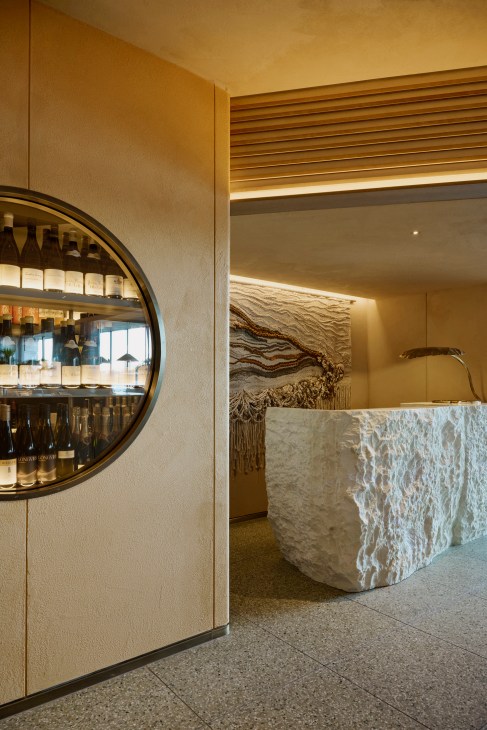
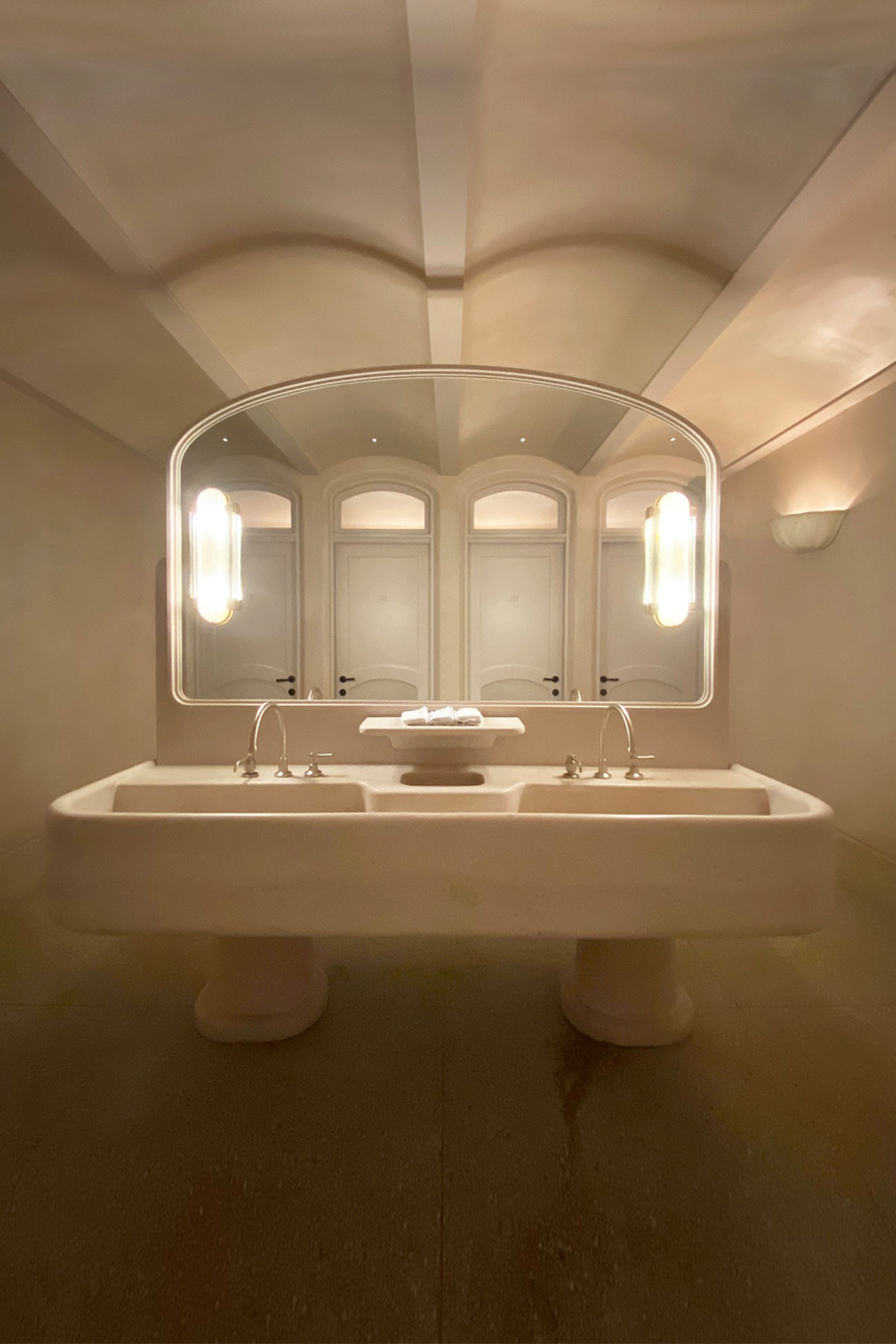
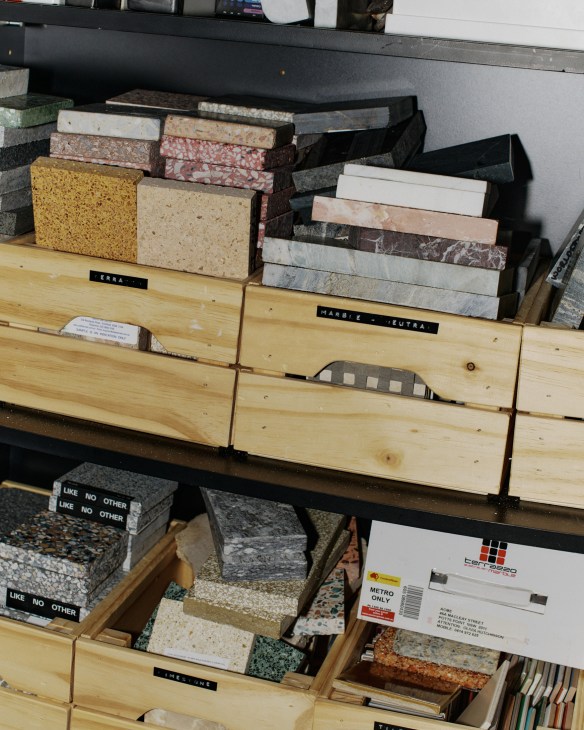
As grounded as Acme’s projects are in their Australian surroundings, the mission of transporting guests away from the familiar rhythms of their everyday life is still the priority. And it begins with a story. When Acme does its initial conceptual presentation to its clients, in addition to a floor plan and 3D visualisation of the space, the designers also present a storyboarded narrative of the venue. “We almost treat it like it’s a movie,” says Alafaci. “We write this story of the place and create a fantasy of what the project could be – it helps our design to have that touchpoint and it immerses the clients in the journey that we want to take guests on.”
acme-co.com.au
Projects of note
1.
Gimlet
Melbourne
Acme brought a classic European charm to this restaurant, with leather booths and marble tabletops, and an atmosphere to rival hotspots of the Roaring Twenties to this landmark 1920s building in the city centre.
2.
Mimi’s
Sydney
Acme enhanced the restaurant’s coastal atmosphere with a pared-back interior. The arched windows, which frame views of the Pacific, are the star of the show.
3.
Supernormal
Brisbane
This offshoot of the Melbourne restaurant feels distinctly Brisbane, with abundant natural light and earthy tones to match the dark waters of the city’s river.
3.
MHOA
Austin
The ideal dining room seats about 40 people. That, at least, is the consensus among the restaurateurs who work with Michael Hsu Office of Architecture (MHOA), an Austin-based firm that has made a name for itself with eye-catching restaurant design. While many such establishments can seat far more, this perceived optimal size creates the opportunity, says Hsu, “to design spaces within spaces”. Take Uchiko Plano, a sushi restaurant in a Dallas suburb, which opened in 2024. It can fit 175 guests but following that golden rule led MHOA to design different areas, from a noisy bar for a lively night out to a hushed nook in the rear of the dining room for private conversations.
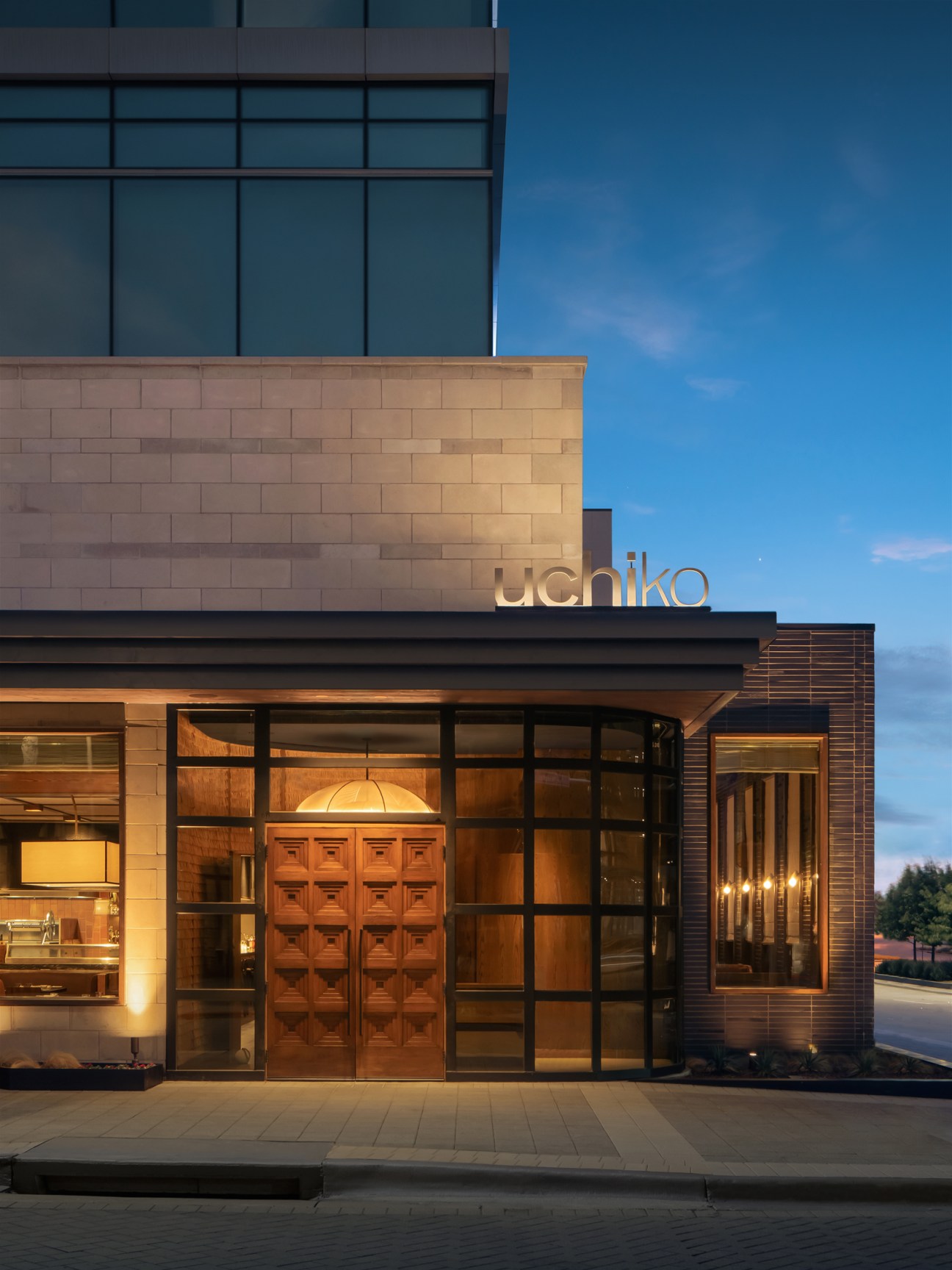
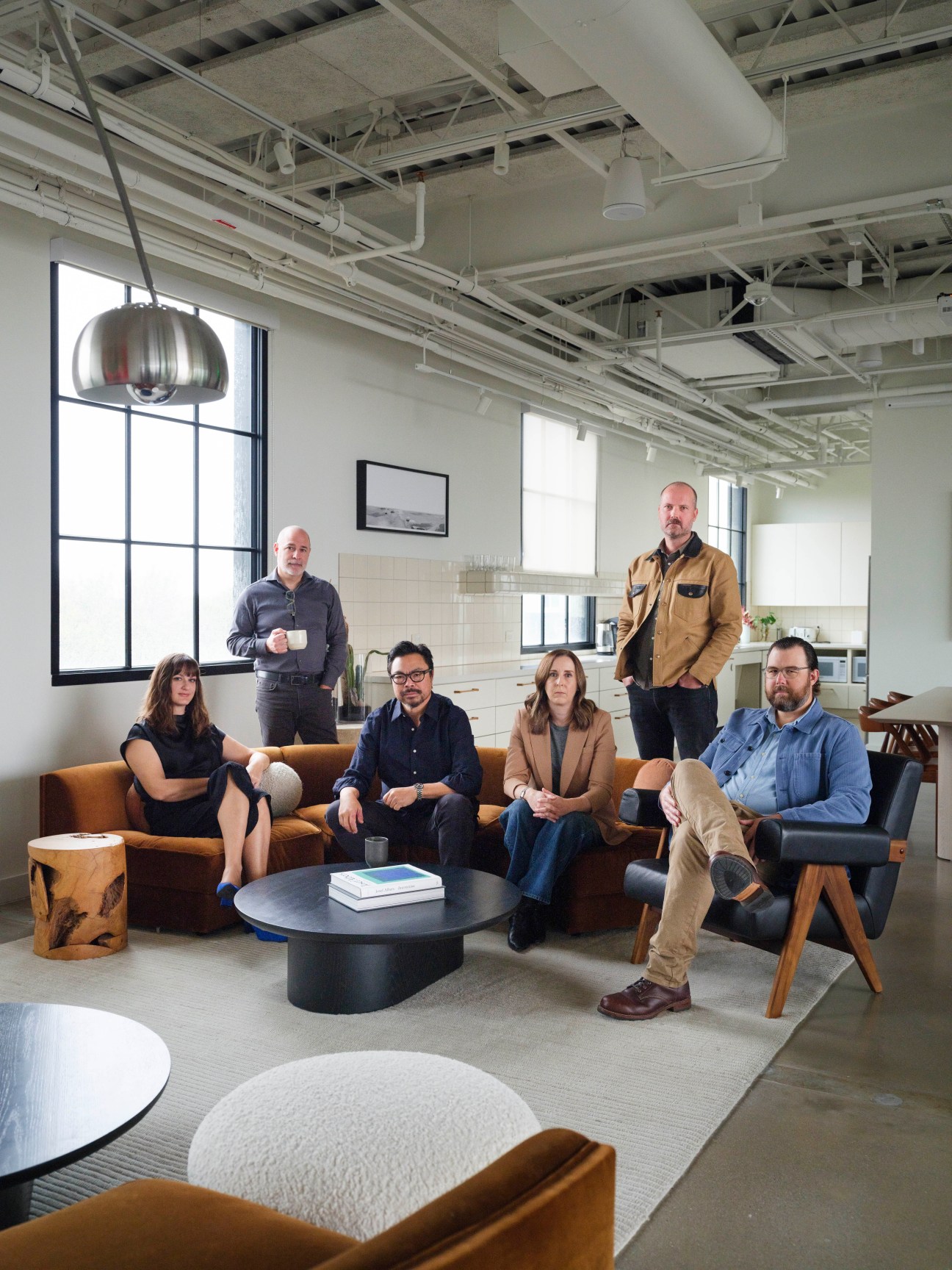
The emphasis on acoustics fits with MHOA’s philosophy that designing for dining is a multi-sensory experience. There are the obvious tastes and smells of the food but also distinctive visual techniques, such as providing sightlines to signature elements of the kitchen – say a wood-fired grill or chicken rotisserie. “Restaurants elicit a higher level of emotional response than other spaces,” says Hsu. “So we ask what we want it to feel like before we dive into what we want it to look like.”
For architects, conjuring feeling is a matter of paying close attention. “We expect all of our designers to be really astute observers of the world,” says MHOA principal Maija Kreishman. “Is the lighting too bright or too dim? Is my seat too wide or too high? Hospitality is made in the inches of a table, zeroing in on the many small elements to make one larger whole.”
Hsu was born in Taiwan, where his mother, a classically trained chef, ran a noodle shop. He was raised in Houston and educated in Austin. The two cities are now home to his firm’s two studios, with hotels and restaurants accounting for about one third of the portfolio. And while Hsu has carved out a name among the Michelin-aspiring set, he is just as willing to apply his sheen to labour-of-love projects, such as restoring a casual bar, Uptown Sports, in an Austin heritage building that serves shrimp po’ boys and shows sport on TV.
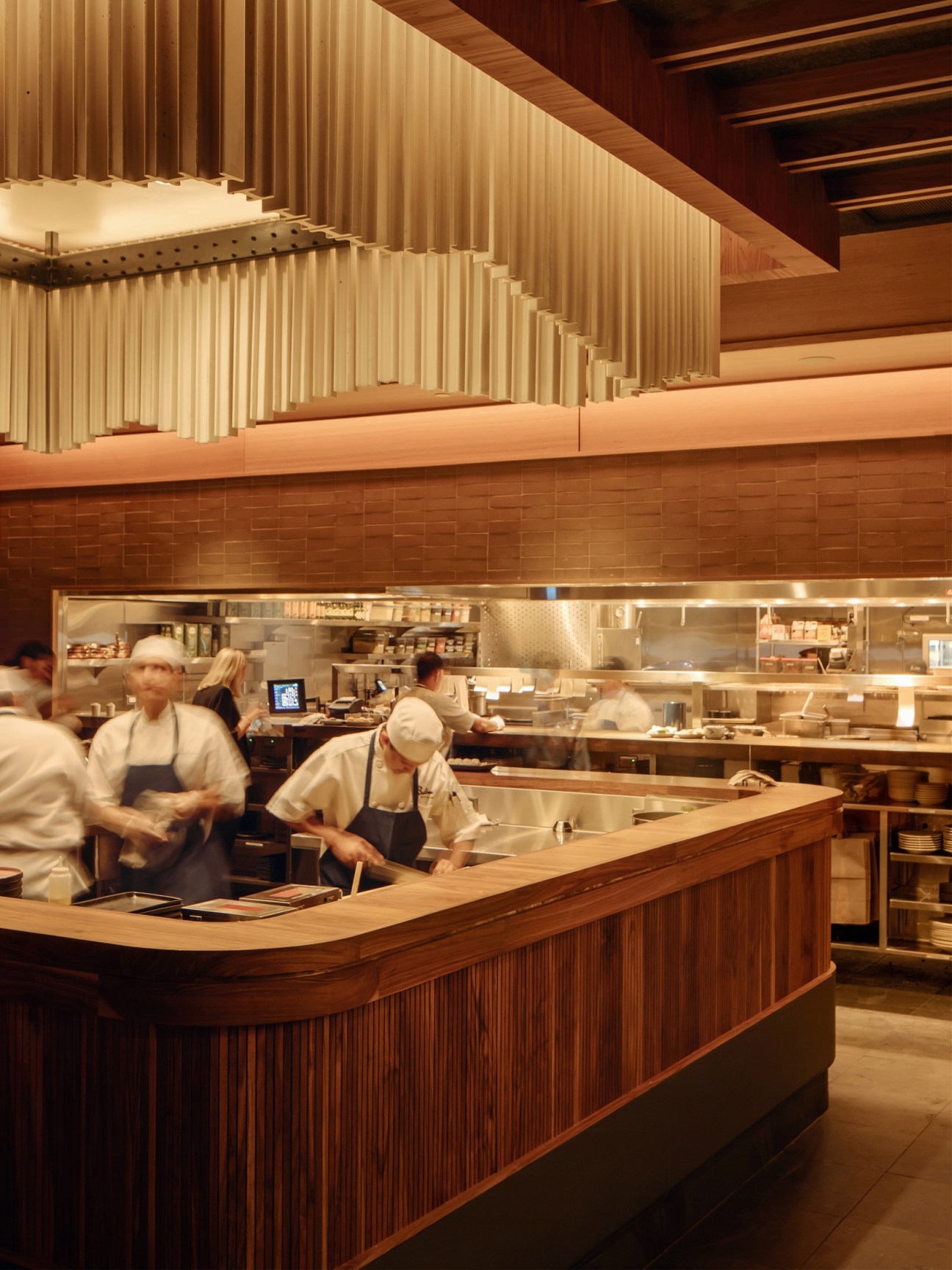
For Hsu, a year travelling in Europe as an architecture student – and talking his way into a job with Rem Koolhaas along the way – cemented the notion that a worldly designer is a better designer. He cites being inspired by places such as the Alhambra gardens or a mid-century ranch on the Californian coast. Ultimately, Hsu’s firm gravitates toward the world of food and drink because they find kindred spirits among their clients. “Restaurateurs are some of our favorite people,” says Kreishman. “We all love to travel.”
hsuoffice.com
Projects of note
1.
Uchi
Austin
Hsu launched his career by transforming this south Austin bungalow into a cross between a Texas roadhouse and a Hokkaido farmhouse in 2005. Fittingly, the sushi restaurant’s name means “house” in Japanese.
2.
Balboa Surf Club
Houston
Walk across hand-glazed green tiles until you leave a Houston car park behind and enter a portal to 1960s Rio de Janeiro, where Brazilian brutalism creates a backdrop to a mature seafood menu.
3.
Sway
Aspen
Thailand meets the Rocky mountains in this Aspen outpost, where teak fittings, gentle lighting and plush banquettes set the tone, complemented by lamps made from Thai mulberry paper.
1.
Pulso Hotel
São Paulo
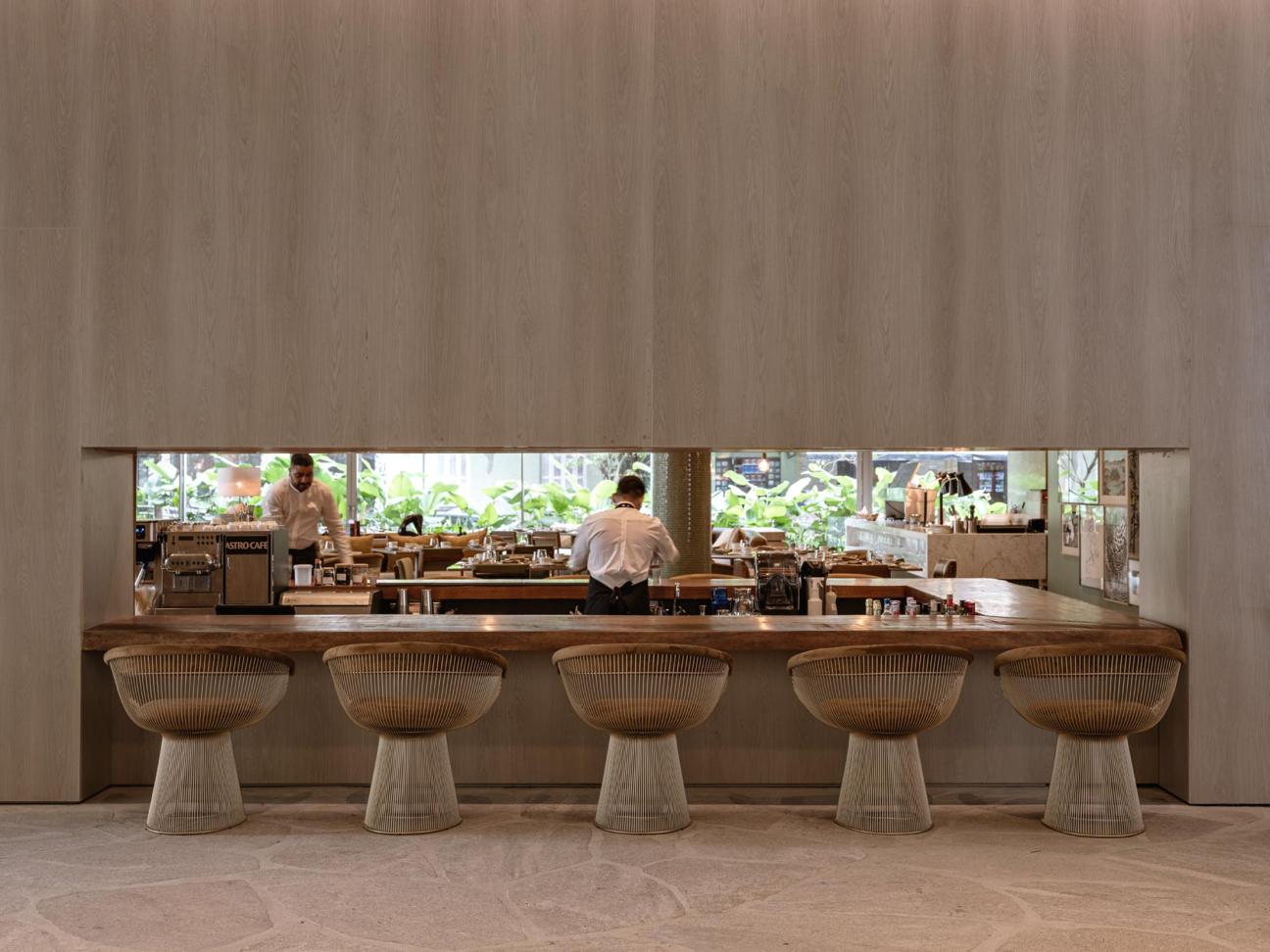

São Paulo, Brazil’s most sprawling metropolis, is the heartbeat of the nation – which is why Otávio Suriani decided to name his latest hotel in the city Pulso. “It’s a word that’s linked to music and movement, both things that we want to bring to the hotel,” he says. Designed by architect Arthur Casas, Pulso sits on the border between the Faria Lima financial district and the buzzy Pinheiros district. It offers 52 apartments and five suites, all dressed in elegant neutral tones. “Casas designed the entire complex, from the façade to the small details on the lamps,” says Suriani.
Pulso pays tribute to two of the city’s biggest strengths: nightlife and food. Chef Charlô Whately oversees the hotel’s Restaurante Charlô and Boulangerie Cha Cha, the latter of which is part bakery, part deli. “This is a city that never sleeps,” says Suriani. “Our nightlife is crazy.” You can experience it for yourself at Pulso’s Bar Sarau, which is always ready to welcome those craving a nightcap and some intoxicating bossa nova.
pulsohotel.com
2.
Yoruya
Kurashiki
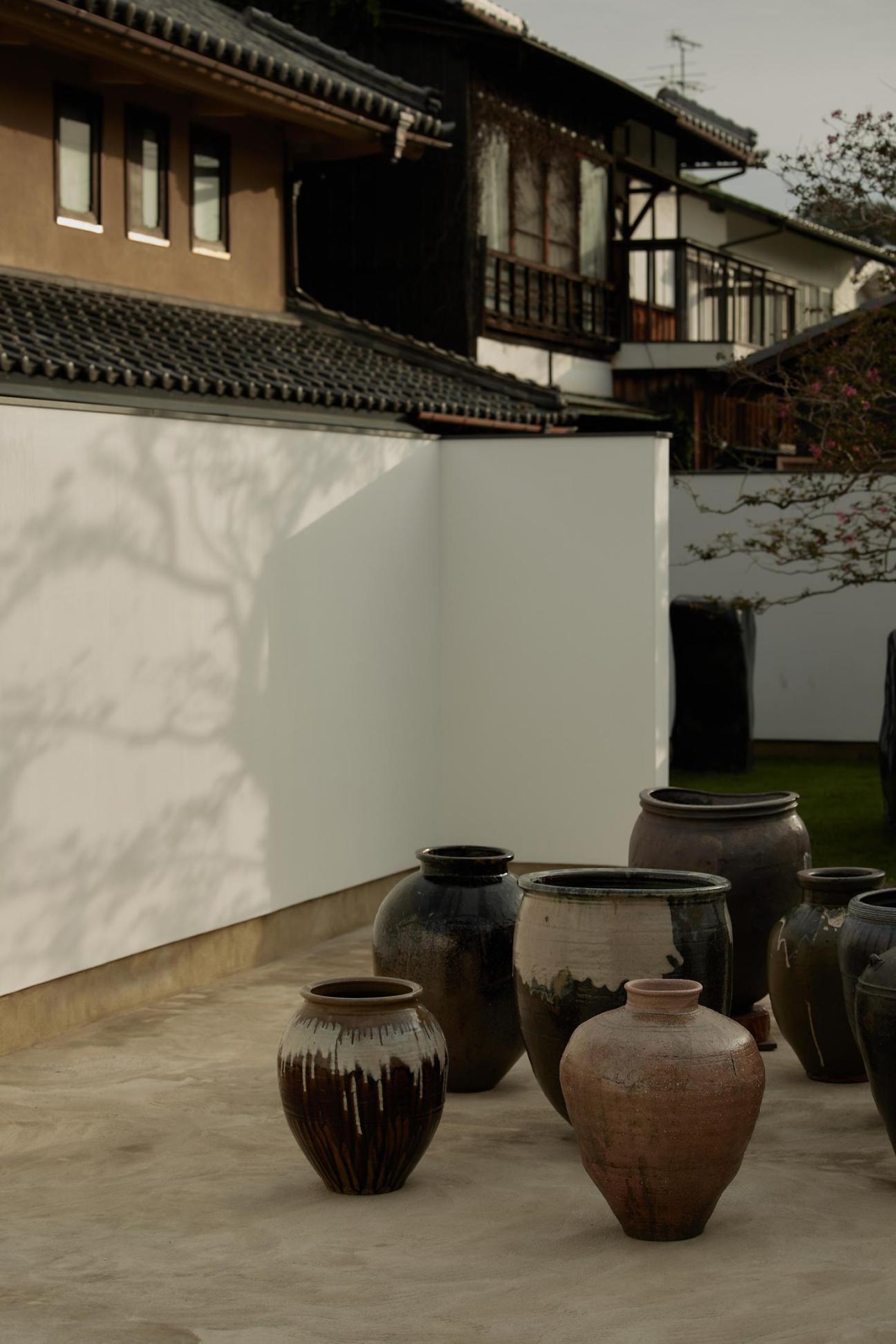
The city of Kurashiki in western Japan has long attracted enthusiasts of folk arts and crafts – it’s home to the Kurashiki Mingeikan, a museum dedicated to the subject – but it also has plenty to offer for those with more contemporary tastes. Fans of modernism will want to visit the Kurashiki City Art Museum, designed by Kenzo Tange, one of Japan’s great postwar architects. Day trippers, meanwhile, come to see the old buildings and tree-lined waterways. Until recently, however, anyone wanting to stay overnight would have struggled to find accommodation to match the surroundings. Now they have somewhere that fits the bill: Yoruya, a 13-room inn in a sensitively converted and extended former kimono merchant’s residence.
The century-old building’s original exterior has been retained, with a simple lantern above the door. Inside, the layout has been designed to mimic the traditional narrow streets known as hiyasai that are a distinctive feature of Kurashiki’s historic centre. Tokyo-based studio Simplicity has brought its signature modern craft style to the interiors – think white plastered walls, well-chosen Japanese prints and art books. The rooms couldn’t be more serene, with low mattresses, cotton pyjamas and baths that are open to the elements.
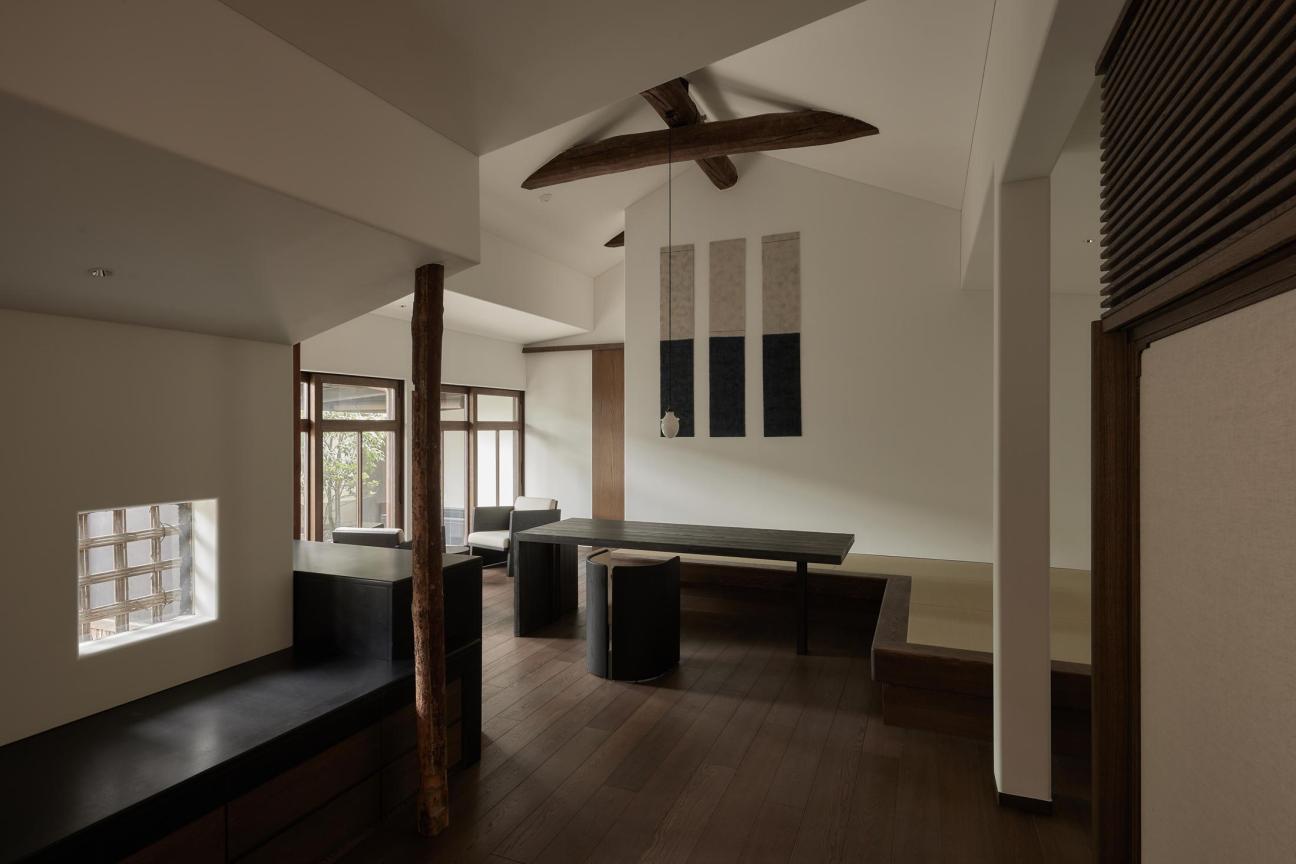
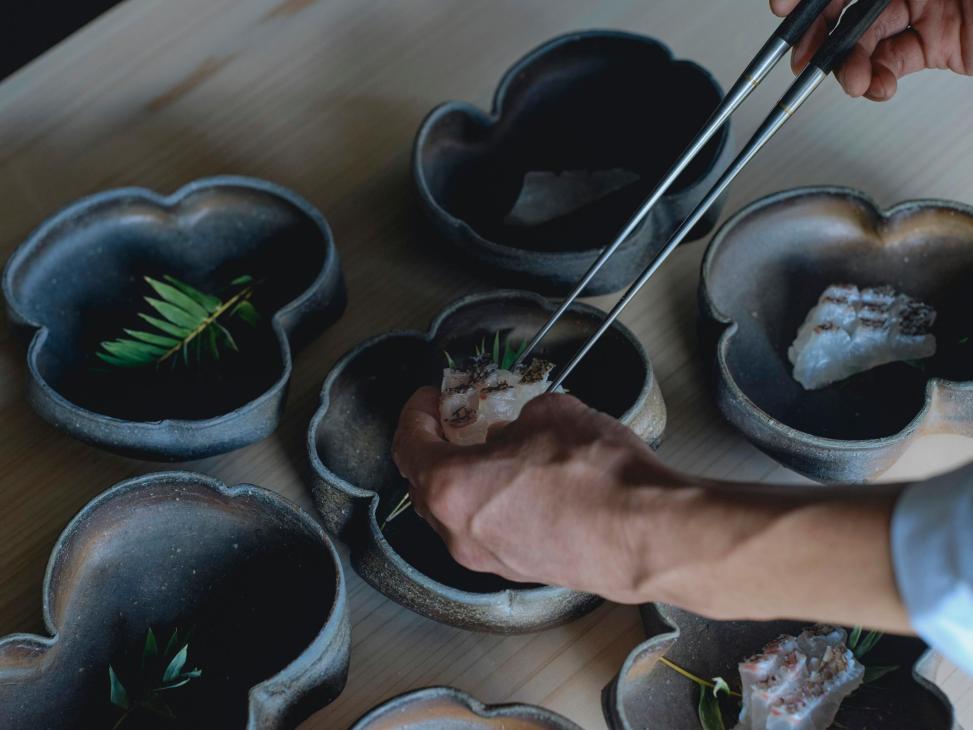
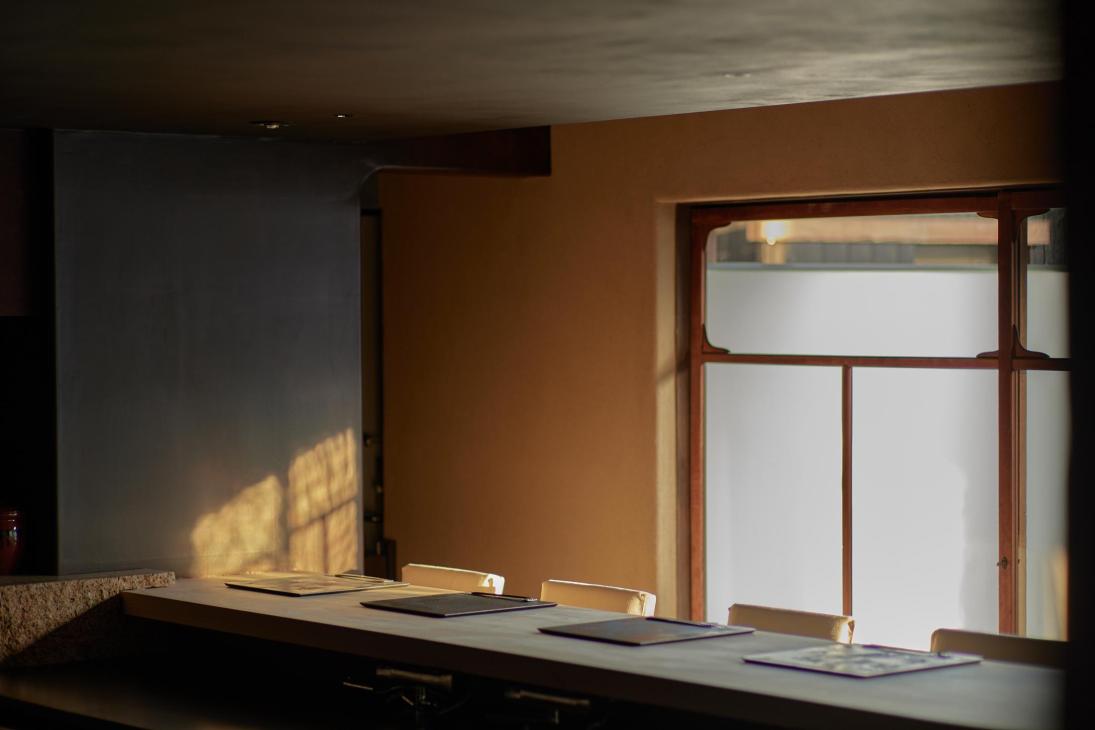
The operations team, Naru Developments, is led by hoteliers Yuta Oka and Fumitomo Hayase. They’ll be familiar to anyone who has stayed at Tokyo’s Hotel K5 or Onomichi’s Azumi Setoda. Dinner in Yoruya’s counter restaurant centres on local produce: chef Fumio Niimi prepares an omakase dinner that features such delicacies as clam cooked in a whole yuzu fruit and Okayama Nagi beef. Yoruya’s invitingly low-lit bar is open to non-residents; it’s well worth stopping in for a glass of wine or a local saké. Breakfast, best taken in the garden with its flowering crepe myrtle tree, is another treat. Expect fresh sesame tofu, grilled mamakari sardines (a regional speciality) and the chef’s homemade Japanese grape jelly. It’s a perfect start to the day before you hit Kurashiki’s streets to explore the city’s many cultural and historic delights.
yoruya-kurashiki.com
3.
Hôtel Dalila
Paris
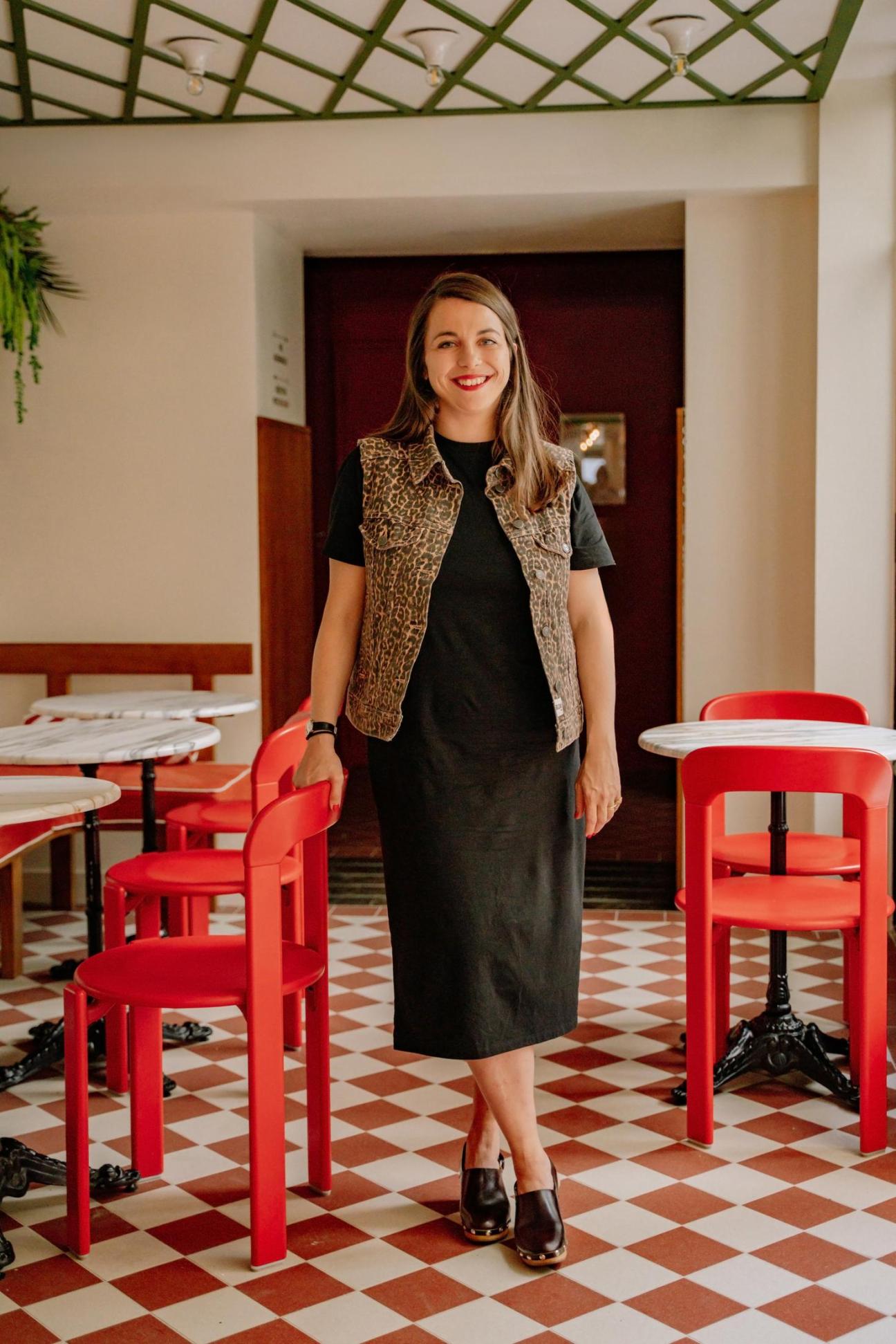
Stroll through Montmartre and you’re almost certain to spot a few flowers hanging from residents’ balconies. The recently opened Hôtel Dalila in Paris’s 18th arrondissement is fittingly floral. Its 49 rooms, breakfast area and workspaces were conceived by Bordeaux-based Giovanna de Bosredon (pictured) of Auguri Studio, who designed the seven-floor hotel to resemble a comfortably lived-in Paris apartment.
“Our work here was a combination of architecture, interior design and curating vintage pieces,” says De Bosredon. “Inside the hotel, the chequered tiles and caning are in Montmartre’s colour palettes: the green of its squares, the red of the wine and the orange of the famous Lapin-Agile cabaret.” Among the vintage pieces are a bistro bar made from zinc and metal lamps by French architect and designer Charlotte Perriand.

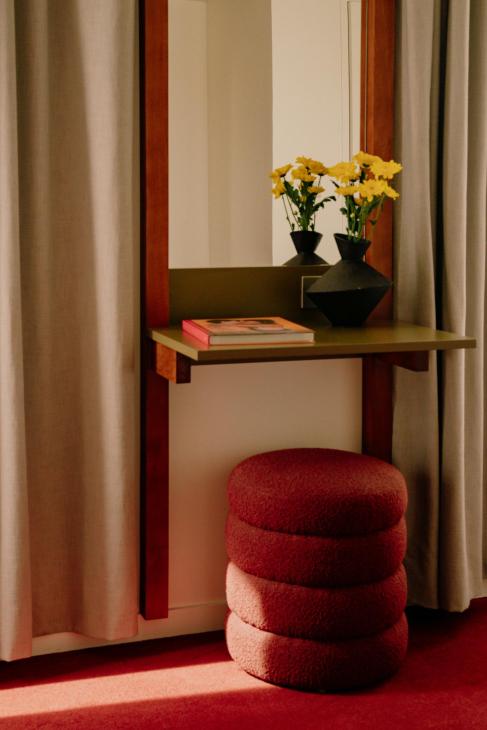
This mishmash of old-school elements is complemented by more modern Hay sconces, bold carpet colours and metal furniture that echoes the seats found in public parks. The finishing touch? A view of the Basilique du Sacré Coeur. Hôtel Dalila is a true neighbourhood gem. Bravo!
hoteldalila.com
It’s an unusually bright day in Bergen, Norway’s second-largest city, as Monocle joins a bus of cheery government and business delegates up the North Sea coast. Our destination is the small island of Øygarden and Northern Lights, a carbon capture and storage (CCS) facility whose opening represents a great leap forward in the country’s aim to be a low-emissions society by 2050. Norway’s prime minister, Jonas Gahr Støre, has preached the necessity of cutting greenhouse gas emissions and protecting the natural environment, pitching his nation as a role model. And he’s right. In 2024, 98 per cent of Norway’s electricity grid came from renewable sources, mostly hydropower, while electric vehicles (EV’s) account for more than 94 per cent of new car registrations, compared to 12 per cent in the EU.
The problem is, depending on who you speak to, the Nordic country is either a green icon or a shameless petrostate. Though it is unarguably a green trailblazer, its decarbonisation is built on the profits of oil and gas extraction, 90 per cent of which is sold abroad, a figure that represents 62 per cent of the country’s total export value. This healthy earner has become a windfall in recent years as a result of both Russia’s full-scale invasion of Ukraine – after which Norway became the continent’s largest supplier of natural gas and second-largest supplier of oil – and worldwide inflation. By the end of 2022, petroleum revenue surged to €125bn, five times more than in 2021; in 2024, Norway’s sovereign wealth fund hit €1.7trn. “We are proud to supply critical energy to Europe during this challenging time,” says Terje Aasland, the country’s energy minister. But pride and guilt are two sides of the same coin in Norway’s oily history and given accusations that the country is profiteering from the world’s crises, the guilty side is growing. The International Energy Agency (IEA) insists that further Norwegian drilling is incompatible with the Paris Agreement. So how will Oslo comply with a treaty – that it has enthusiastically agreed to – at the same time as investing a record €22bn in its oil industry? Its answer is twofold: a hefty €1.9bn investment in CCS and a bet on its untapped resource of rare-earth minerals.
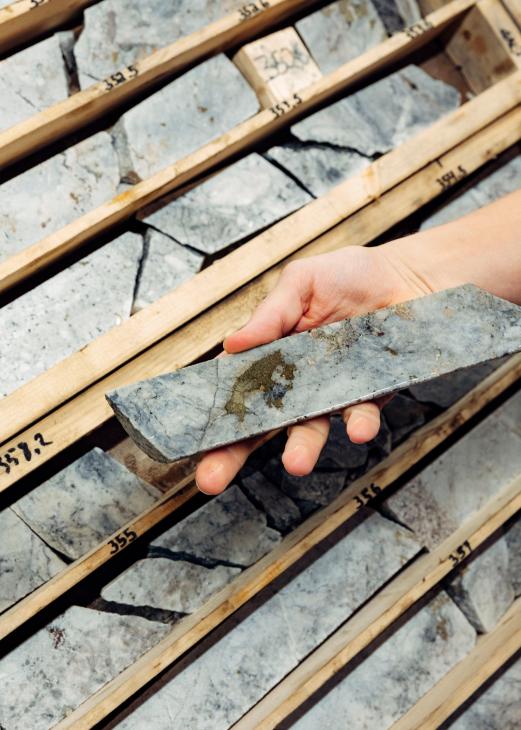

Fifty minutes after departing Bergen, 12 giant metal tanks rise up on the horizon. “This is a great day,” says Aasland, beaming as he gestures towards Northern Lights. “This project proves that we can capture CO2 and store it permanently and safely under the seabed.” Opened in 2024, Northern Lights is the world’s first commercial CCS facility. The idea behind the technology is to capture carbon emissions before they enter the Earth’s atmosphere, liquify them and then pump them into the ground, or, in Northern Lights’ case, a reservoir 2,300 metres below the seafloor and 100km off the Norwegian coast.
The country’s government is pitching CCS as a redemption story, one in which Norway’s fossil fuel extraction can benefit it and the world’s green transition. “Ever since we discovered oil, our continental shelf has been mapped in great detail,” says Torgeir Stordal, director general at the Offshore Directorate, the government’s petroleum regulator agency. “Not all reservoirs contain oil and gas; some just have water. That is where we can inject CO2.” Norway has already pumped at least 25 million tonnes into the crust of the North Sea over three decades and now aims to build a full-scale commercial infrastructure, selling storage to European customers to help their countries offset rising carbon taxes. “I’m convinced that in some years we will have a commercial industry in the European market,” says Aasland.
The crowd at Northern Lights agree – but is this the whole truth?
The tone is less optimistic at the Ministry of Climate and Environment in central Oslo. Monocle bustles through security alongside reporters, opposition politicians and environmentalists to witness the unveiling of the Green Book, the part of the annual state budget that outlines the country’s progress towards its climate targets. When climate and environment minister Tore O Sandvik takes the stage, a sense of disappointment quickly clouds the room. Norway has set ambitious goals to reduce emissions by 55 per cent by 2030 but, if current policies continue, that number is looking closer to 26 per cent. In comparison, neighbouring Sweden has already reduced its emissions by 35 per cent. And, if there’s anything worse to a Norwegian than failure, it’s losing to the Swedes.

“We are a little delayed,” says Sandvik. “But we will reach our climate commitments together with the European Union.” The government’s rather unambitious plan lies in the EU’s Emissions Trading System, which enforces a punitive carbon cap on polluters and lets them purchase allowances from each other to balance the score. But there is a problem: the future prices and quantity of these allowances are unknown, making the strategy a gamble. Despite accounting for at least a quarter of Norway’s emissions, Sandvik is adamant that phasing out oil and gas extraction is off the table. “Europe needs all the oil and gas they can get from Norway in this situation,” he says. Terje Aasland defends this position by stressing that Norwegian oil is greener than that produced by other countries. “Thanks to strict climate policies, Norway produces oil and gas with much lower emissions,” he says. Indeed, Norway was among the first countries to introduce a carbon tax in the 1990s, and the first in the world to build fully electrified oil platforms. But whether its product is the lesser of two evils, its own forecasts highlight the need for entrepreneurial alternatives to fossil fuels. And it might already have such alternatives right under its nose.
It is a misty morning in Ulefoss, a settlement of 2,600 in Norway’s rural Telemark region. The town’s unassuming face belies a potential jackpot deep below the ground. In June, a company called Rare Earths Norway (REN) confirmed that the volcanic Fensfeltet region contains Europe’s largest deposit of rare earth minerals. These precious gems (among them neodymium, praseodymium and 15 others) are essential to green technologies such as EV batteries and wind turbines. “We are completely dependent on these minerals to achieve the green transition,” says trade and industry minister Cecilie Myrseth. With no rare earths industry of its own, Europe relies on China for 90 per cent of its supply, leaving it vulnerable to geopolitical tensions heightened by the election of Donald Trump, who has promised to raise tariffs on Chinese imports while exhorting America’s European allies to do the same. Fensfeltet is estimated to contain 8.8 million tonnes of rare earth minerals, a number that dwarves the 18,000 tonnes imported to the EU in 2022. And with this figure expected to increase sixfold by 2030, it’s no wonder many in Norway are excited about rare earth minerals’ potential to steer the country away from fossil-fuel extraction.
One might imagine, therefore, that ren is swimming in government subsidies but when Myrseth and Aasland sit down to a roundtable with stakeholders, the tone is as murky as the weather. “Where is the willingness to invest?” asks regional geologist Sven Dahlgren. “If things stay lukewarm, we won’t get anywhere.” For decades, Dahlgren mapped Fensfeltet almost single-handedly on local county funding. Since 2016, REN has conducted its work on just €14.8m of mostly private input. This modest budget means that geologist Gaute Magnushommen still manages REN’s thousands of drill samples at a defunct school. “We need impatient people,” Myrseth tells Monocle, before addressing the government’s slow pace. “But we also have to do things properly.” REN did recently receive €5m in state funding for a pilot mine but there is no mention of Fensfeltet in the Green Book, and no government plan to help REN secure financial support from the EU.

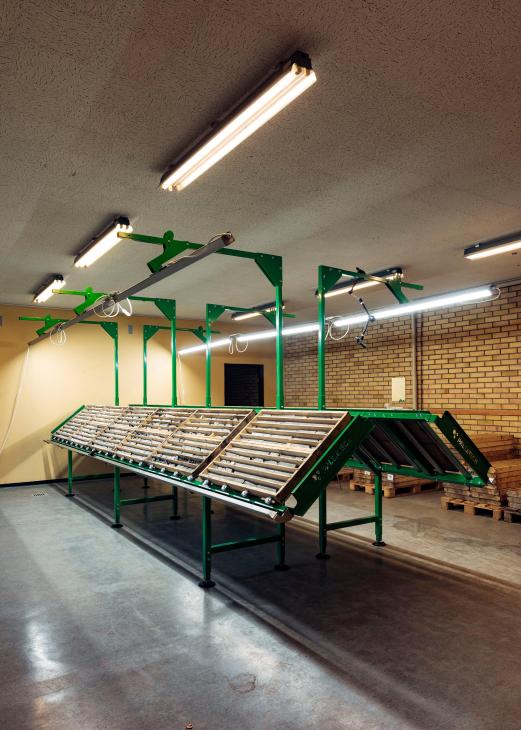
Instead, the government has prioritised its deep-sea mining ambitions, which would involve extracting minerals such as cobalt, nickel and rare earths from the ocean floor. Scientists and environmentalists argue that the practice could devastate ocean ecosystems; many countries have called for a ban. Ignoring international sentiment, Norway raced ahead with plans for commercial deep-sea mining in January and the 2024 state budget earmarked €12m to accelerate things. “We have only opened our oceans for mapping and exploration, not mining,” says Aasland.
Critics fear that Norway will prioritise profit over sustainability. In Ulefoss, there is a sense that deep-sea mining is pillaging resources from a land-based industry that will be more environmentally friendly and is in greater need of state backing. “We probably have up to 10 times more rare earths at Fensfeltet than what has been estimated offshore, where the total area is 6,000 times bigger,” says REN’s CEO, Alf Reistad. At one telling moment in the meeting, Myrseth, who is responsible for the land industries, turns to Aasland, overseer of Norway’s deep-sea mining and oil. “I guess there is a bit more resistance on your side,” she says.
“There is nothing but resistance,” says Aasland, groaning.
The scene is symbolic of Norway’s struggle to become the green leader it claims it wants to be. Pressing ahead with more oil and gas drilling and a dubious offshore mineral industry, it has also adopted a timid posture towards greener ventures, while looking to CCS as a silver bullet, even though some have suggested it encourages carbon emissions rather than abating them. The debate strikes at the heart of Norway’s environmental identity crisis, and promises sleepless nights ahead for its avowedly green political leaders.
There’s something afoot in the peaceful Burgundian town of Autun. Among the vineyards and the vestiges of Roman temples, design brand Tolix has been undergoing what could be described as a fashion makeover since Antoine Bejui and Emmanuel Diemoz took over the company in October 2022. After meeting at Parisian couture house Balmain, where they held executive roles and helped to save the firm from bankruptcy, Bejui and Diemoz worked at fashion brands Anya Hindmarch and Carven, respectively. But when the opportunity to turn around a French heritage brand arrived, the pair sensed that it was time for an industry sidestep. Now, nearly two years since they bought the company, they have helped Tolix to get its groove back.


Raw steel reissue of the 1958 UD chair
Founded in 1927, Tolix produces sturdy steel chairs and stools that you’ll spot in many parks, terraces and cafés across France. Despite this, it has long flown under the radar. The arrival of cheap made-in-China imitations in the 2010s resulted in a challenging time for the company. “Tolix occupies a space in the French collective consciousness without many of us realising it,” Bejui tells monocle at the company’s industrial headquarters in Autun. “The brand was losing esteem. It’s like we’ve taken over a vineyard that hasn’t been tended to for a couple of decades but no real damage has happened. It just needs some attention and care to bear fruit again.”
Bejui and Diemoz’s priority after purchasing Tolix was to streamline its catalogue. Initially, only a small selection of its most emblematic pieces were produced, including the t37 chair, which the brand’s founder, Xavier Pauchard, designed in 1937, and the UD chair by his son Jean, originally made for the University of Dijon in 1958. From there, new designs have gradually been introduced in a more cohesive manner. “While we wanted to establish some house codes, we didn’t want to get stuck on the same three chairs,” says Bejui. “So Tolix asked French designer Pauline Deltour to add pieces such as a high-chair and a bench to her outdoor patio collection [which launched in 2020].” With the brand’s offerings tightly controlled, the materials and colours were also reworked and a more restrained palette introduced. Finally, the duo’s background in fashion came into play as the logo, image and branding were given a contemporary refresh.
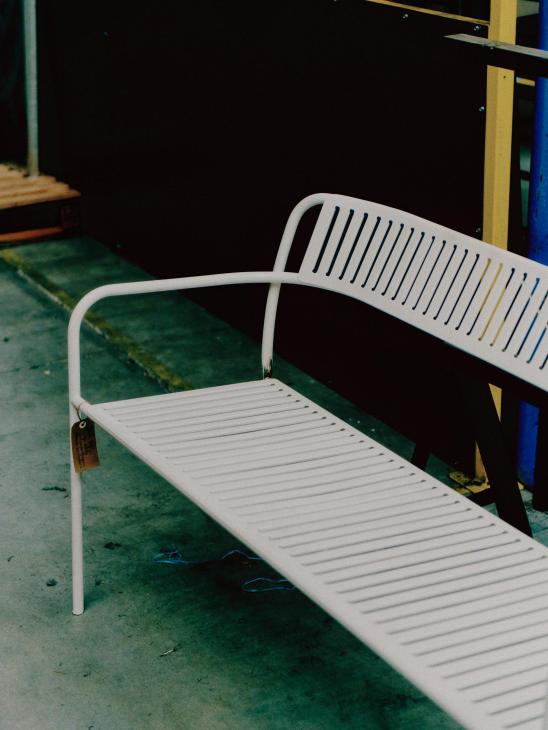

Tolix’s new ownership reflects a wider trend that has been gaining momentum in recent years: fashion crowds have serious designs on… well, design. Luxury brands including Prada, Bottega Veneta and Hermès are now regular fixtures at Milan Design Week. New Parisian design salon Matter & Shape made waves in March when it launched during the French capital’s fashion week. Finnish heritage brand Iittala’s new creative director, Janni Vepsäläinen, made the switch to design from UK label JW Anderson. France, where the luxury industry employs more than a million people, presents itself as fertile ground for this type of aesthetically minded cross-pollination, helped by a general appreciation for and investment in smaller-scale manufacturing.
When Bejui and Diemoz took over Tolix, they inherited a factory staffed with talented craftspeople who specialise in the production of its metal pieces. Autun and the surrounding Sâone-et-Loire region were once bastions of the French metalworking industry and many of the tools used to make Tolix’s designs date back to the mid-20th century. As we make our way across the factory floor, sheets of steel are being cut, moulded, hand-hammered and checked. One chair is being customised with an engraving as a wedding gift for an employee. “We keep our production as artisanal as possible,” says Maxime de Almeida, who is responsible for development at Tolix. “By continuing to use the techniques that have been inherited from our ancestors, we’re keeping our savoir-faire alive. Today we employ 30 people who can produce as many as 300 products per day.”

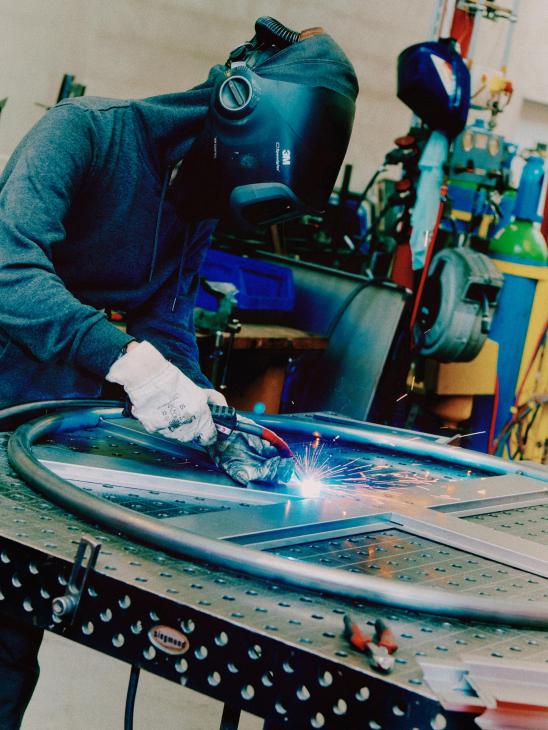
Tolix has been designated by the French state as a Living Heritage Company – a prestigious label that comes with the responsibility to transmit know-how to young apprentices. On the factory tour, a stop is made so we can watch a new addition to the team, Samuel, weld a chair with a thin brass brazing rod. The choice of brass rather than copper or aluminium is a Tolix signature. It also helps to distinguish the genuine article from imitations, as the welding process leaves behind gold-coloured marks.
Once the pieces are cut, moulded, assembled and welded, they are cleaned and galvanised or powder-coated. The hazmat-suit-clad team responsible for this process carefully examines every newly coated piece as it’s hung upside-down from a revolving conveyor belt. If a paint coat isn’t quite up to scratch, it will be sanded down for another round. In the stock room, colour labels point to a restrained palette going form jet black to brown green and oyster white. For those who are more partial to the industrial look of metal, a simple coat of varnish is also an option.
Luckily for Bejui and Diemoz, metal furniture has been enjoying a renaissance, with aluminium and steel designs taking over bars and restaurants in cities such as Paris and Sydney. This year, as part of their plan to broaden Tolix’s international appeal, the company has been cropping up at design fairs including Matter & Shape and Milan Design Week (at the latter, in Finnish firm Marimekko’s temporary café Bar Unikko). A new flagship on Paris’s Boulevard Saint-Germain is helping Tolix to establish itself as a premium brand. As for global retail, the company works with select shops and stockists to reach a demographic that has an appreciation for French manufacturing and industrial history.
“We’re here to save a piece of national heritage and make sense of it,” says Bejui. The entrepreneurial duo now split their time between Paris and Burgundy to be close to the manufacturing team. “It’s a source of pride for Frenchmen that we have these extraordinary companies such as Tolix. I feel a civic duty to tell people about the marvels that take place here.” — tolix.com
Tolix timeline:
1917
Xavier Pauchard sets up a factory making steel household items.
1927
Pauchard trademarks Tolix.
1937
The Pauchard-designed T37 chair is launched.
1958
The UD chair is released.
2000
Emmanuel Diemoz joins fashion firm Balmain.
2011
Antoine Bejui joins Balmain as CFO.
2012
Diemoz becomes Balmain’s CEO.
2017
The pair leave Balmain, after growing annual revenue to more than €120m.
2020
Tolix releases the Patio collection by Pauline Deltour.
2022
Bejui and Diemoz buy Tolix.
The sofa is – by many measures – the singular, most defining piece of furniture that one can own. Often the largest item in a living room, it can dictate everything from our behaviour to our selection of other pieces. Whether it’s a plush contemporary work or vintage leather number, our couches speak volumes about our personalities and lifestyles, providing somewhere to unwind, entertain and relax.
Here, we visit the homes of 12 leading creatives to hear about their settees. Get comfy and read on – just don’t forget to plump the cushions when you’re done.
Llisa Demetrios, curator, Petaluma
Eames sofa by Herman Miller
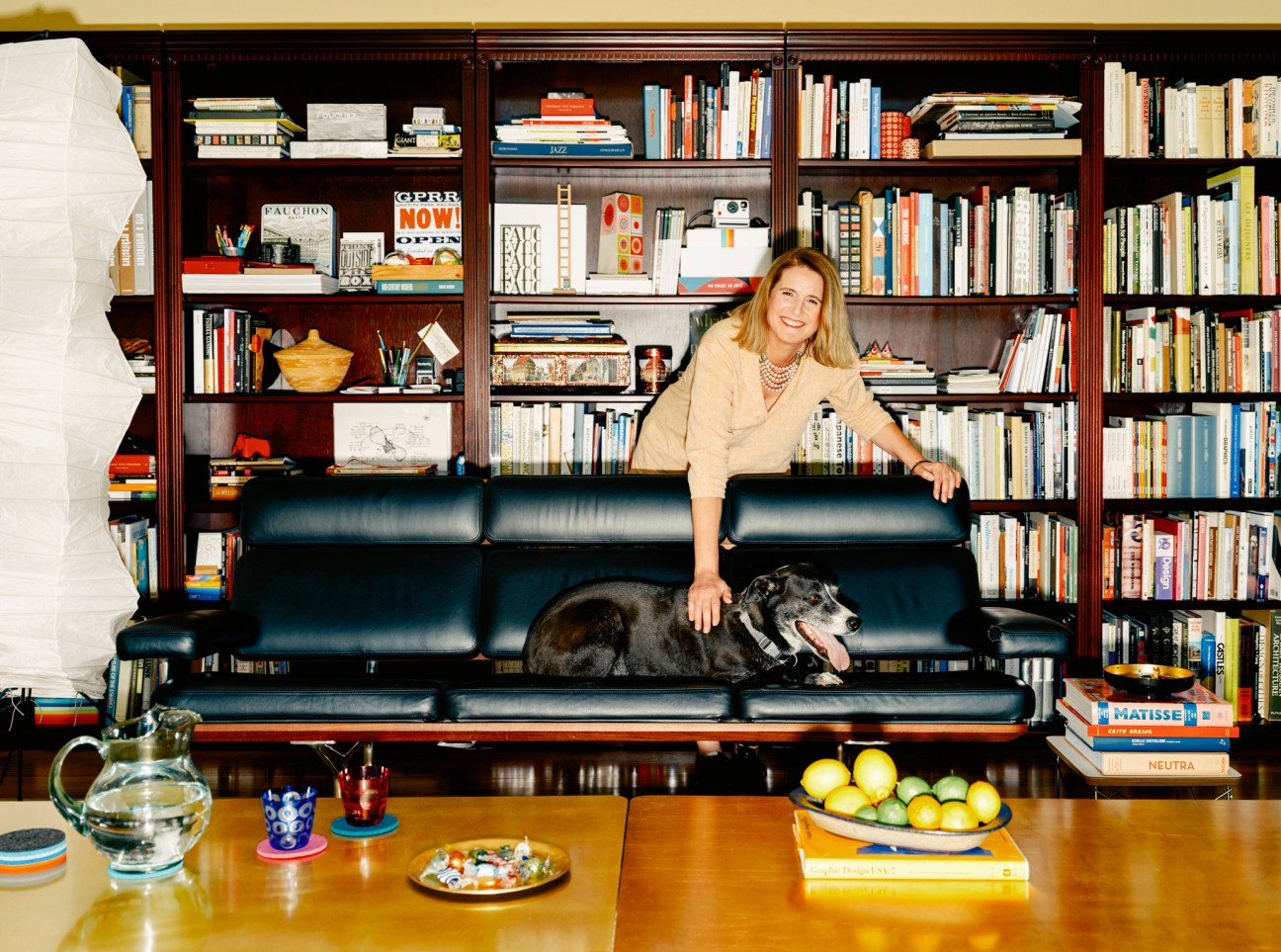
Llisa Demetrios has just returned home after giving the day’s last tour at the Eames Institute of Infinite Curiosity, the non-profit exhibition space in California’s Bay Area dedicated to the work of her grandparents, designers Charles and Ray Eames. “This is my place to pause,” says Demetrios, the institute’s chief curator, leaning back into the gently reclined black leather of the Eames sofa in her home. “It holds you but you also have to sink in a little bit; you don’t perch on a truly great sofa.” This sofa – the last project her grandparents worked on together – went into production in 1984, five years after Charles had died. Demetrios bought a pair almost 20 years ago, intending to pass them down to her own children. After all, Eames furniture was designed to withstand the test of time and Charles and Ray were always fascinated by how people lived with their work. “When I was growing up, they would send my mother a lot of prototypes,” adds Demetrios. “I do wonder now if they were just testing out what five young grandchildren could do with the furniture.”
Fien Muller & Hannes van Severen, designers, Ghent
Pillow sofa by BD Barcelona
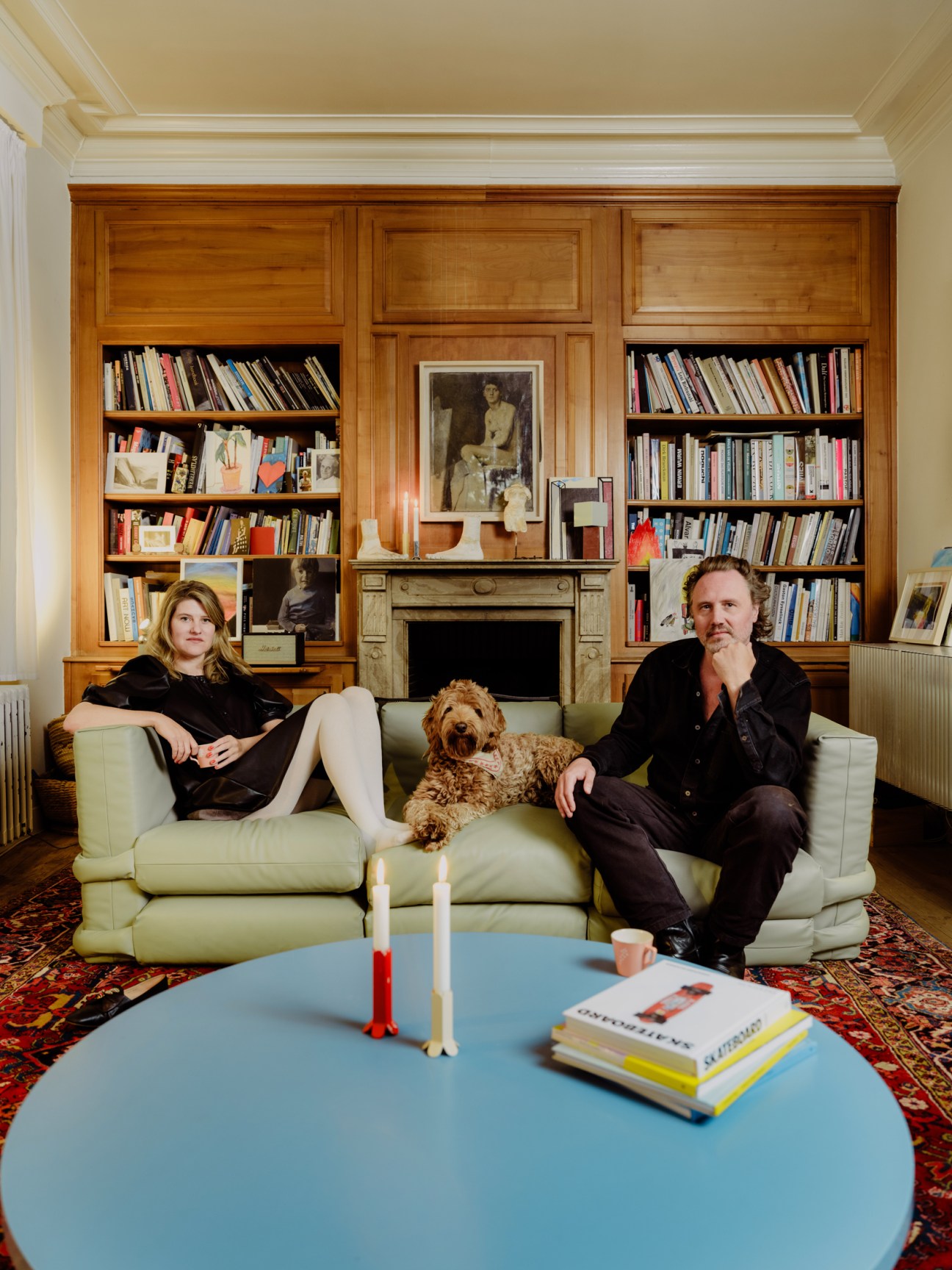
“We like to live with our own pieces,” says Fien Muller, one half of Belgian design duo Muller van Severen, which she co-founded with Hannes van Severen in 2011. “We want to know how they behave in real life.” That includes the couch at their home in Ghent, which is in production with BD Barcelona. Launched at Salone del Mobile in April 2024, the Pillow Sofa was shipped directly from the showroom in Milan to take up residence in the couple’s living room. Modular and low-slung, it is upholstered in a bright, mint-green leather and informed by the best Italian mid-century designs. “Sofas are a difficult thing to design, because they have to be comfortable,” says Muller. To that end, the Pillow is passing its live-in test with flying colours. “I often fall asleep on it,” says Van Severen. “I wake up in the middle of the night thinking, ‘Where am I?’” On several occasions, the couple have even put up house guests for the night on the sofa. “Nobody has ever complained.”
Marcio Kogan, architect, São Paulo
Horizonte sofa by Minotti

For most, the ability to design one’s own dream sofa and have it put into production lies well beyond reach. Not so for Marcio Kogan, the Brazilian architect whose perch of choice is the Horizonte seating system, which he developed with Italian furniture company Minotti. “I’m an architect and in my studio we design everything for our projects,” says Kogan, who founded Studio mk27 in the 1970s. “One day, Minotti called us and asked where we bought the furniture for our projects. I said we design it.” It was a conversation that would change the course of work for both Studio mk27 and the furniture powerhouse; after the Minotti family visited Brazil, they invited Kogan to design for them. The partnership has been ongoing since Kogan’s first collection was released in 2018 and led to this sofa in 2022. “I like the proportion – that’s the main thing,” says Kogan “And I like the bouclé fabric.” He laughs, acknowledging that white sofas are a bold move. “But comfort is what’s most important.”
Wael al Awar, architect, Dubai
Armchair by Unknown
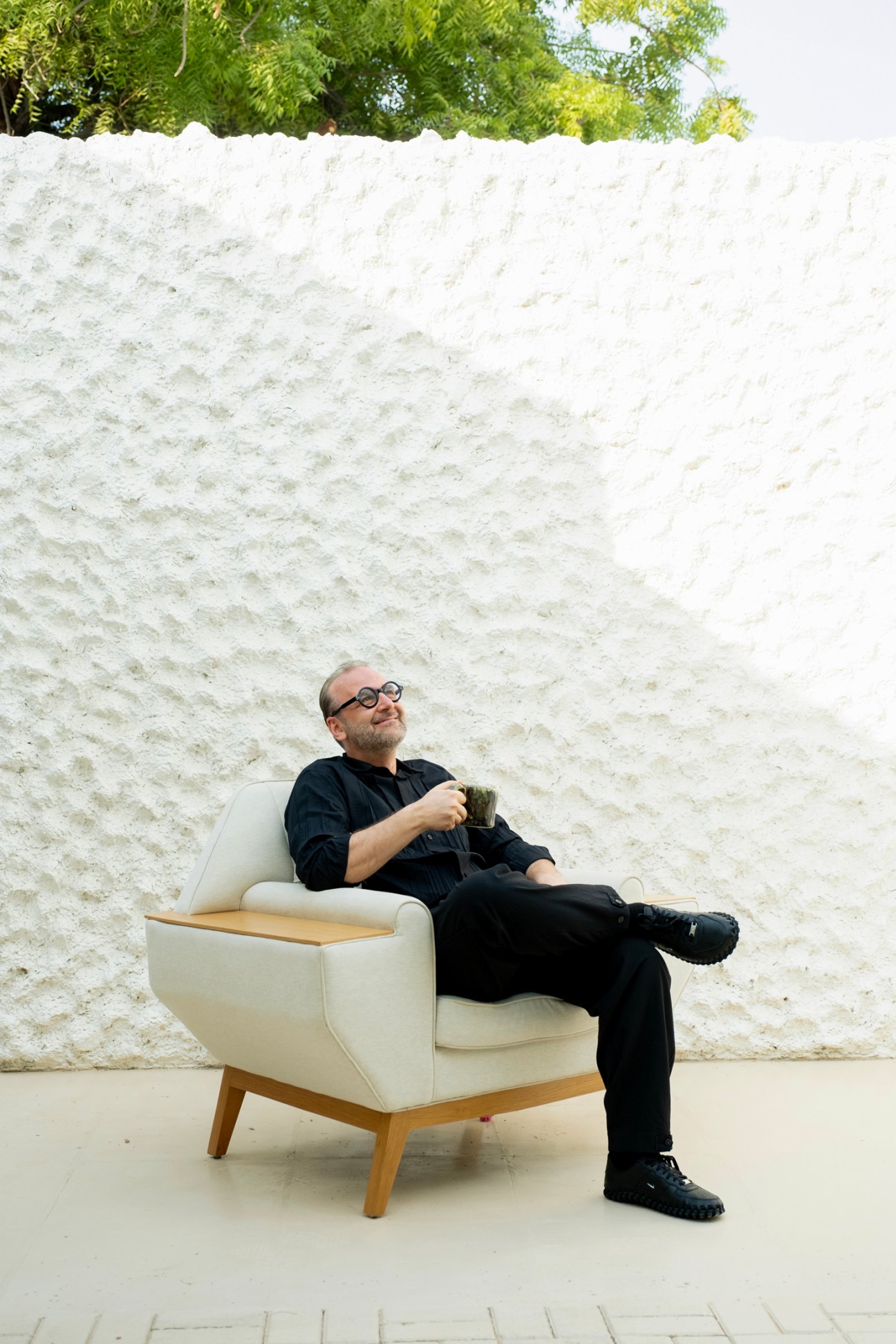
“I don’t know its name but I knew that it would be mine as soon as I saw it,” says Wael al Awar. The Dubai-based architect found this 1960s piece as a set of four in 1998 at a Sunday market in Beirut. “I was studying architecture and doing a module on informal economies, so looking for deals at the market was a weekend ritual,” he adds. The architect fixed up the full set, which was found in terrible condition, and brought it with him to Dubai. Today the four capacious seats sit in his family home with his wife and twin boys having their own individual perches to curl up on. “I hate today’s low-back sofas. You should feel cradled, which is why I also love the hammock-like Jangada chair by Jean Gillon.” Awar’s chair, with its inbuilt table, also forms his home office. “Tea sits on one side, with my laptop on the other. Hidden beneath these inlaid tables is a secret compartment to keep magazines and papers in order too. Designers back then challenged the idea of a sofa and I appreciate that.”
Nifemi Marcus-Bello, designer, Lagos
Äpplaryd sofa by Ikea

“Ikea has always been an interesting company and one I admire from afar,” says Nifemi Marcus-Bello. “I like its transparency around production and its design process.” The founder of Lagos-based Nmbello Studio is an ardent fan of the flat-pack specialist’s Äpplaryd sofa. “We didn’t have an Ikea in Lagos, so I had to go to great lengths to ship the sofa here from London.” Marcus-Bello’s work touches on narratives of African migration and identity, interweaving Nigerian artefacts with bold accents. He says that he never works on his sofa. “I associate it with rest so I can never get any work done,” he says. On weekends, the plush perch comes into its own. “The sofa plays a huge role within my space and family dynamic. It’s the only chair that we can all sit on at the same time.” He considered the limited natural light of the sofa’s surroundings, choosing a lighter fabric and a design that is raised off the floor to allow light to pass underneath. “The sofa is very considerate to our way of life.”
Tarini Jindal Handa, gallerist, Mumbai
Standard sofa by Edra
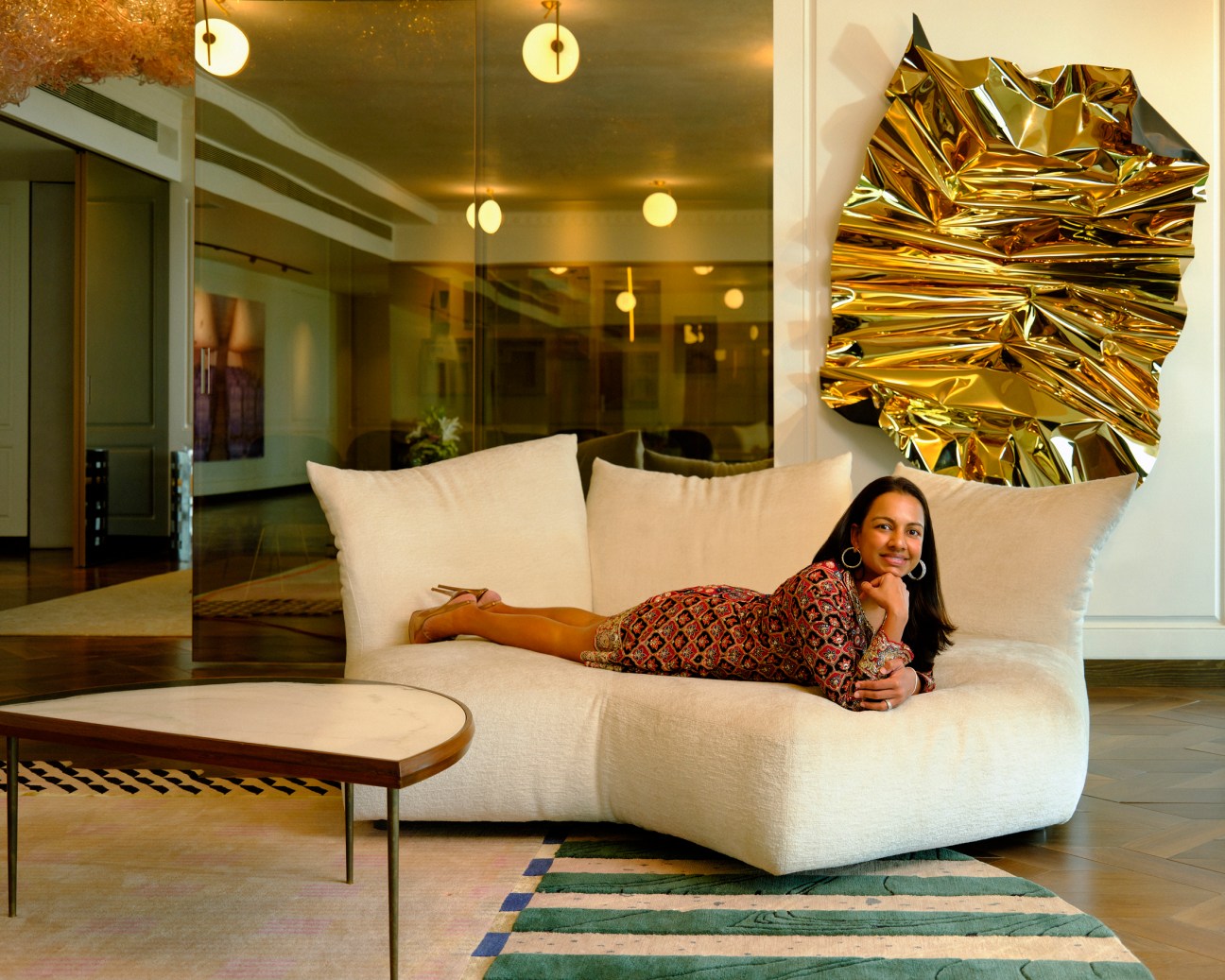
“The functionality and comfort are incredible,” says Tarini Jindal Handa about her favourite piece of furniture. As the founder of Aequo, India’s first collectable-design gallery, Handa knows a thing or two about good seating. What helped the Standard sofa – designed by Francesco Binfaré for Italian furniture company Edra – win her over was its impressive adaptability. “Sofas should be comfortable,” she tells monocle from her home in Mumbai. “That is their most important attribute.” The couch’s mouldable backs and sides, made using Edra’s Smart Cushion and Gellyfoam technology, make it an extremely versatile piece, which can either be set upright for comfortable chats with friends or turned into a daybed for lounging. “It’s one of those wide, white, fluffy sofas,” says Handa. Having owned it for more than 10 years, it has become integral to her home – the pièce maîtresse of the living room. Handa adds that the sofa has almost become part of the family, occupying pride of place.
Malika Favre, illustrator, Barcelona
Quilton sofa by Hay
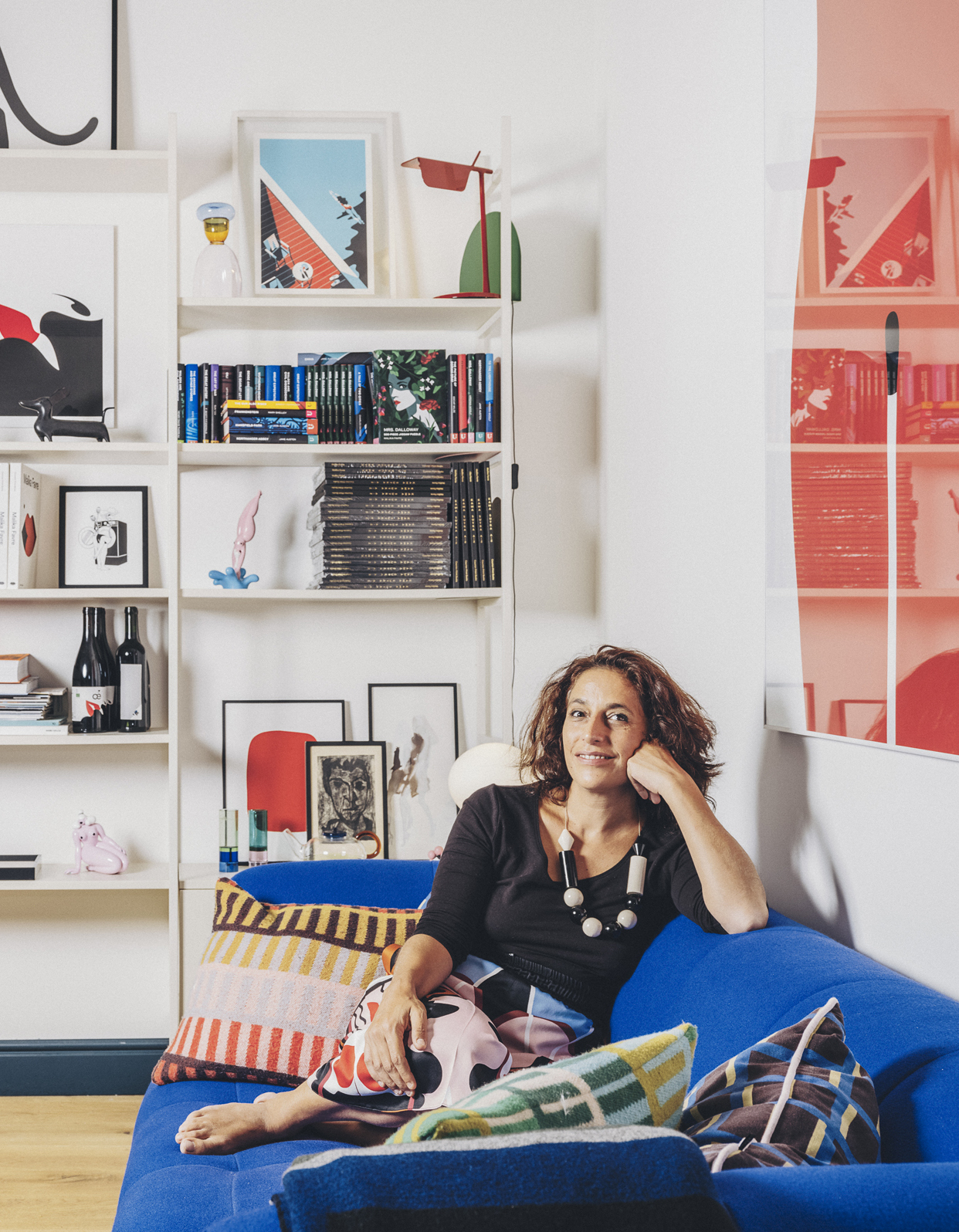
“There are as many definitions of a good sofa as there are people,” says Malika Favre. The French illustrator’s choice comes in the shape of an electric-blue Quilton model by designer Doshi Levien for Danish furniture firm Hay. “Blue is my favourite colour. You can find pieces of it throughout my home.” It is also common in Favre’s work, such as her recent cover illustration for The New Yorker and re-edition of the 2017 Montreux Jazz festival poster. Before purchasing the Quilton model in 2023, Favre, who is based in Barcelona, had kept a mid-century couch through every move. It was nicknamed “the rock” because it was beautiful but not particularly comfy. Favre enjoys curling up in the evenings on her new (and cosier) Quilton but aesthetics remain key. “I need to be surrounded by beautiful things,” she says. “A good sofa should be comfortable but not at the cost of being gorgeous,” says Favre. “It needs to be elegant but also cosy and generous.”
Grant Wilkinson & Teresa Rivera, designers, London
Peonia sofa by SCP
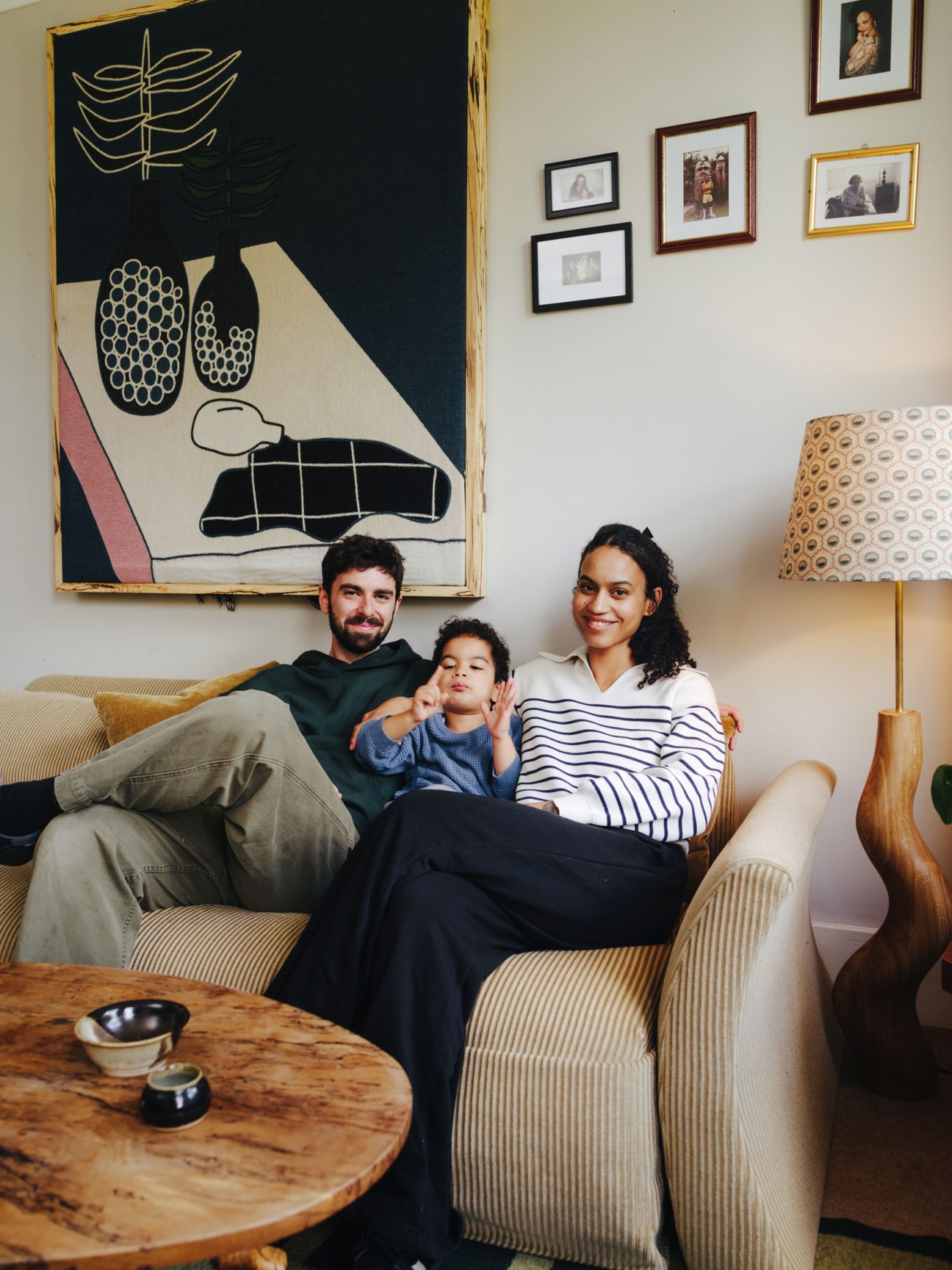
Grant Wilkinson and Teresa Rivera opened their design and manufacturing studio in 2020, the year that their son was born, so it was only natural that young family dynamics would influence their work. “We bake purpose into our designs,” says Rivera, sitting on the mohair cord sofa, which they created for London-based design brand scp. “It’s ridiculous to have something in the home that you can’t use. With a four-year-old around, it has to be sturdy and scrubbable.” The couple are content with their elegant sofa being taken over by a preschooler. “We’re have-dinner-on-the-sofa people,” adds Wilkinson. “It’s why we made the Peonia so deep, so that we can all fit comfortably.” The couple met while studying fine art. Despite having since moved into furniture design, they still think like artists. “As soon as we put pen to paper and start sketching, we’re talking about it the same way we used to talk about sculpture back at school,” says Wilkinson.
Daniel Libeskind, architect, New York
La Maquette sofa by Louis Vuitton
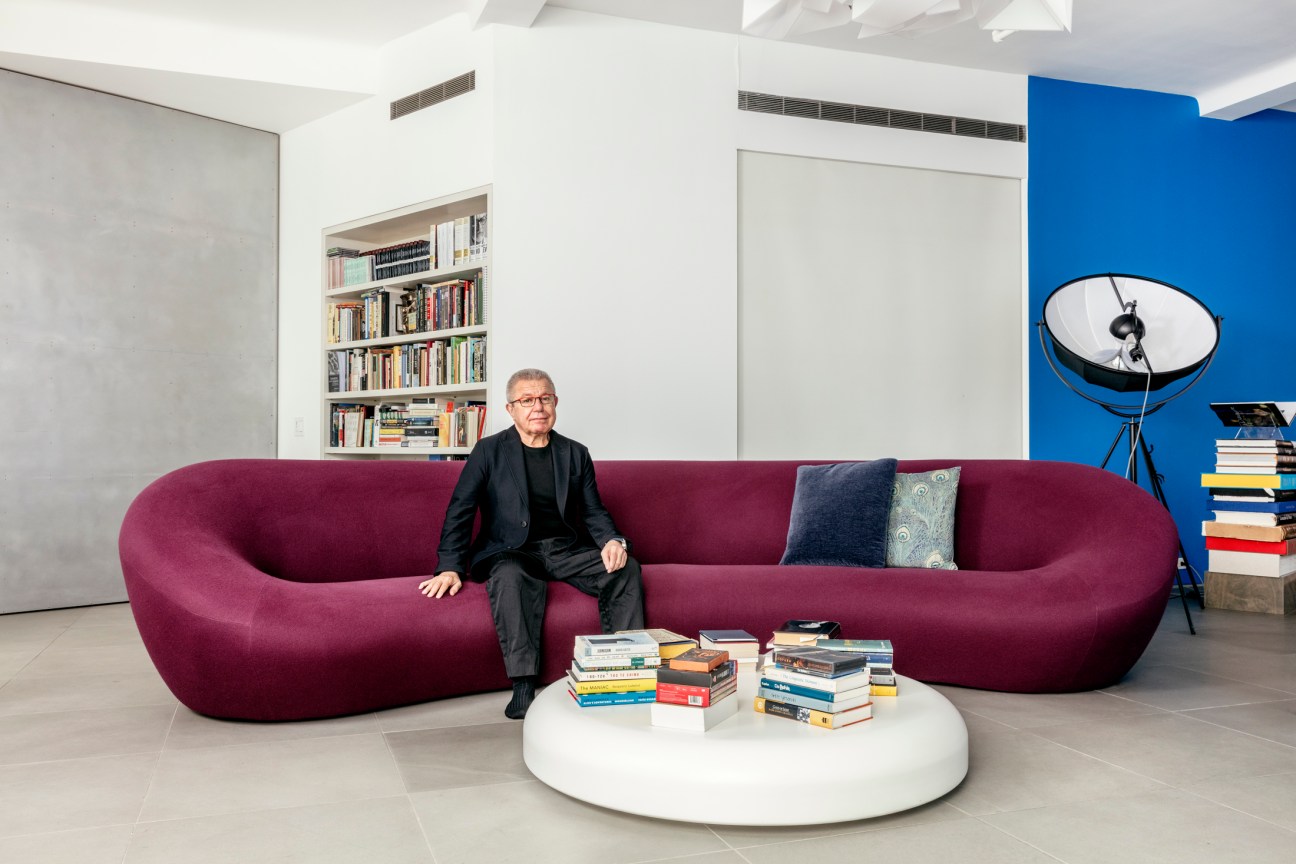
“It was an impulse buy,” says Daniel Libeskind. The architect purchased his couch at Louis Vuitton’s 2014 Design Miami showcase, for which the French fashion house put the unrealised La Maquette collection by Pierre Paulin – including this sofa – into production. “I bought it without considering its size or scale, or the complexity of getting it up a building in New York.” But once it was placed in Libeskind’s home, its impact was immediate. “It’s the largest object that I have and has an unusual red-purple colour and an unexpected form that was clearly drawn by hand. That allows me to get away from the rectilinear modernist look that’s very prevalent in my house.” Today, it sits alongside the complementary white disc that is the La Maquette coffee table. “What makes a great sofa is not only comfort but what it looks like when you’re not sitting on it,” says Libeskind. “It’s about the views you get of it from different angles – looking down on it, looking across the room. I see La Maquette as a sculpture.”
Ingegerd Råman, designer, Stockholm
VVP02 sofa by Verk
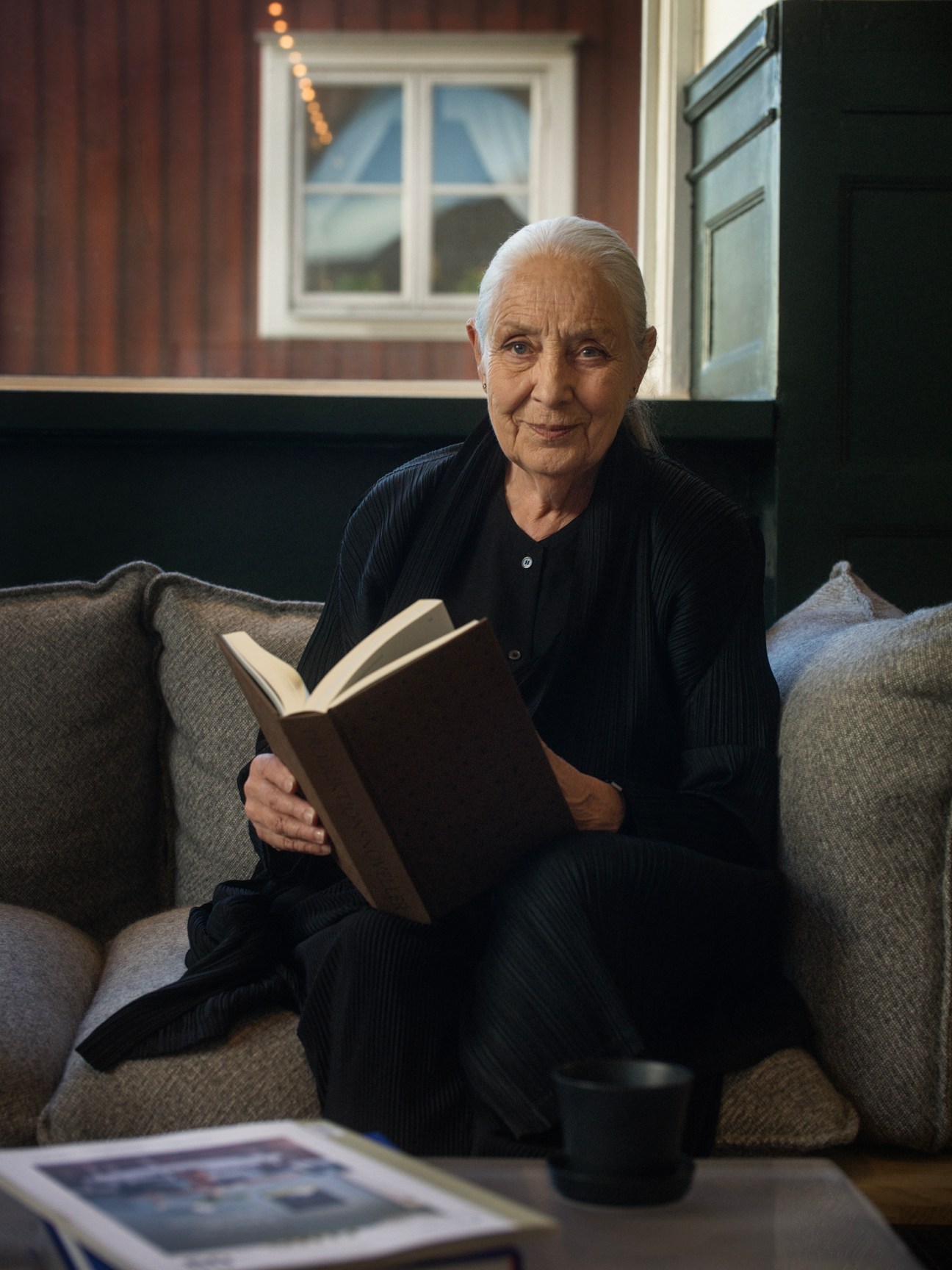
Ingegerd Råman no longer owns a sofa. And that should not come as a surprise: the octogenarian designer never stops moving – or working. When monocle talks to her, she has just left Skåne, where she has run her namesake studio since 1967, to visit Nice via Stockholm. But when pressed on where we would find her if she were to take a perch, she says it would likely be in the studio of Verk, a Swedish furniture firm that she recently designed a textile for, which now upholsters its vvp02 sofa.“The company is built on the idea that we have nice wool in Sweden and we should be using it in our homes,” says Råman, best known for her glass and ceramic work. “They approached me to make a wool textile and I developed something that is mostly grey, because sheep are mostly grey,” she says. Should she ever purchase a new couch, she would finish it in the textile too. “I can’t do anything that I can’t have myself. I couldn’t make something that I couldn’t have around for 10, 20 or 30 years.”
Joris Poggioli, designer, Paris
Patrick leather sofa by Joris Poggioli
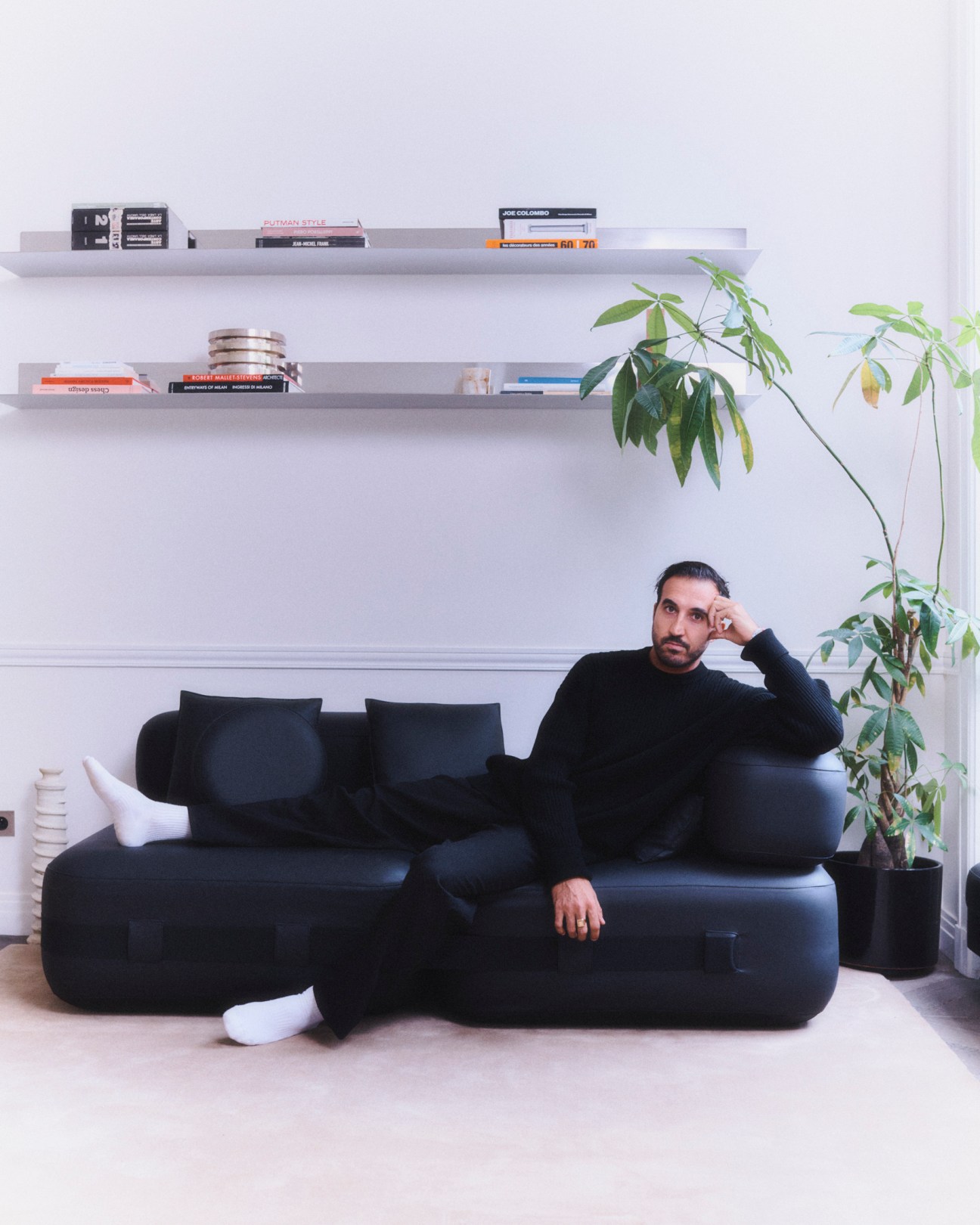
There’s a personal story behind the name of Joris Poggioli’s sofa. “Patrick is a member of the team who has helped us develop everything that we draw, in particular this sofa,” says the French-Italian designer. “Once we had it, after almost 20 prototypes, I thought that the least he deserved was to have it named after him.” Finished in black leather, it was built to be flexible and adapt to its owner’s everyday life. “I love hosting guests and enjoy lying down,” adds Poggioli. “I adore watching movies and having the option of accommodating friends who stay over.” Sleek and elegant, Patrick (the sofa, not the person) can be turned around in different ways and even endure dinner-party spills. “I’m not a big fan of colour, so black was perfect.” For Poggioli, the ideal sofa is not only a pile of pillows that you can sink into but an expression of taste. “Some people are obsessed with comfort. My vision is that you must please your eyes first, because comfort for the eyes is comfort for the brain.”
Farshid Moussavi, architect, London
Osaka sofa by La Cividina
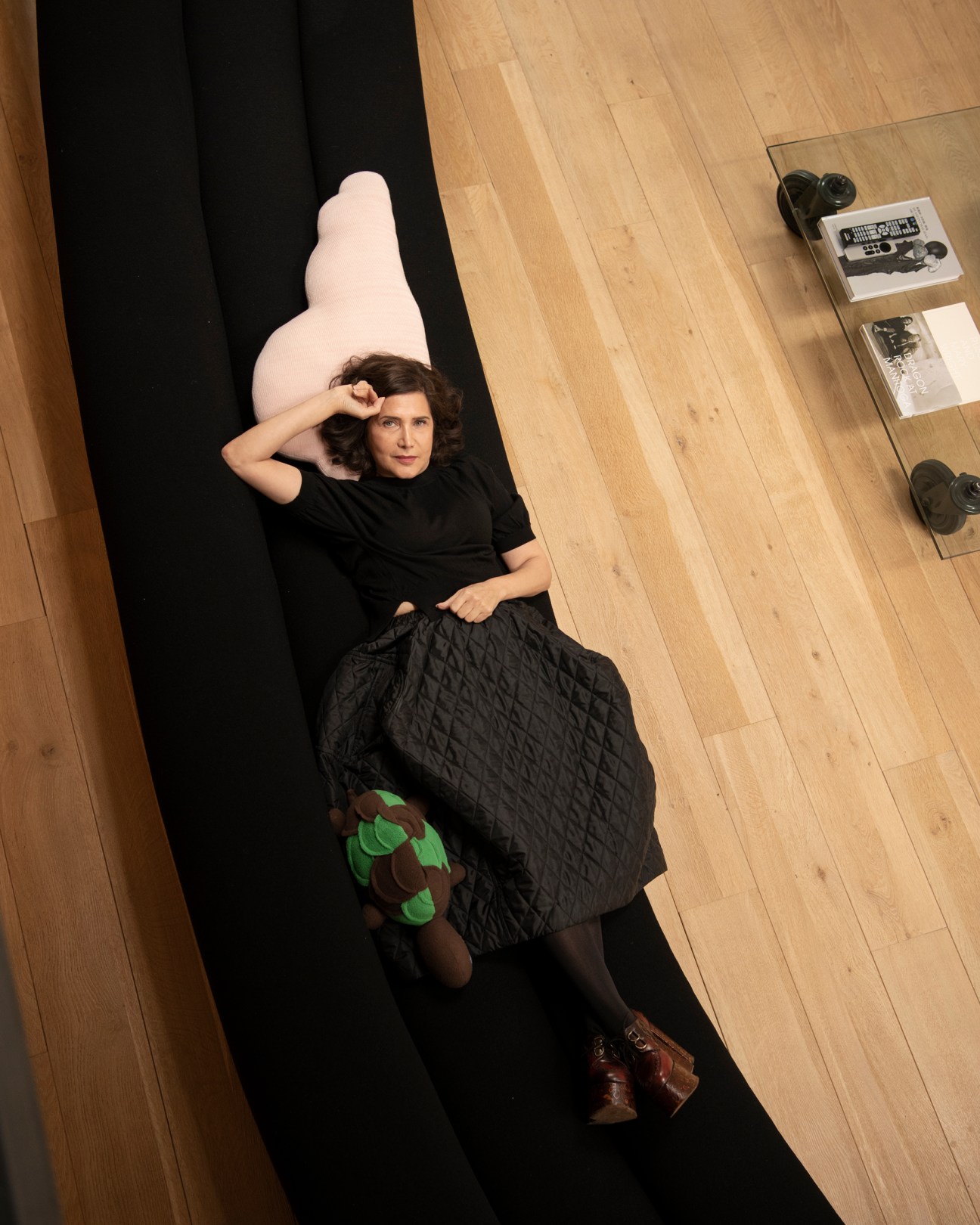
“My living room is tall and long so I can choose pieces that wouldn’t work in a smaller space,” says Farshid Moussavi. The Iranian-born British architect’s environment calls for a sofa that can match it – and her five-metre-long version of the customisable Osaka sofa does just that. “It has metal brackets on the base, so you can shape and curve it. I was interested in this idea that I could change the look of the piece over time.” Moussavi spends much of her working day sitting down, so her spare time is spent away from the sofa. “I associate it with having company rather than relaxing alone,” she says, explaining that the sofa would be put to good use when she held birthday parties for her daughter, who grew up in the flat. The monochrome colour palette allows for some personalisation too, with Moussavi making a custom pillow inspired by one of her daughter’s drawings. And while comfort is important, the architect says it’s also critical that a sofa adds to the character of one’s home. “It’s a sculptural piece.”
1.
Oru Chair
Andreu World
Spain
Fully circular and sustainable in its production methods, Andreu World uses responsibly harvested timber to craft bold designs such as the Oru Chair. The firm’s expert craftsmanship is evident in the elegant curves of this solid ash frame, which wraps around a seat that can be upholstered in an array of colours.
andreuworld.com
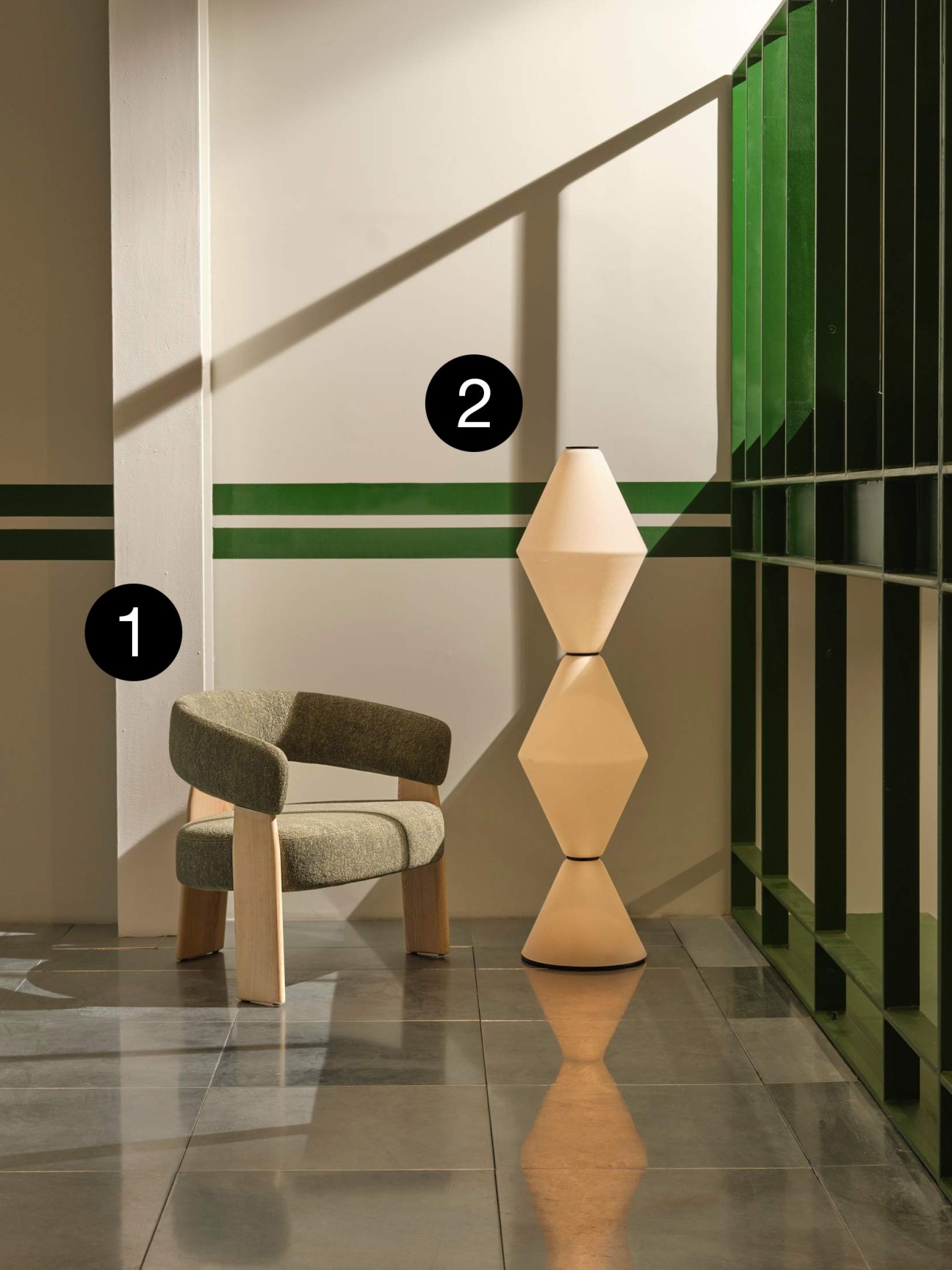
2.
Helium lamp
De Padova
Italy
Designed by Elisa Ossino for De Padova, this lamp’s sculptural form makes it a statement piece for any living space. It can be composed of one, two or three glass components, and comes in two finishes that gently diffuse light: textured granular glass or an etched surface with a velvety appearance.
depadova.com
3.
Clori armchair
Giorgetti
Italy
No cosy lounge or office is complete without a comfortable armchair – and this swivel wing chair and ottoman is the perfect design-minded addition. Made by Brianza-based Giorgetti, the Clori model is defined by its five-spoke metal base, finished with solid Canaletto walnut inserts.
giorgettimeda.com
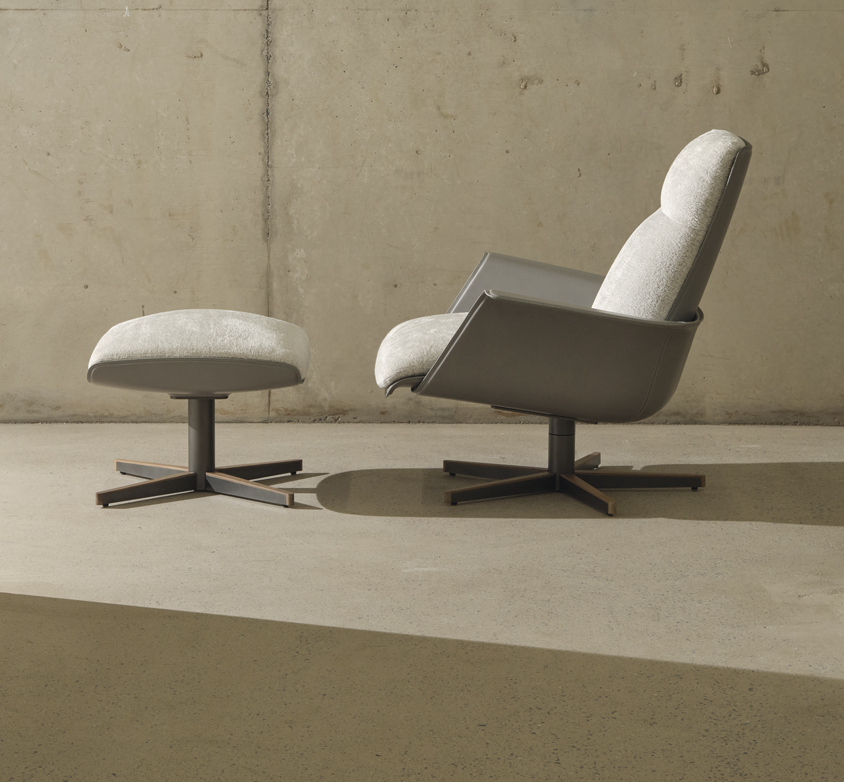
4.
Stopper lamp
Daniel Schofield
UK
Designed on the back of an apéritif napkin at Milanese establishment Bar Basso, this lamp takes inspiration from a wine bottle stopper. Composed of a smooth opal glass shade and a cork body, it’s light and warm in appearance, with a subtly indented button for adjusting light levels and finding the perfect cocktail-hour glow.
daniel-schofield.com
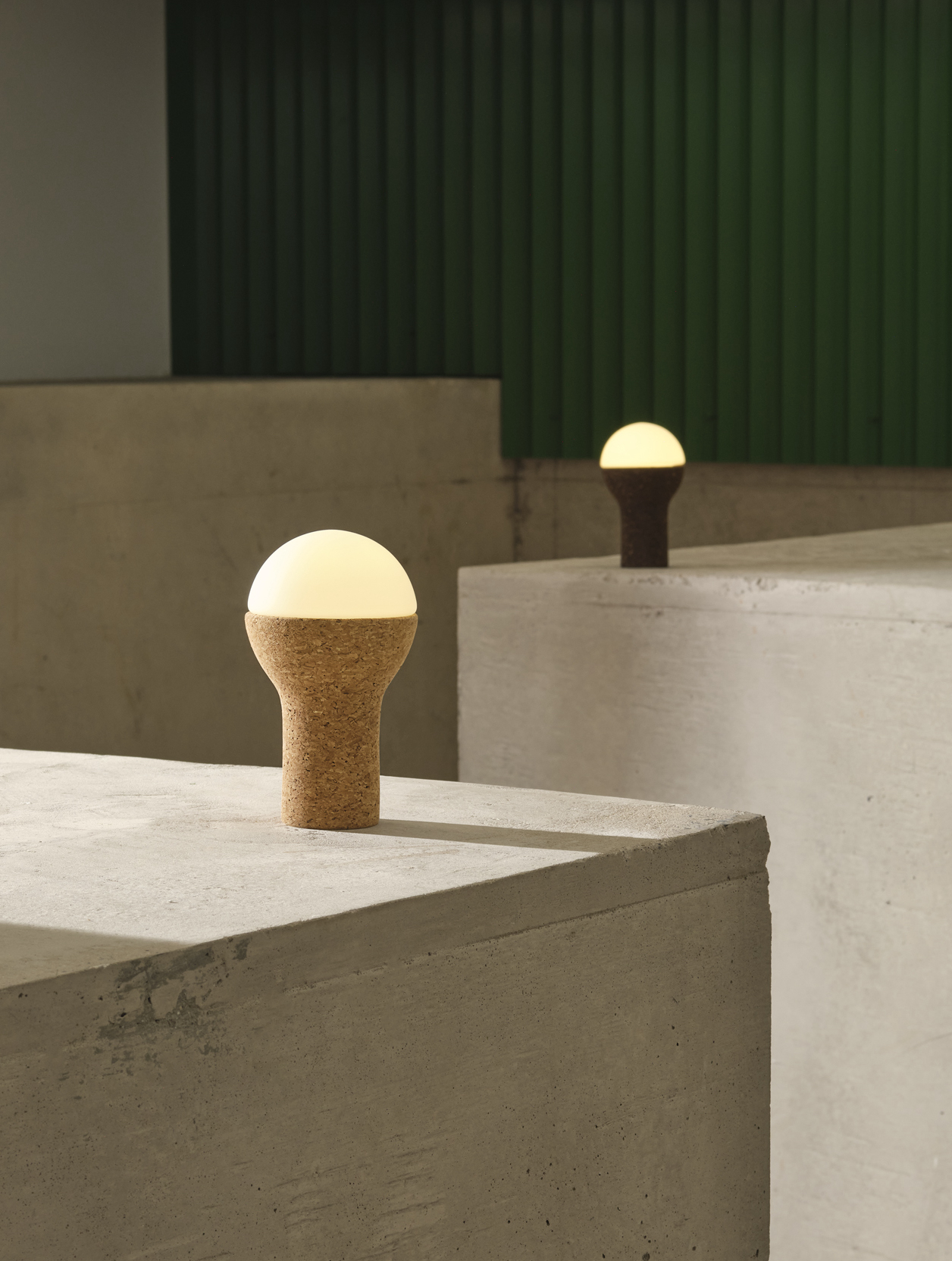
5.
Ayon dining chair
Lema
Italy
Italian designers and architects Gabriele and Oscar Buratti’s leather-clad Ayon is the perfect perch for dinner parties. Its slender frame is made from ash, with upholstery in several hues. It celebrates the slight natural imperfections of wood and leather, adding character to a well thought-out seat.
lemamobili.com

6.
Origata console table
Porro
Italy
Created with designer Nao Tamura and made from thin aluminium sheets, the Origata’s construction is informed by kimono-making techniques, whereby materials are cut and folded to take striking forms. The table is available in a range of glossy colours but we’re partial to the warm glow of arancio siena.
porro.com
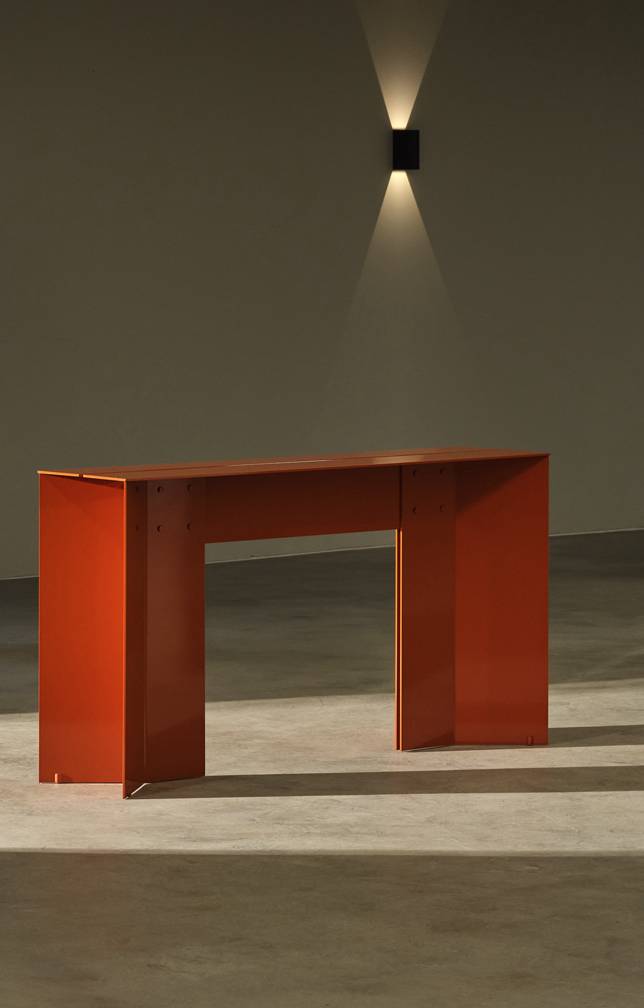
7.
Base Stool
Origin
UK
Designed by Giles Pearson for Origin (and stocked by the likes of scp), this seat is a minimalist take on the ubiquitous plastic stool. Pearson’s careful refinement of a well-known form ensures the perch is suited to a range of environments. Origin is currently experimenting with a host of wavy new colourways.
originfurniture.com
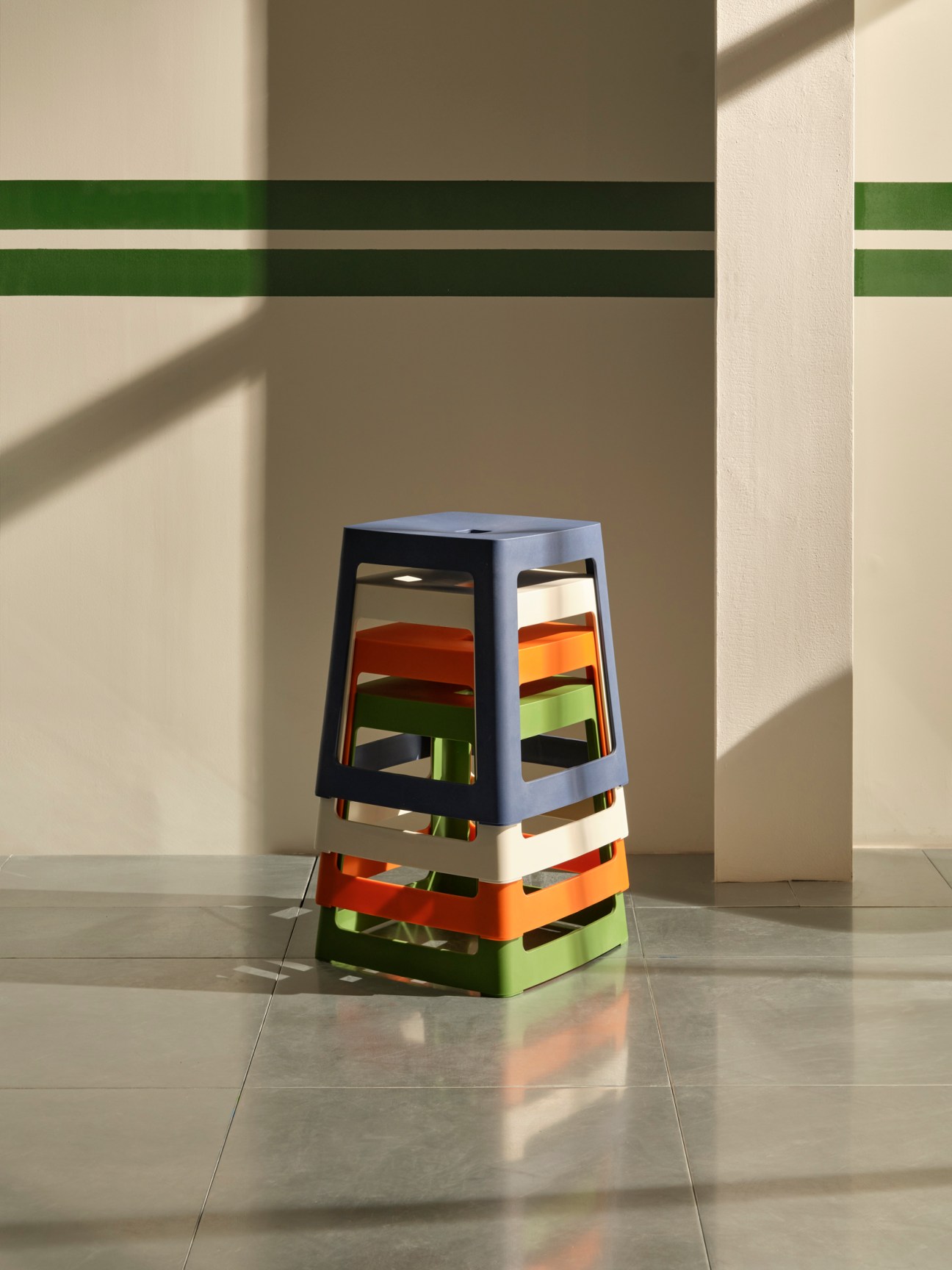
8.
VLA62 Radio House Mirror
Carl Hansen & Søn
Denmark
The VLA62 was originally designed in 1945 by Vilhelm Lauritzen for Copenhagen’s Radio House. Re-released by Carl Hansen & Søn, it has a deep, concave frame that adds warmth to any space.
carlhansen.com
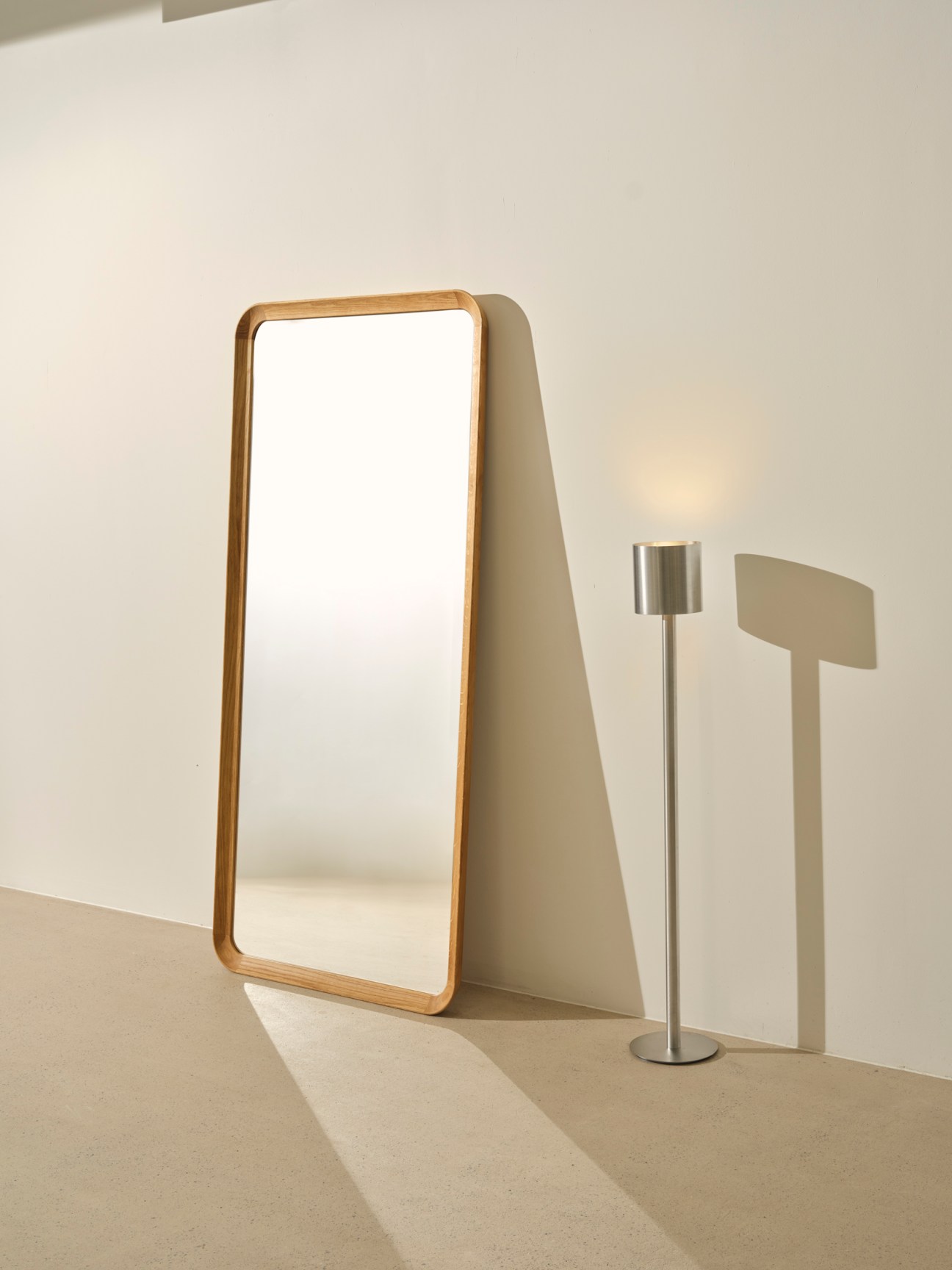
9.
F2 floor lamp
Minimalux
UK
Made from partly recycled aluminium, the slender F2 enriches the atmosphere of any room. Its cylindrical shade gently diffuses light without bulb glare.
minimalux.com
10.
Arcade Chair
SmithMatthias
UK
This new piece strikes the balance between comfort and beauty. Its curving profiles complement a wide rotating backrest, which adapts to its user’s seating position.
smithmatthias.com
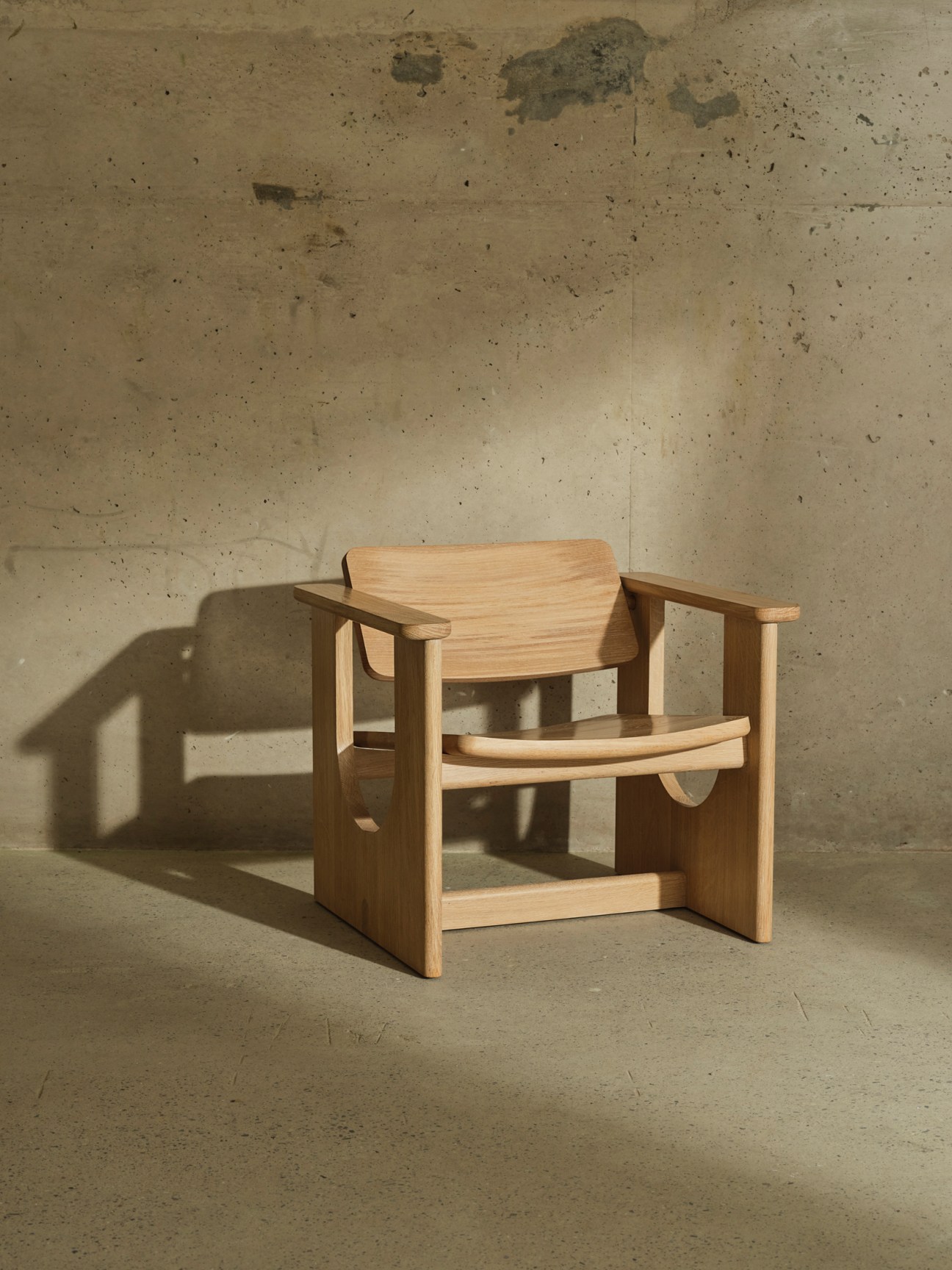
11.
Lauren armchair
Flexform
Italy
Antonio Citterio’s design appears to be inspired by a director’s chair. The base is composed of solid wood while its armrest, seat and backrest are made from metal that’s clad in cowhide.
flexform.it
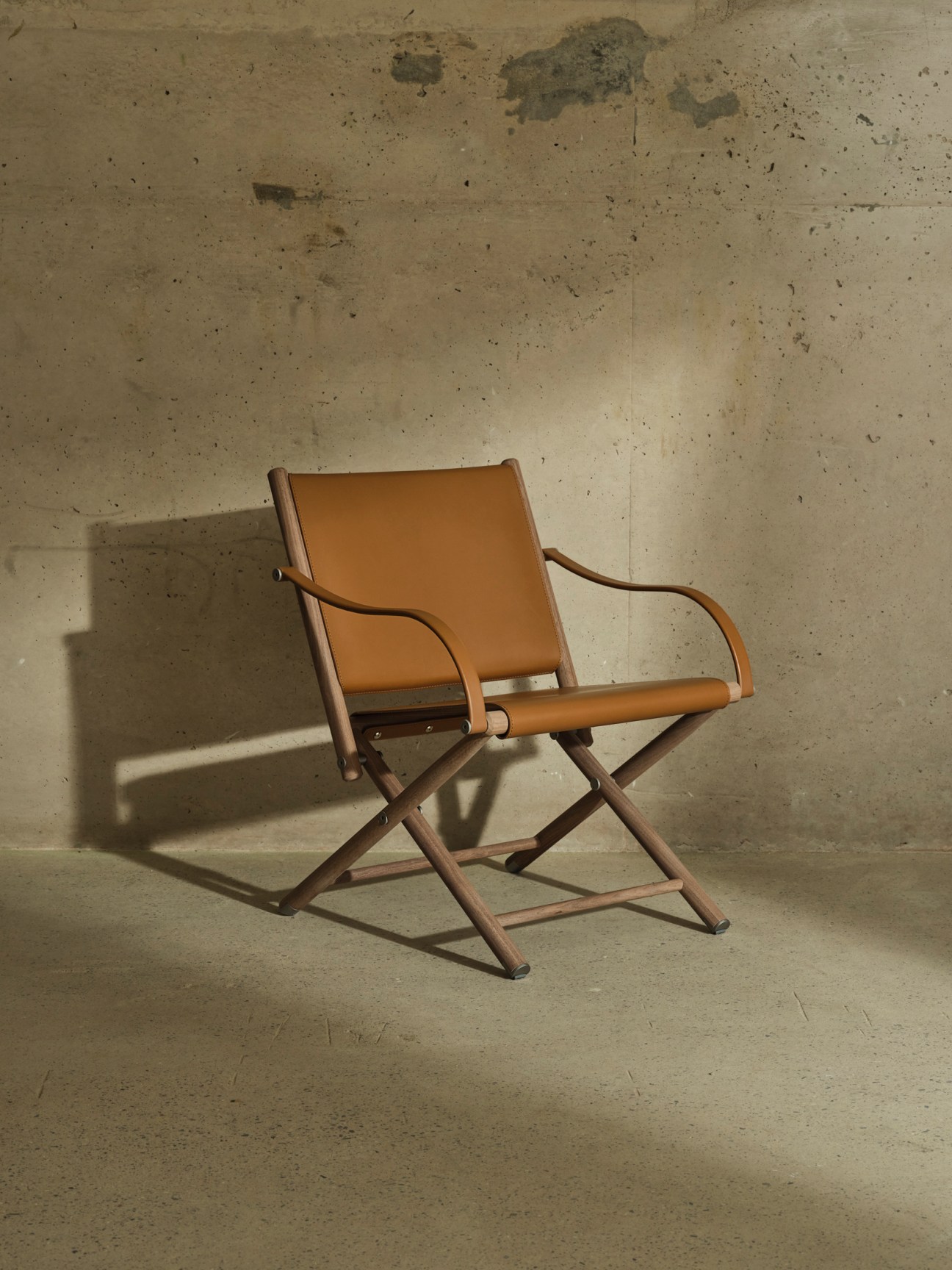
12.
Ridge Vase
Muuto
Denmark
As the name suggests, a subtle sculptural ridge adds visual interest to this vase, while propping up floral arrangements and offering a handle for manoeuvrability.
muuto.com
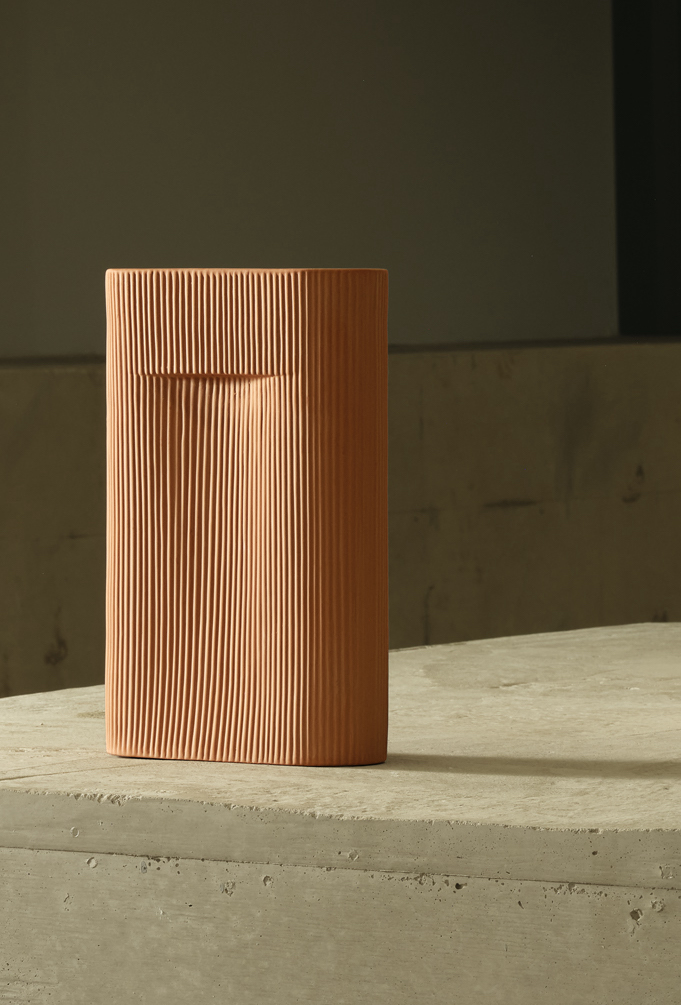
13.
Isles Side Table
Jacob Marks
UK
The compact Isles Side Table is made from a mix of sustainably grown timber and is an ode to natural British materials. A playful addition to any home, it’s finished in a natural hard wax oil. The jigsaw of light oak and dark alder, crafted using modern marquetry techniques, ensures that every iteration of the piece is unique.
jacobmarks.co.uk
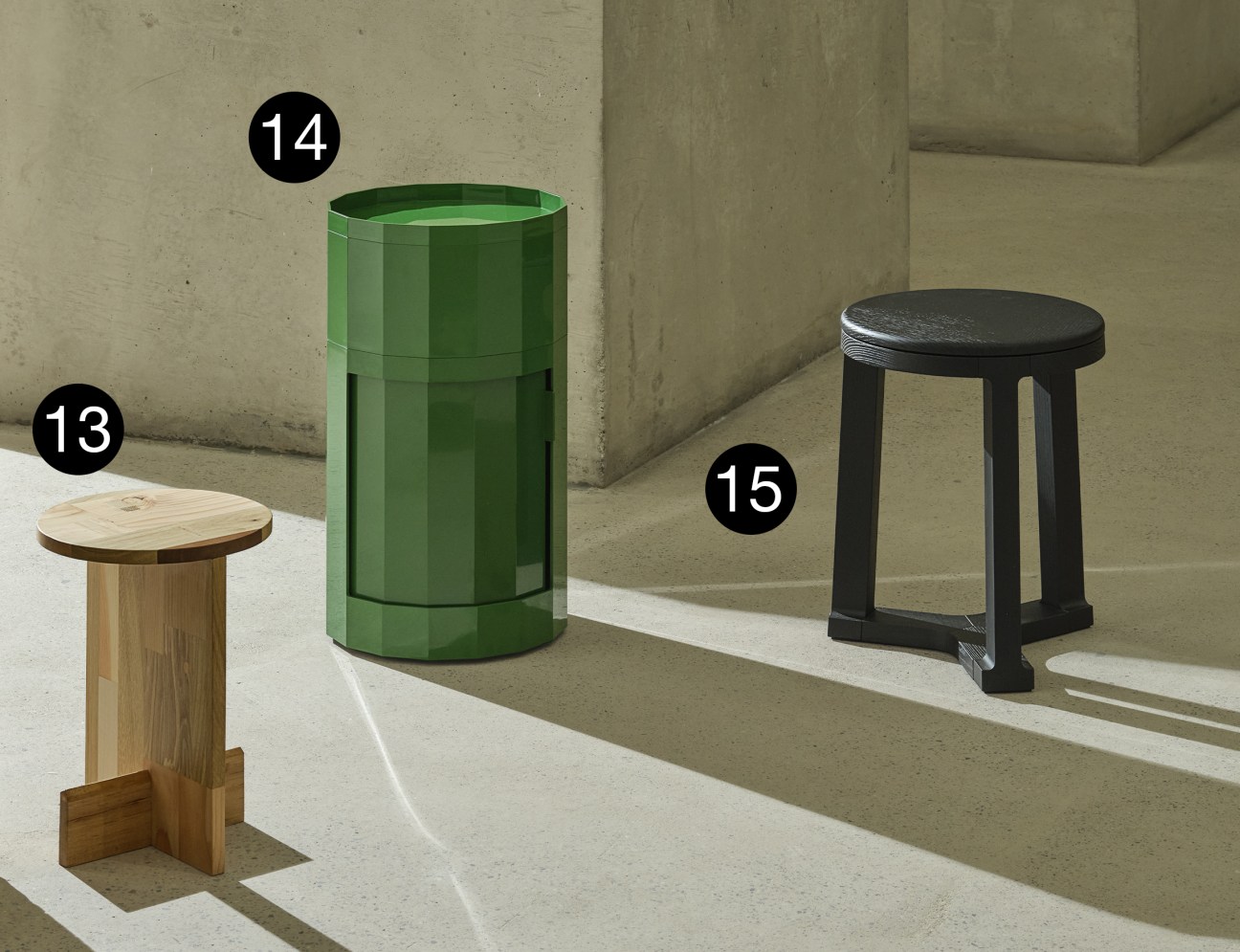
14.
Facet Cabinet
Hay
Denmark
Dutch designer Stefan Scholten has created this portable piece in the reductionist style for which he has become a flag bearer. The ridged surface means that the storage unit can act as a bedside table or office organiser if your workspace needs colour. Made from recycled polymers, it’s executed with characteristic Danish flair.
hay.dk
15.
Fonte side table
Molteni&C
Italy
This side table from Belgian designer Vincent Van Duysen would make an excellent addition to any living room or bedroom. A pragmatic work, it rests on three oak-stained, solid-wood legs, with the circular table top available in a range of finishes, including marble, glass and this dramatic black-stained oak.
molteni.it
16.
Additional System
Tacchini
Italy
Designed by Joe Colombo in 1967, this lounge chair and ottoman has been newly re-released by Tacchini. The retro-futurist piece is made from a series of arching cushions.
tacchini.it
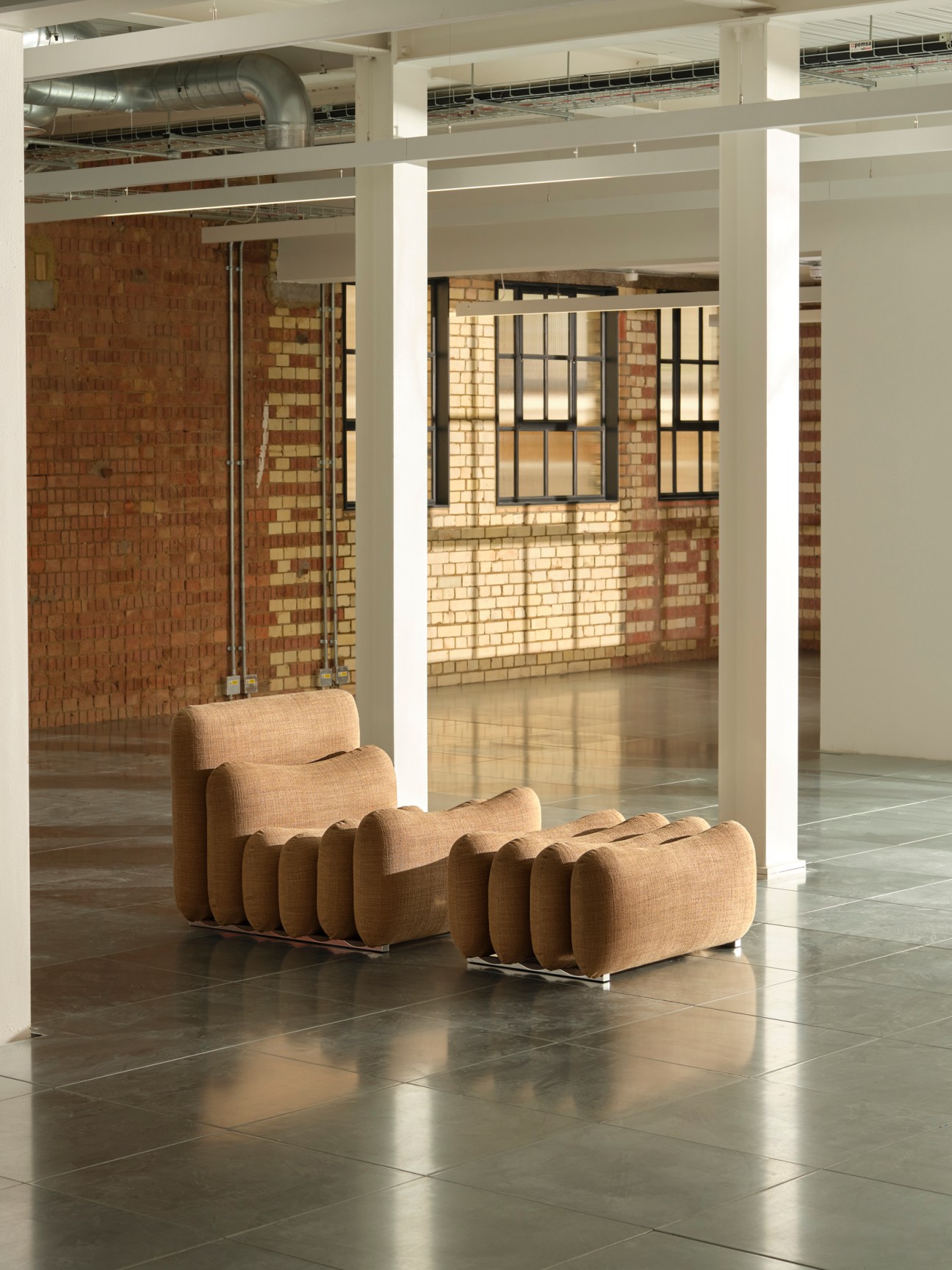
17.
Seto Stool
Fredericia
Denmark
This solid oak and canvas stool’s H-shape structure is inspired by the form of Japan’s longest bridge, Seto Ohashi.
fredericia.com
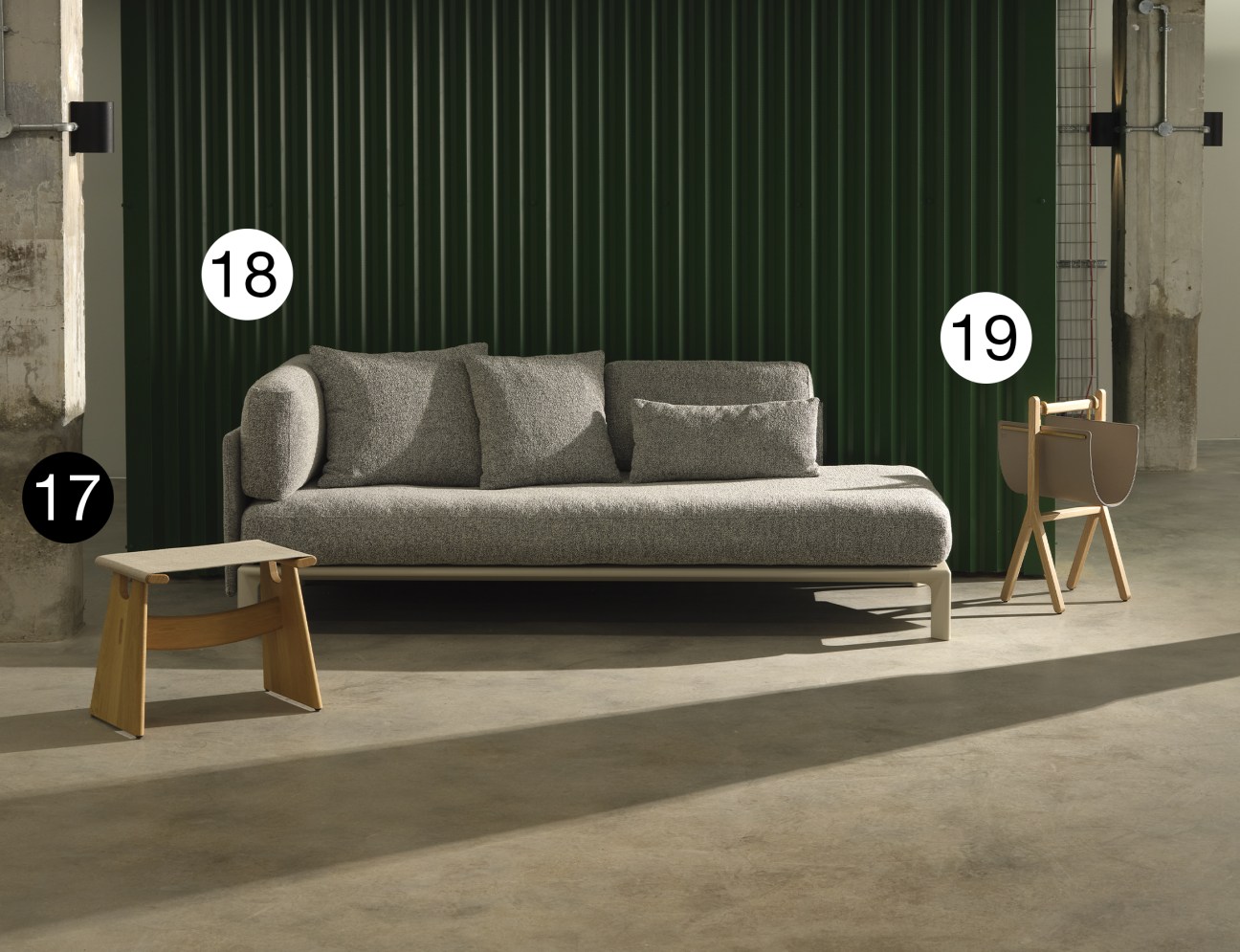
18.
Anagram Sofa
Vitra
Switzerland
This Panter & Tourron-designed sofa can be configured to suit any space, thanks to its range of backrests and side panels.
vitra.com
19.
Ren magazine rack
Poltrona Frau
Italy
Keep reading matter tidy with this handy addition to Poltrona Frau’s Ren line by Neri & Hu.
poltronafrau.com
20.
Profile Stool
Case
UK
Made from solid wood, this stool has a soft upholstered leather seat and a recessed back for comfort.
casefurniture.com
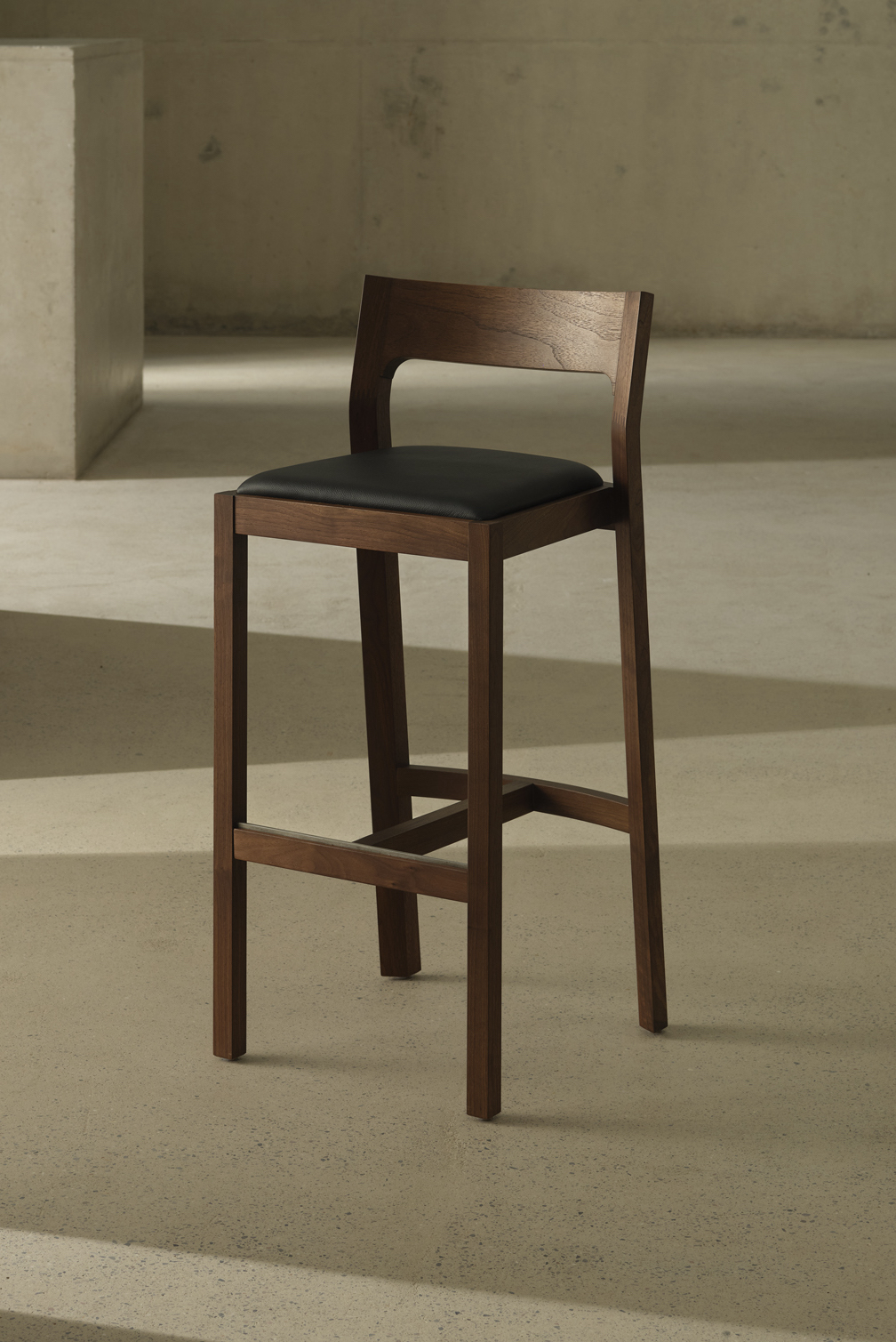
21.
Wassily Chair
Knoll
USA
Marcel Breuer’s famous design has been refreshed as a new edition available in a host of Bauhaus-inspired colours.
knoll.com
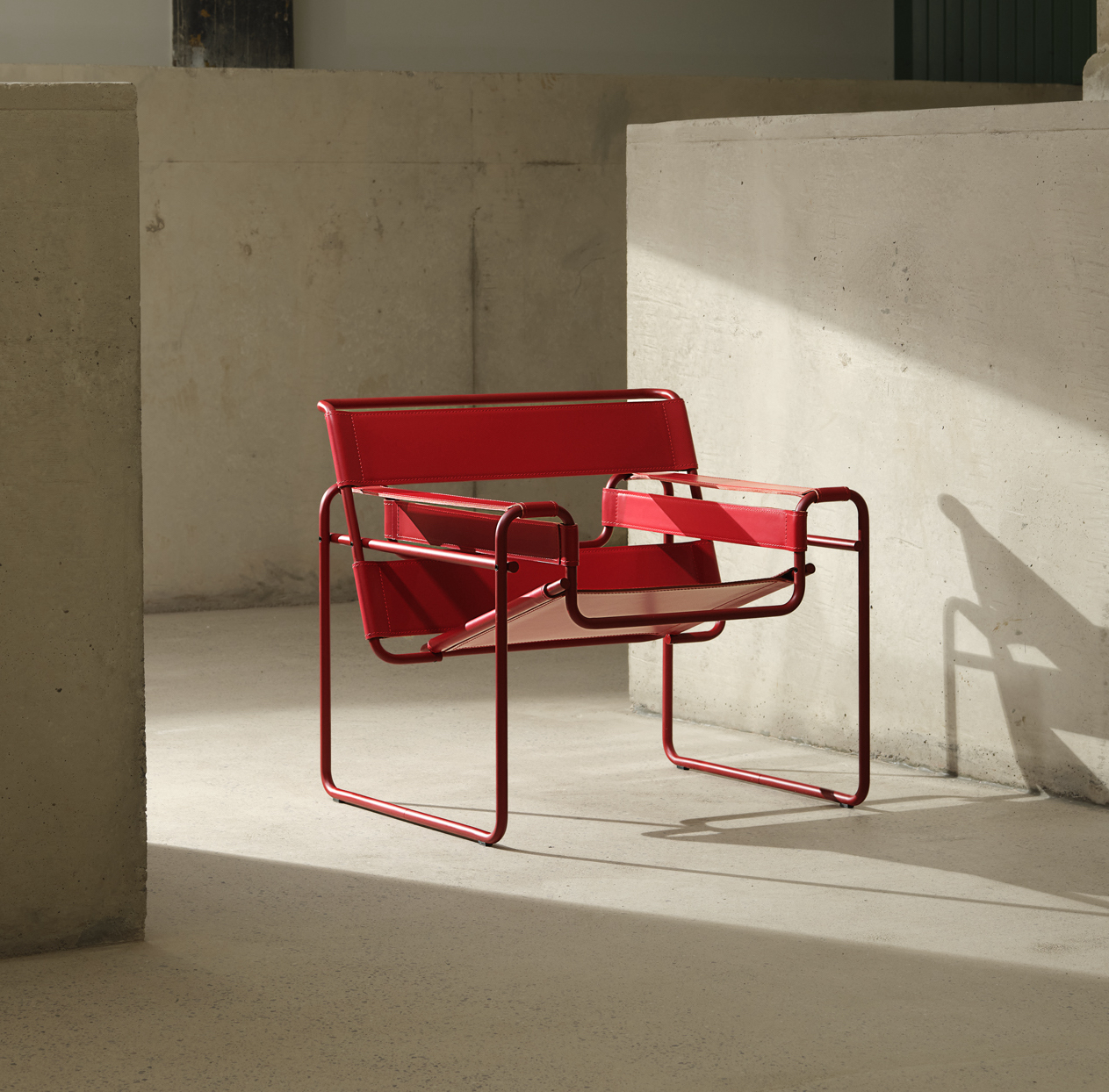
22.
Daystak Table and Chair
&Tradition
Denmark
To own a table or a chair by Robin Day, who helped to shape the look and feel of postwar Britain, is to have a piece of design history in your home. The striking Daystak collection from 1951 has just been reissued by & Tradition and exemplifies Day’s attention to detail and love of timber.
andtradition.com
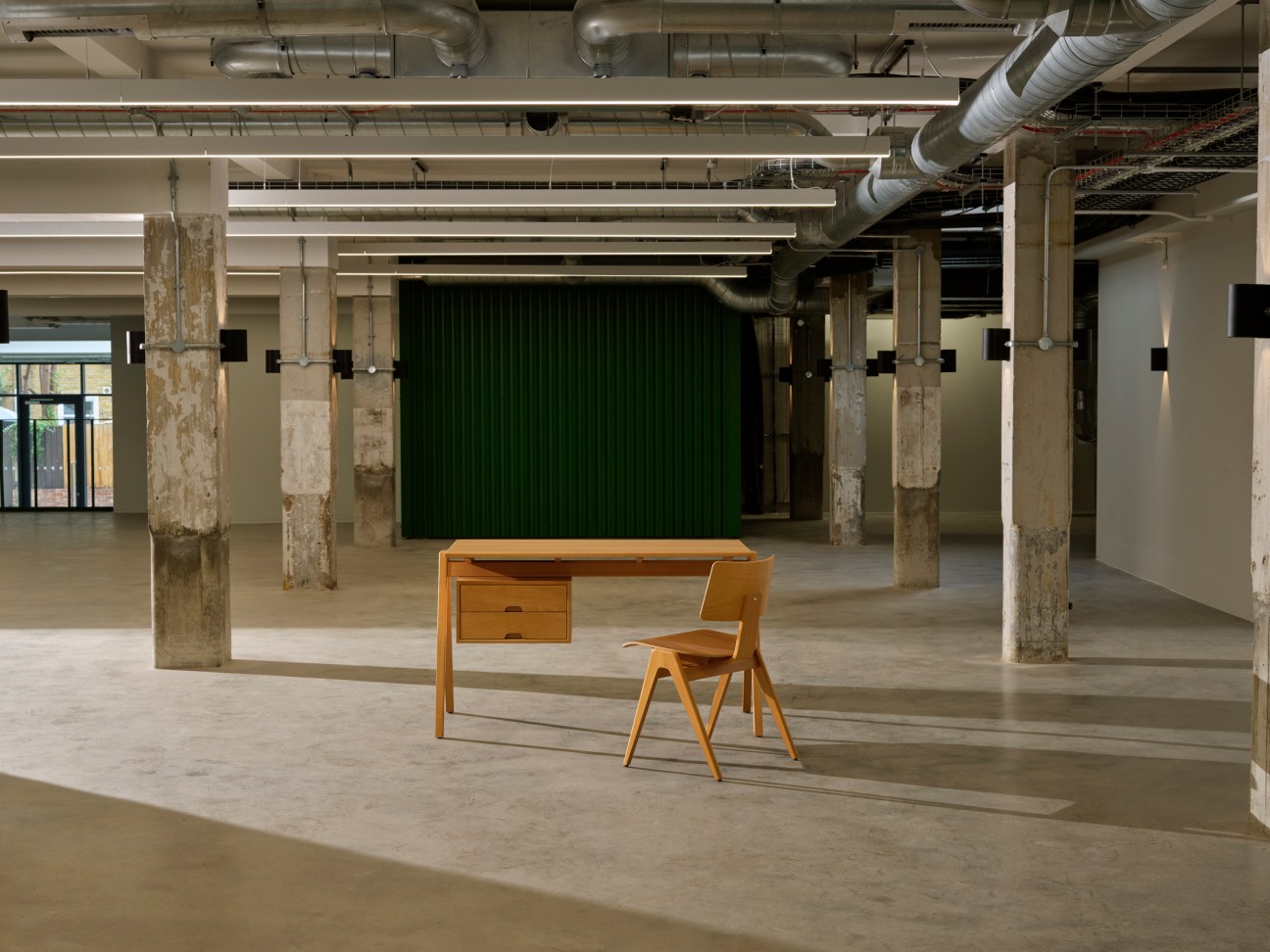
23.
Jepara Shelf
Reddie
Australia
Made from 100 per cent reclaimed teak wood, the Jepara shelving system is an impressive work by Reddie, a brand established by Caroline and Andrew Olah. Highlights of this design include the sleek metal corners that connect the shelves to the frame and provide a striking contrast with the solid wood.
reddie.com.au
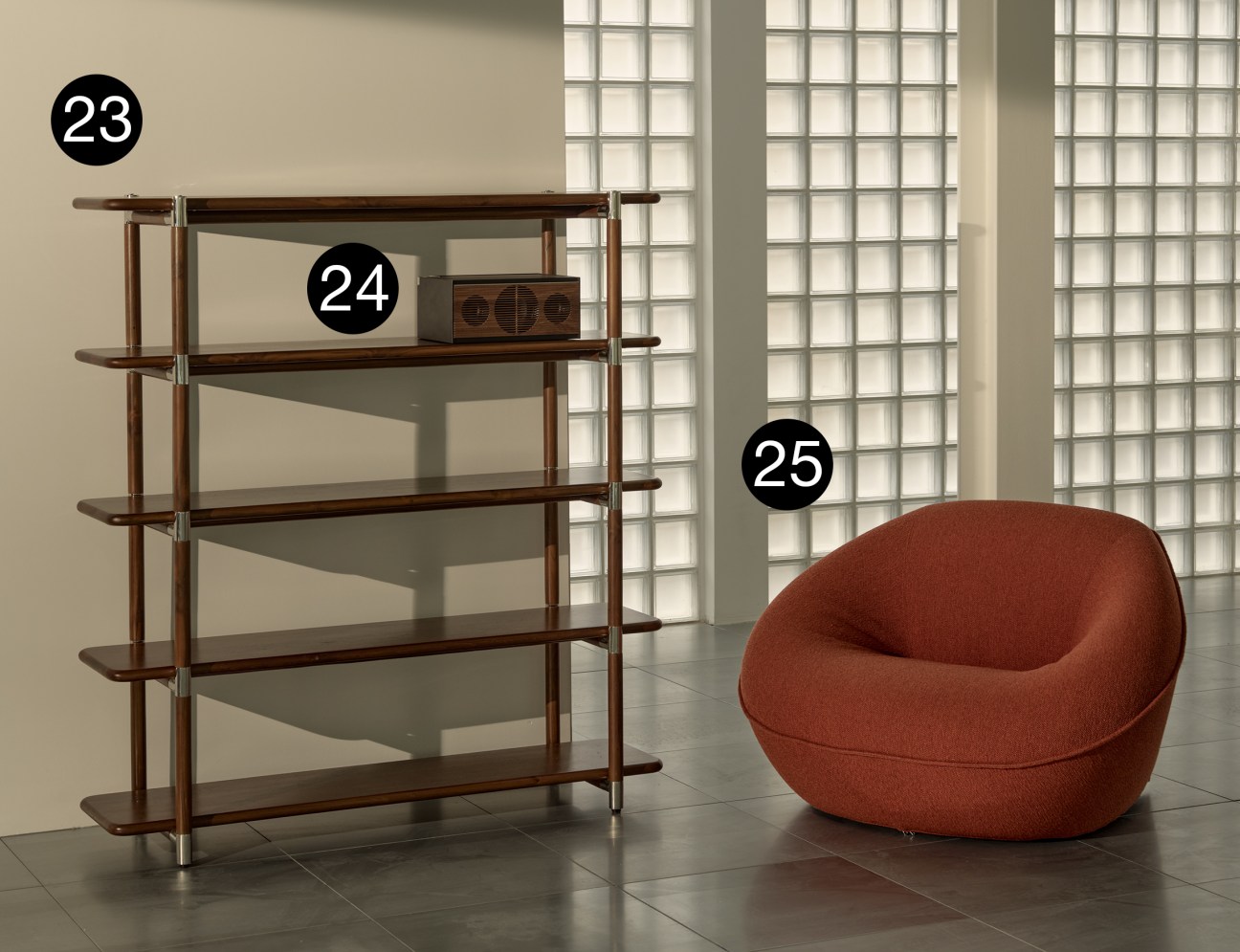
24.
PR Link speaker
La Boite
France
La Boite’s multiroom speaker, created in collaboration with Micromega, has a touch of the mid-century about it. Stocked by Silvera, it combines digital with tactile analogue features in a clean, compact form. The walnut-coloured front grille protects the speakers, creating a minimalist musical marvel.
laboiteconcept.com
25.
Tortello armchair
B&B Italia
Italy
For an armchair with personality, look no further than design duo Edward Barber and Jay Osgerby’s playfully plump Tortello. Recently unveiled by B&B Italia, the name of the curvaceous piece derives from tortello, a folded pasta shape associated with the Lombardy region of Italy.
bebitalia.com


